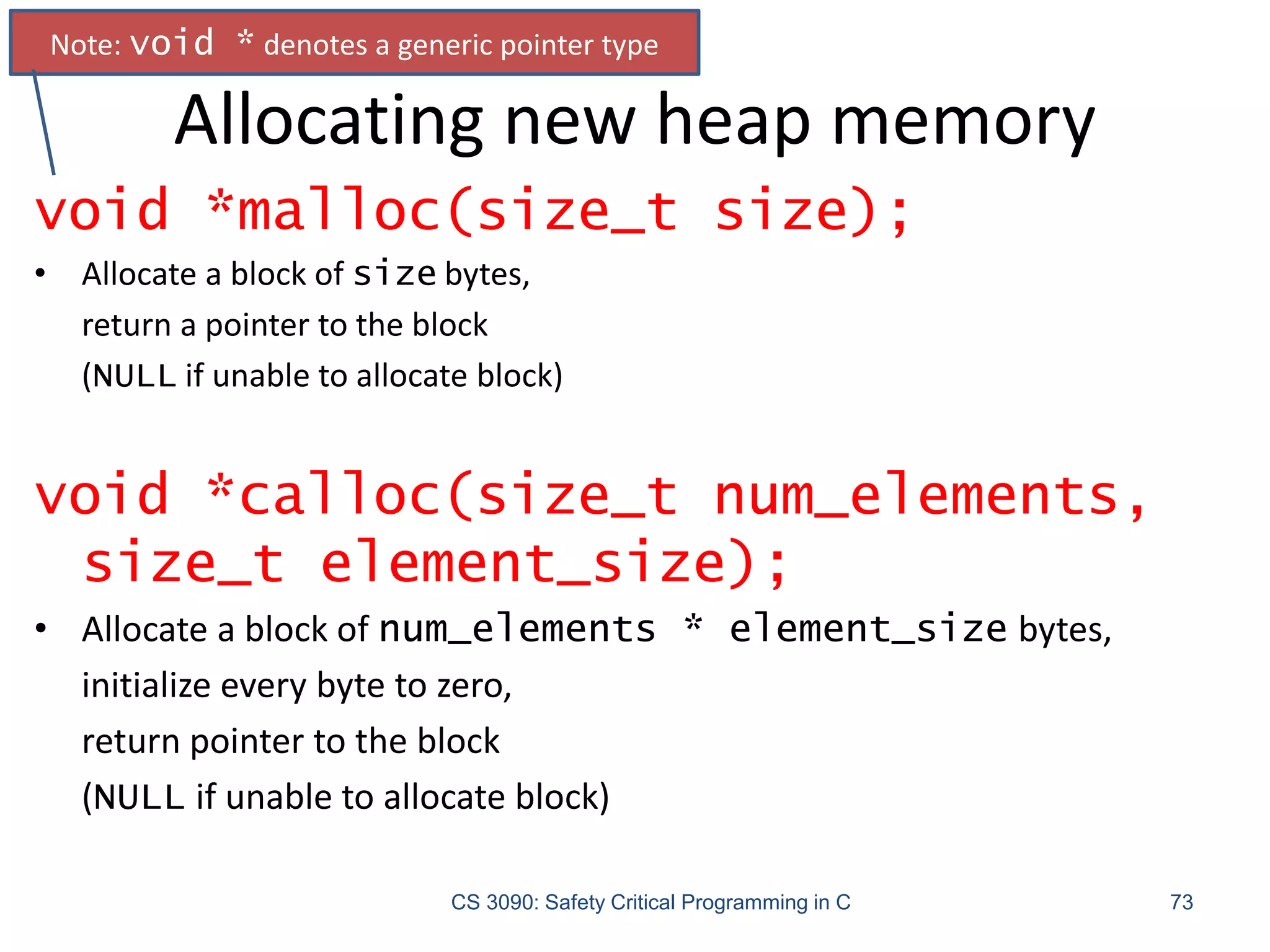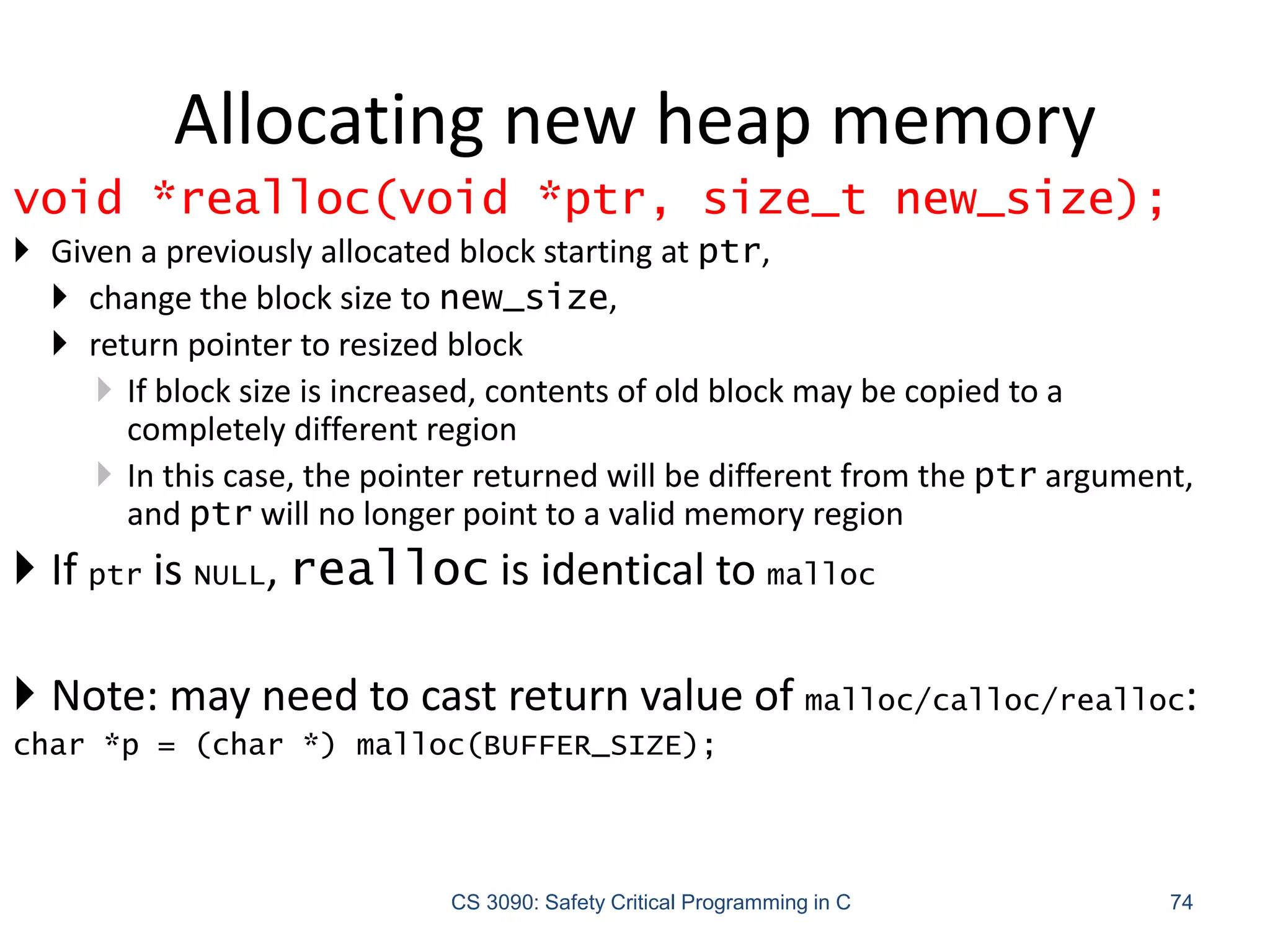This document provides an overview of a 5-day training course on C basics for data structures. The course will cover topics such as arrays, pointers, and structures. Specific topics for arrays include how they are stored in memory, static versus dynamic allocation, and pointers to arrays. Pointers will cover what they are, pointer arithmetic, and pointers to pointers. The document includes example code for allocating memory dynamically using malloc and free.

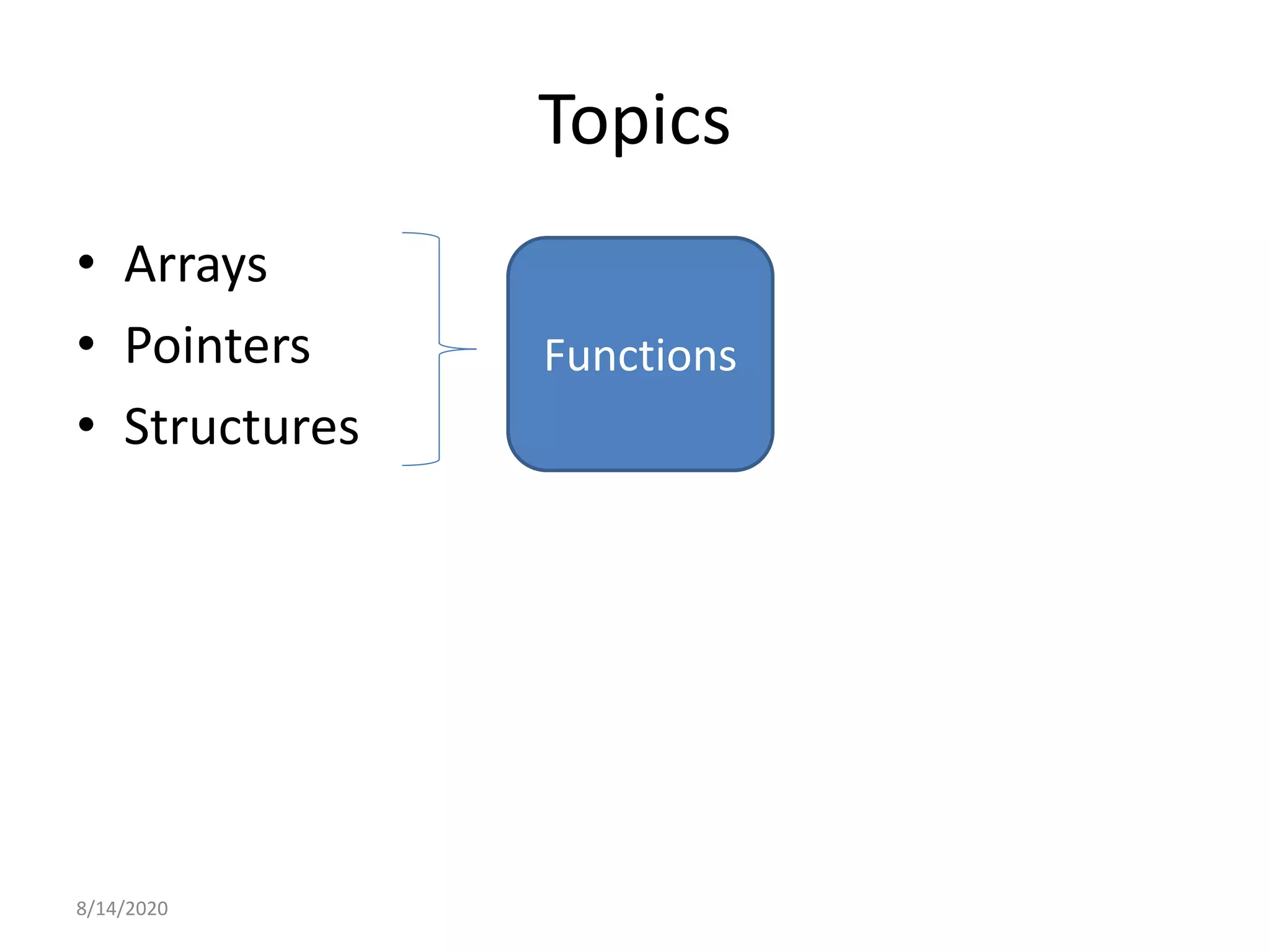
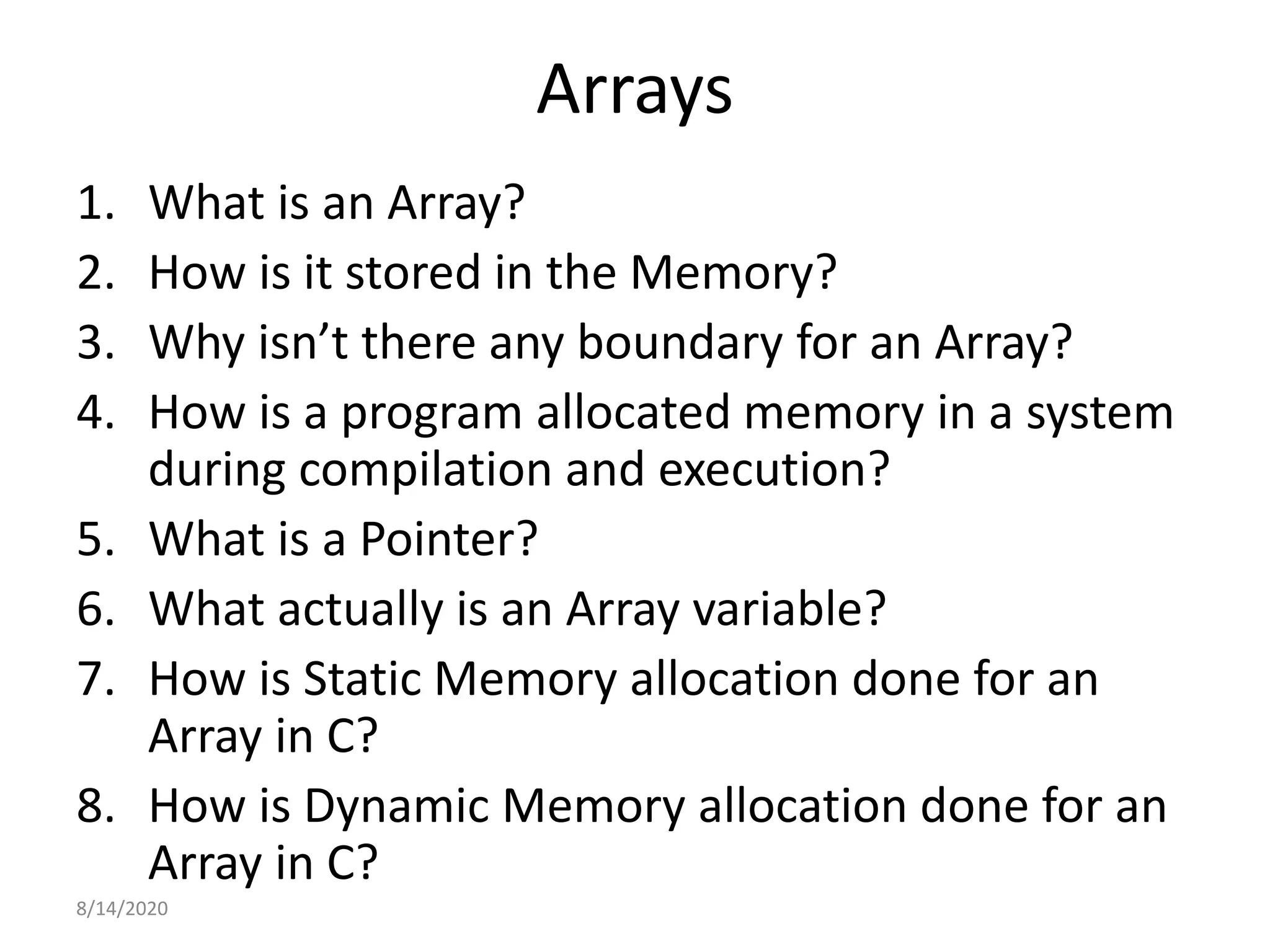
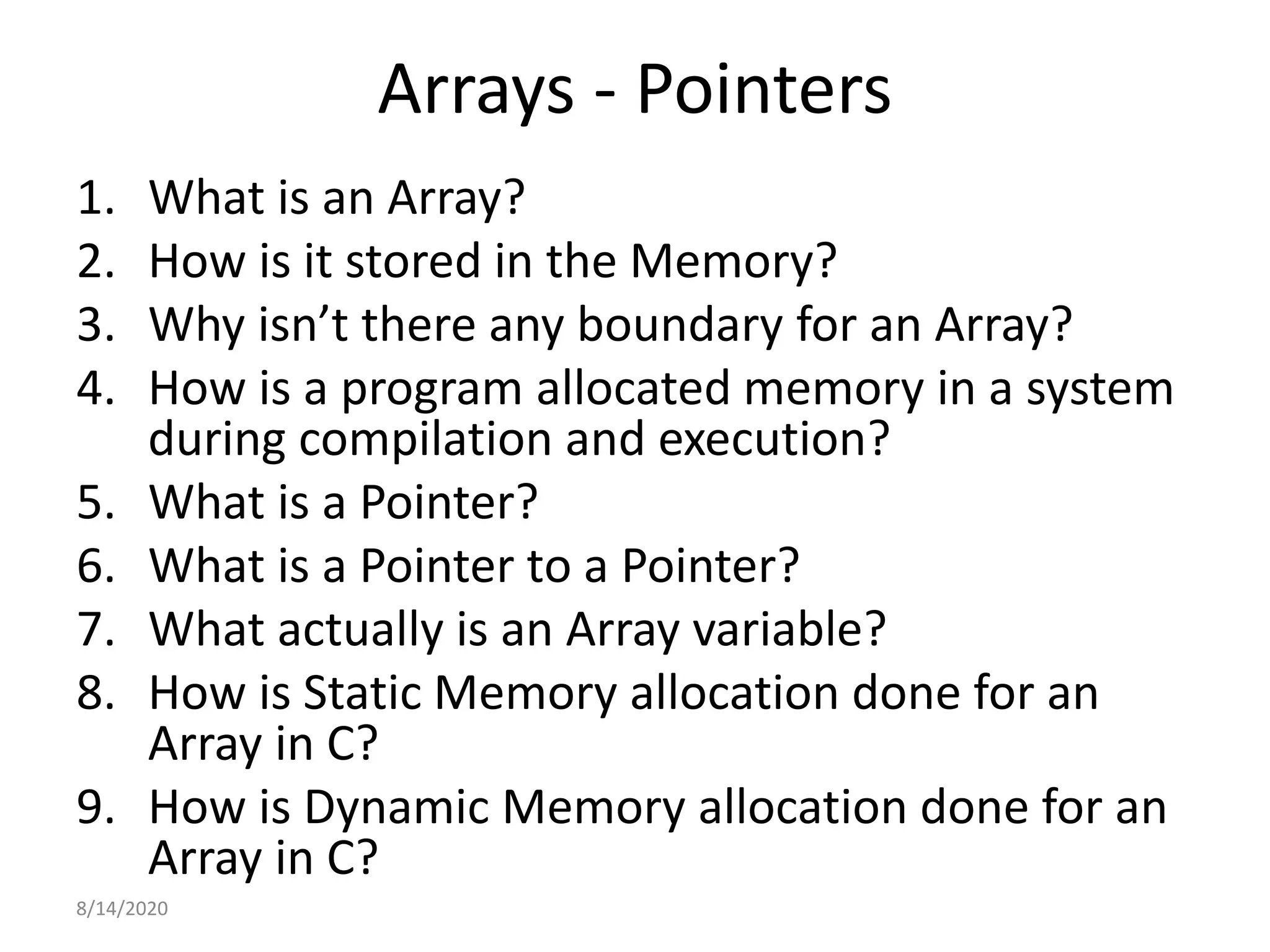
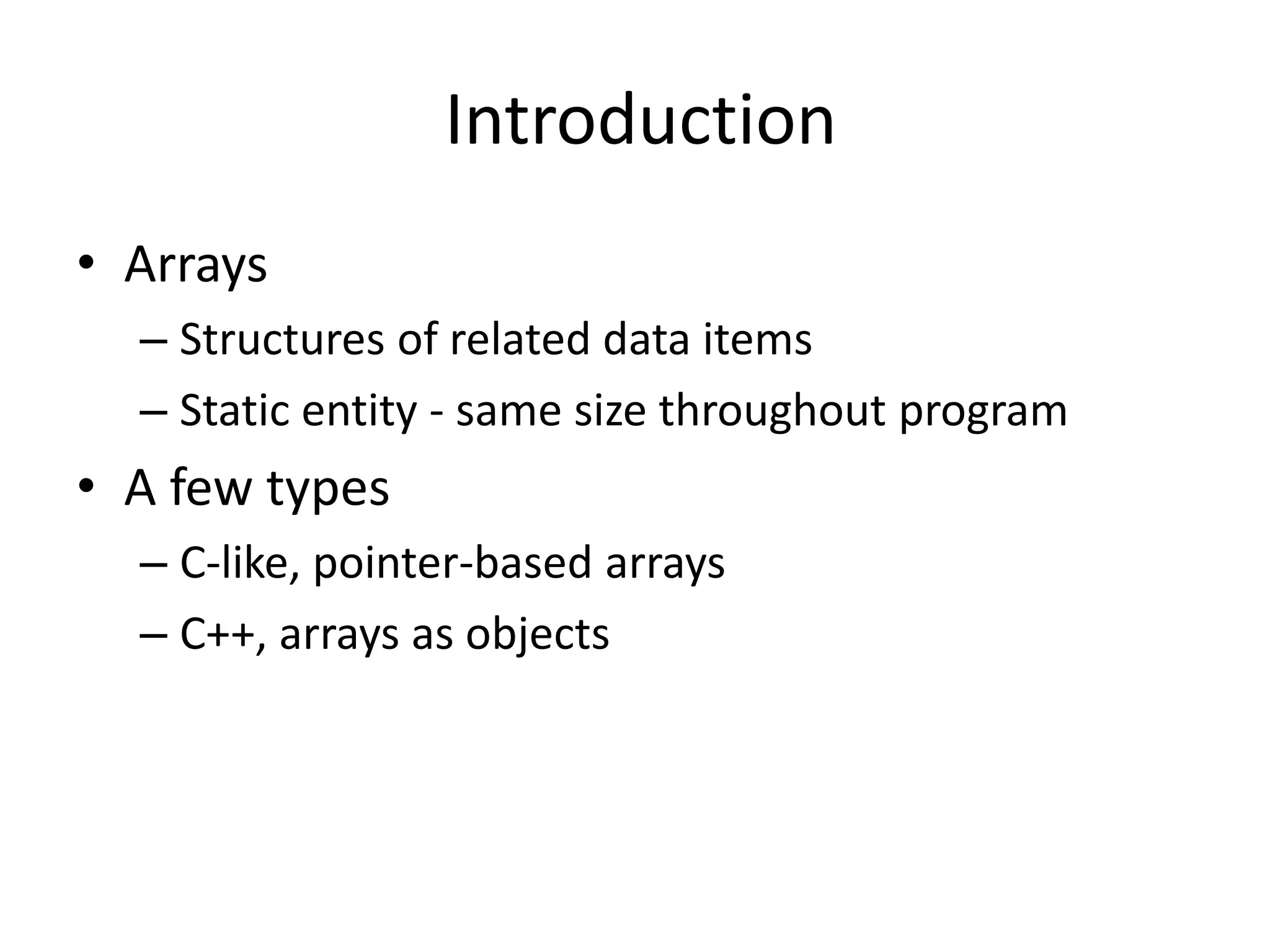
![Arrays
c[6]
-45
6
0
72
1543
-89
0
62
-3
1
6453
78
Name of array (Note that all
elements of this array have
the same name, c)
c[0]
c[1]
c[2]
c[3]
c[11]
c[10]
c[9]
c[8]
c[7]
c[5]
c[4]
Position number of the element
within array c](https://image.slidesharecdn.com/1-200814074855/75/1-C-Basics-for-Data-Structures-Bridge-Course-6-2048.jpg)
![Declaring Arrays
• Declaring arrays - specify:
– Name
– Type of array
– Number of elements
– Examples
int c[ 10 ];
float hi[ 3284 ];
• Declaring multiple arrays of same type
– Similar format as other variables
– Example
int b[ 100 ], x[ 27 ];](https://image.slidesharecdn.com/1-200814074855/75/1-C-Basics-for-Data-Structures-Bridge-Course-7-2048.jpg)
![Examples Using Arrays
• Initializers
int n[ 5 ] = { 1, 2, 3, 4, 5 };
– If not enough initializers, rightmost elements become 0
– If too many initializers, a syntax error is generated
int n[ 5 ] = { 0 }
– Sets all the elements to 0
• If size omitted, the initializers determine it
int n[] = { 1, 2, 3, 4, 5 };
– 5 initializers, therefore n is a 5 element array](https://image.slidesharecdn.com/1-200814074855/75/1-C-Basics-for-Data-Structures-Bridge-Course-8-2048.jpg)
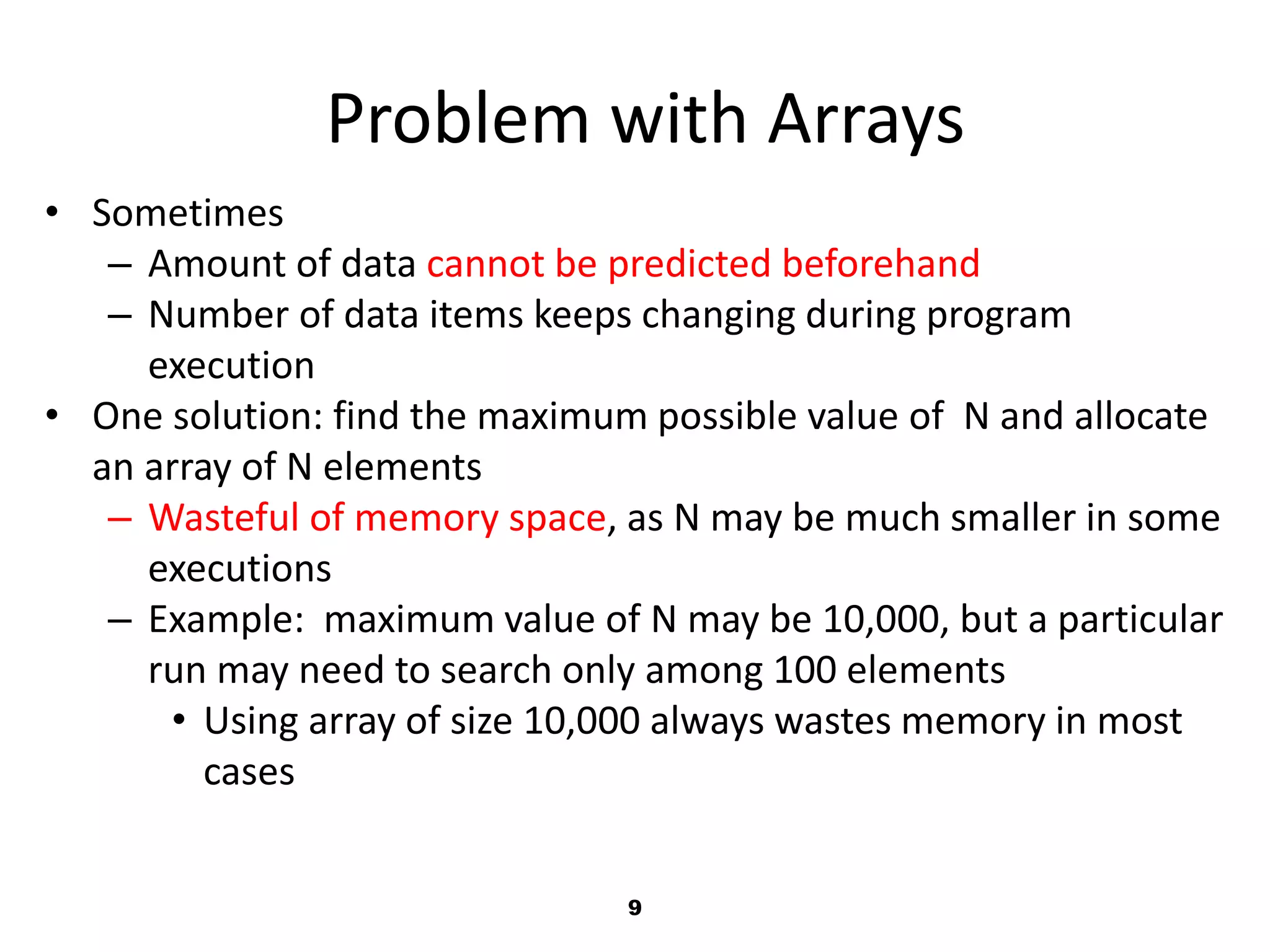
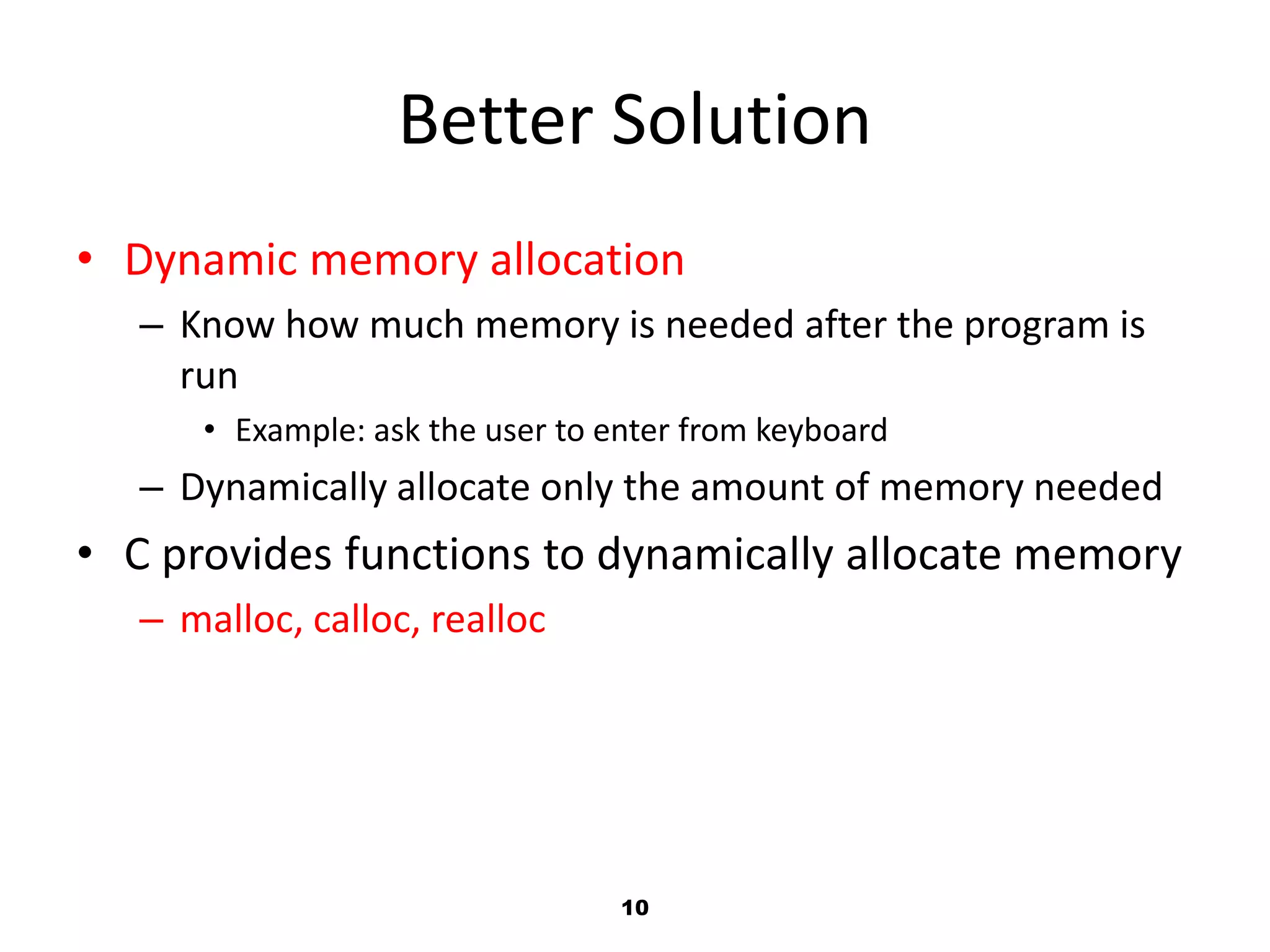
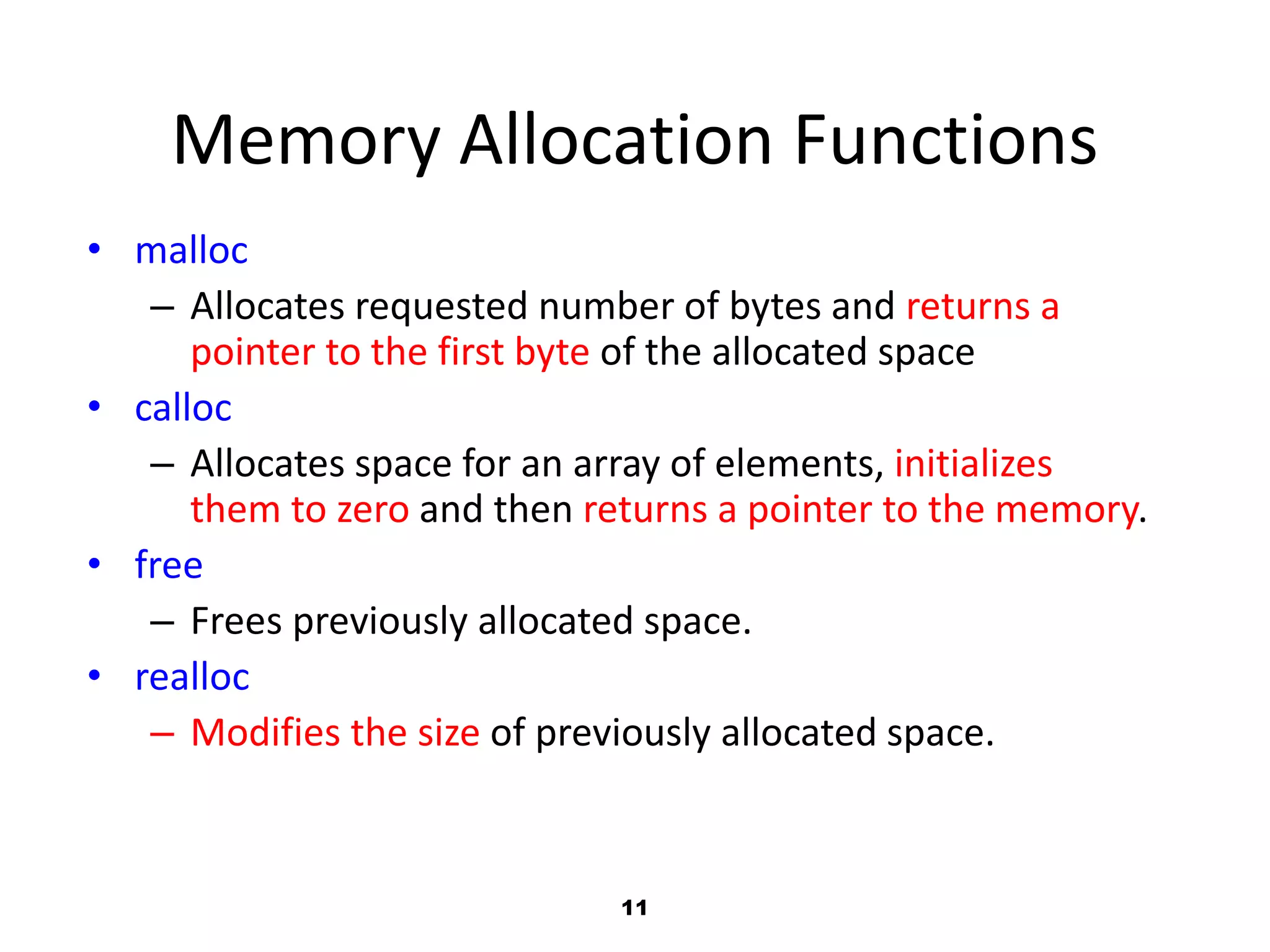
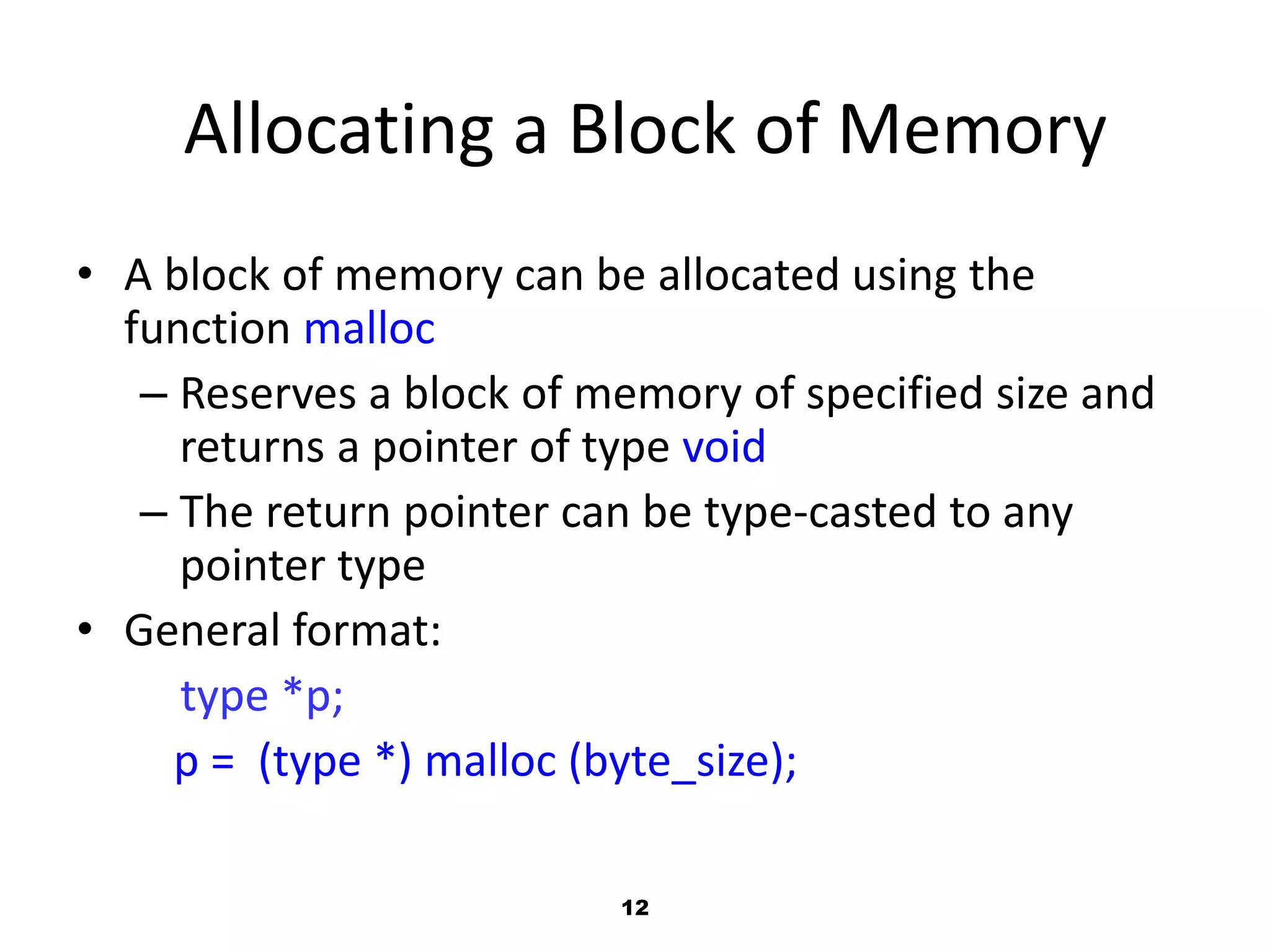
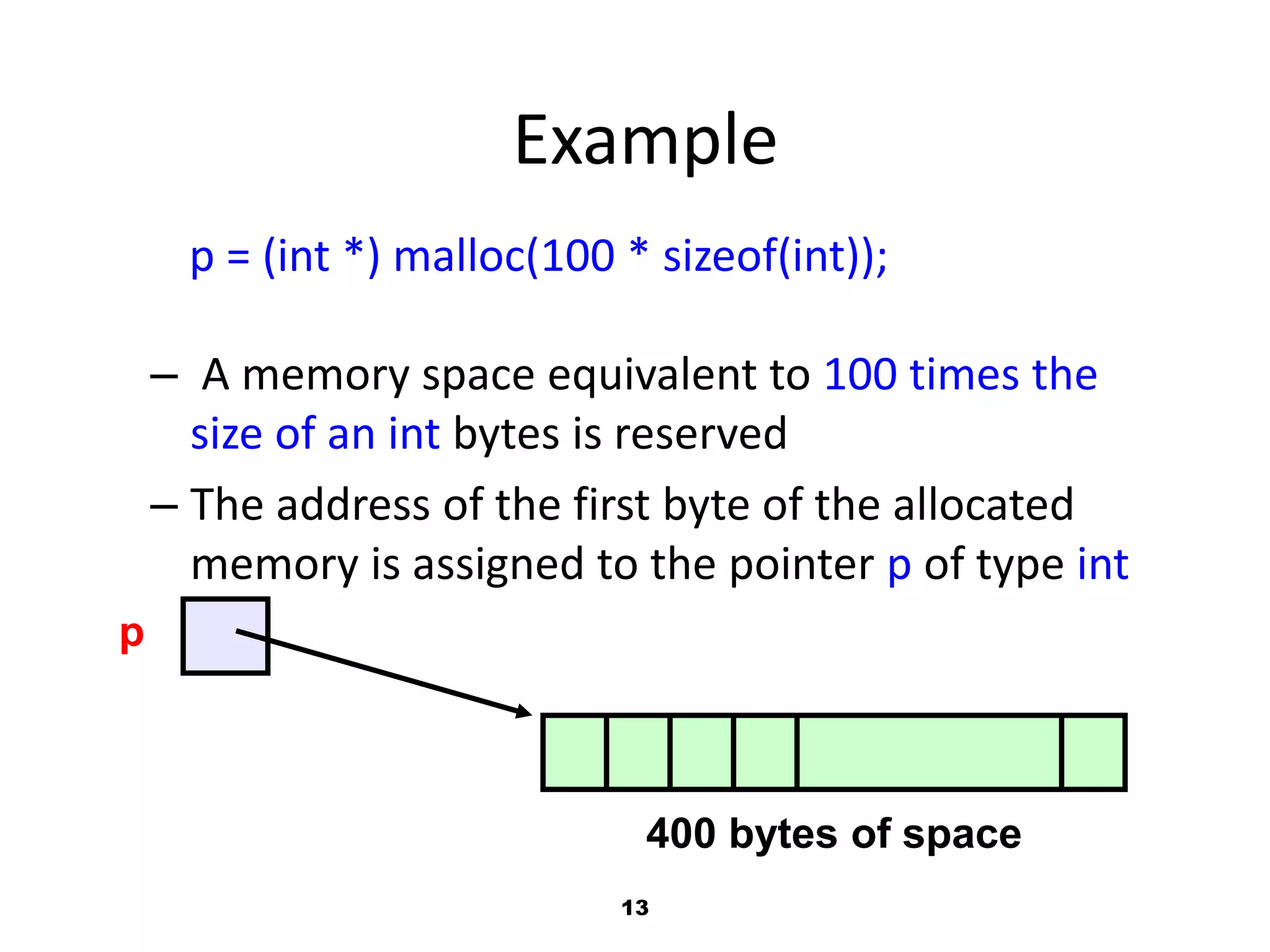
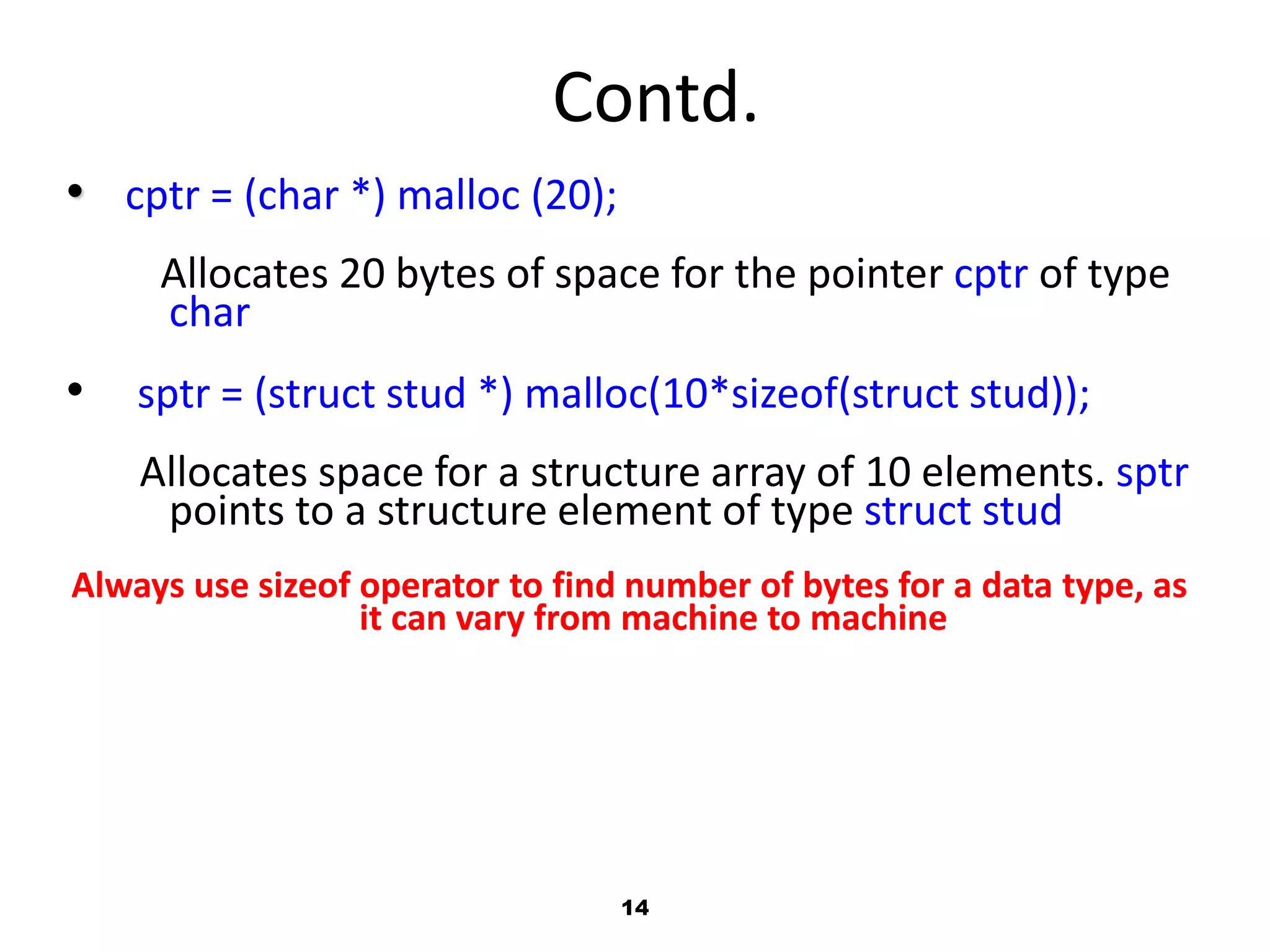
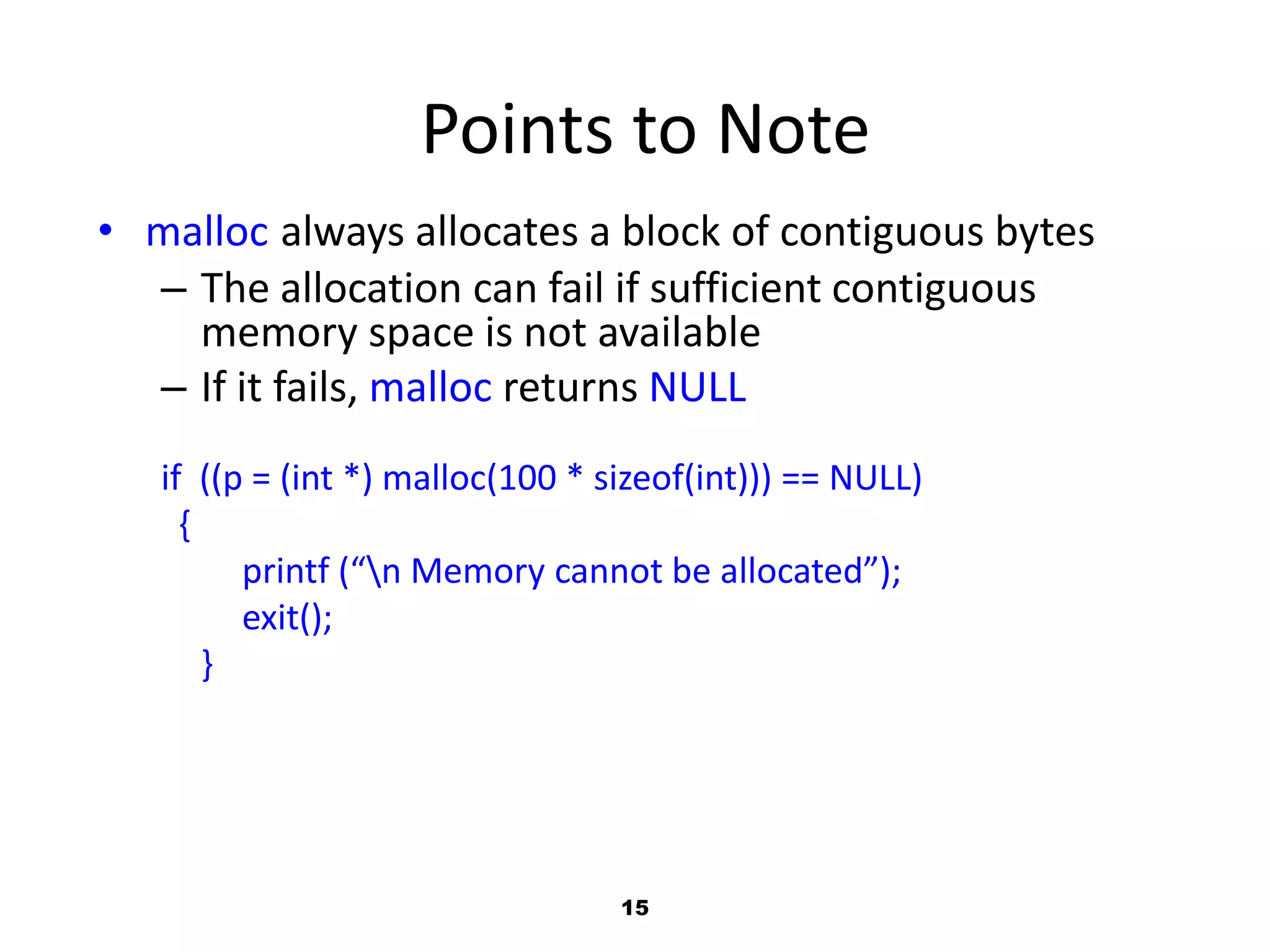
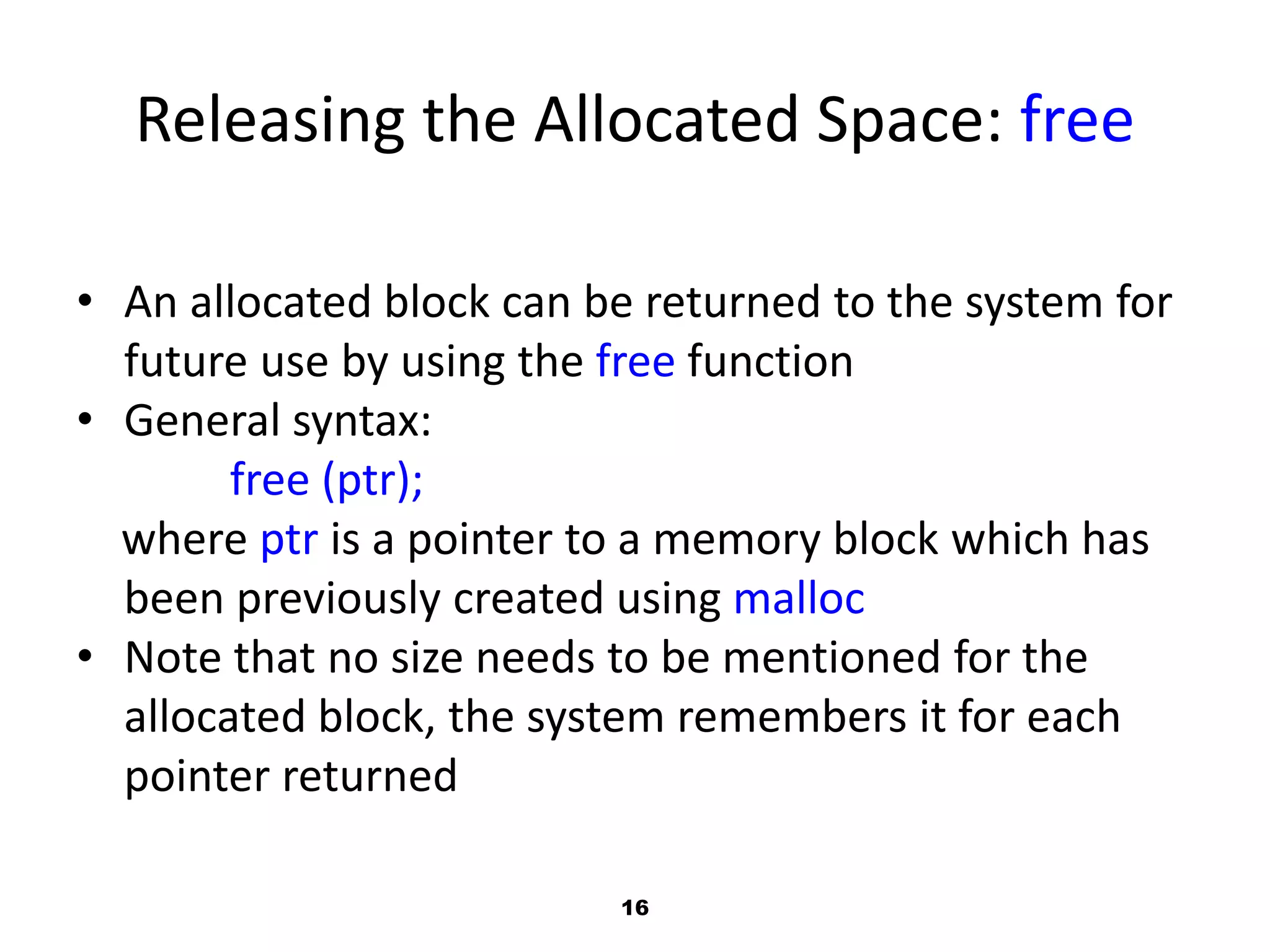
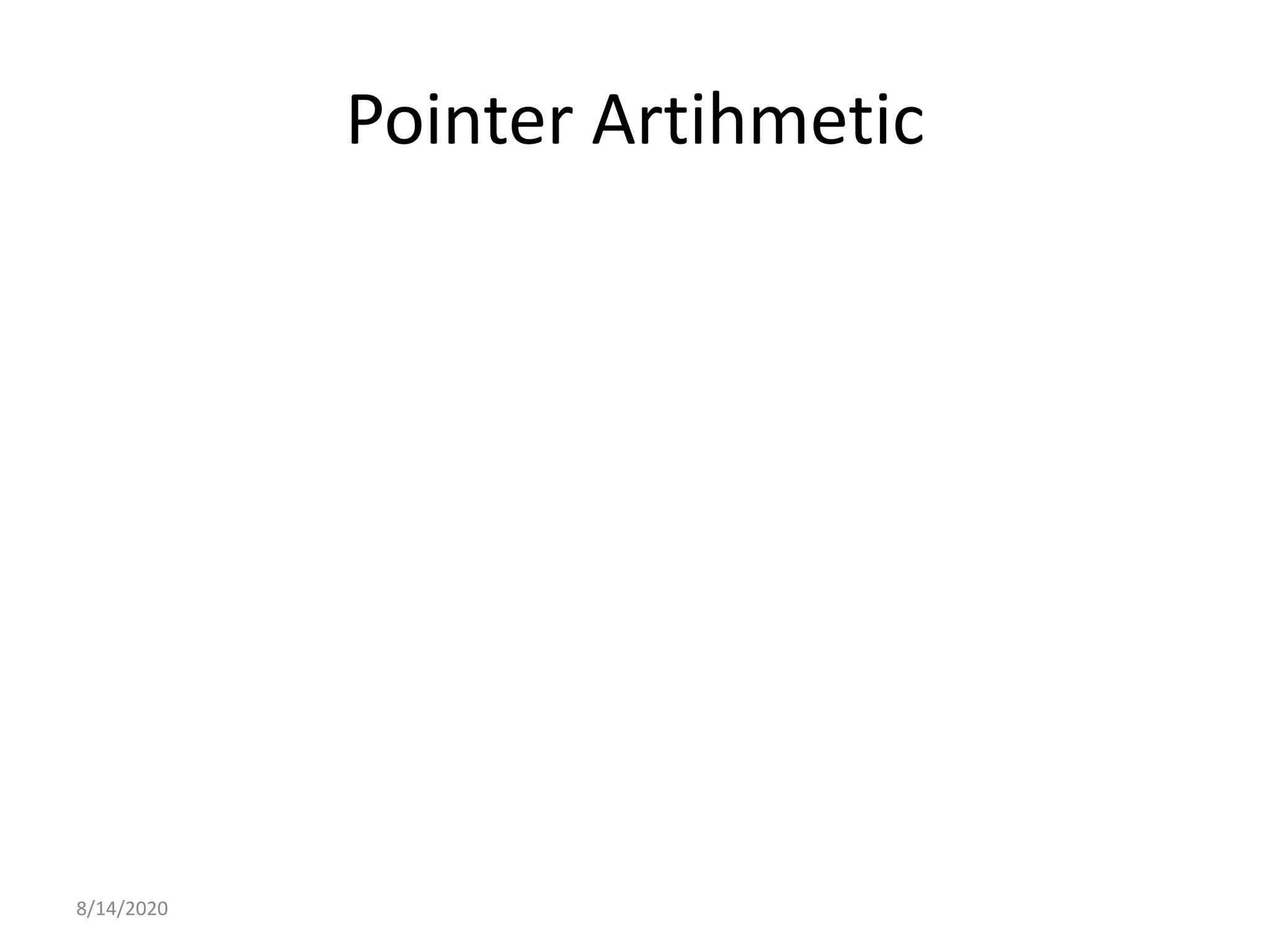
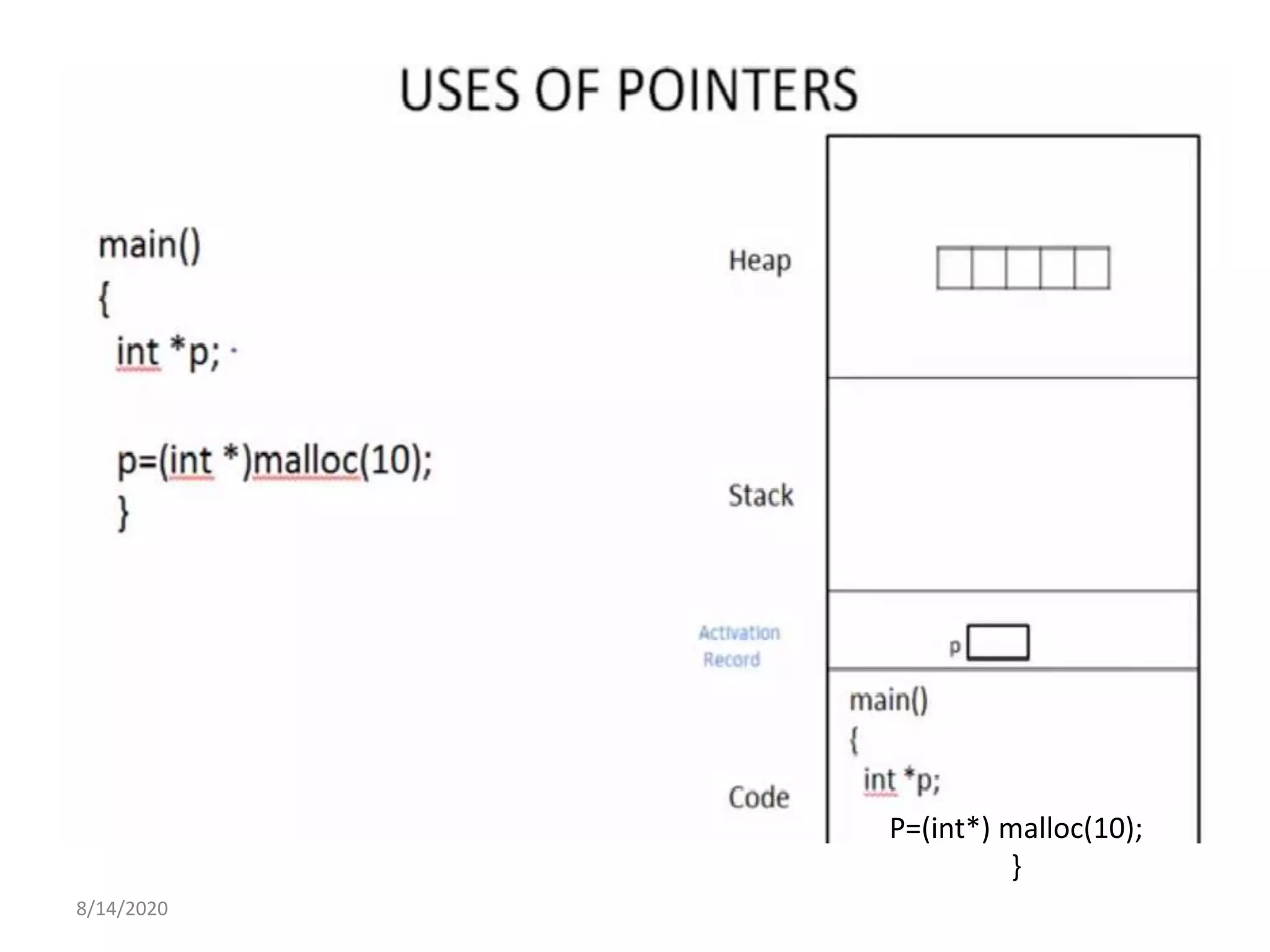
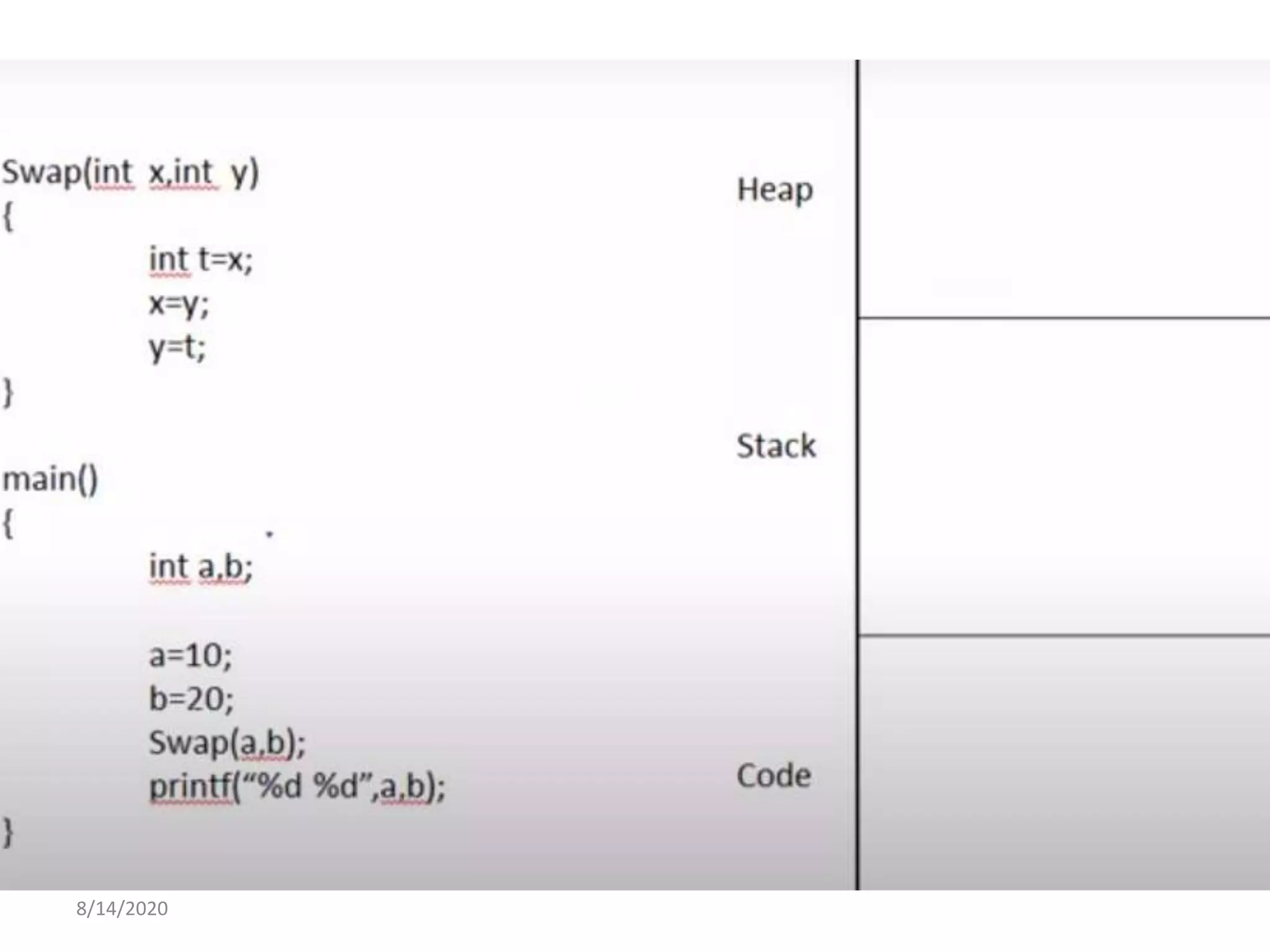
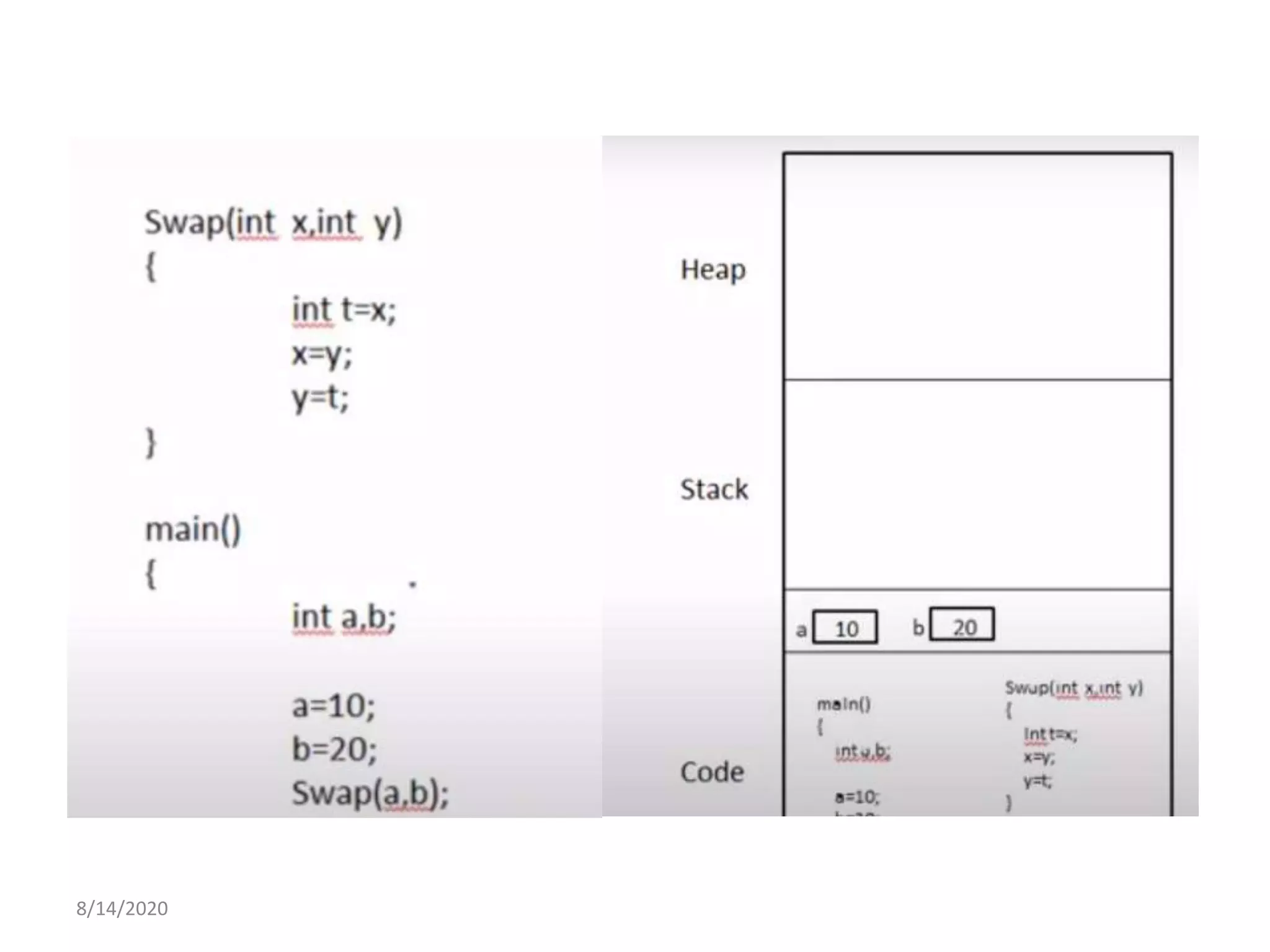
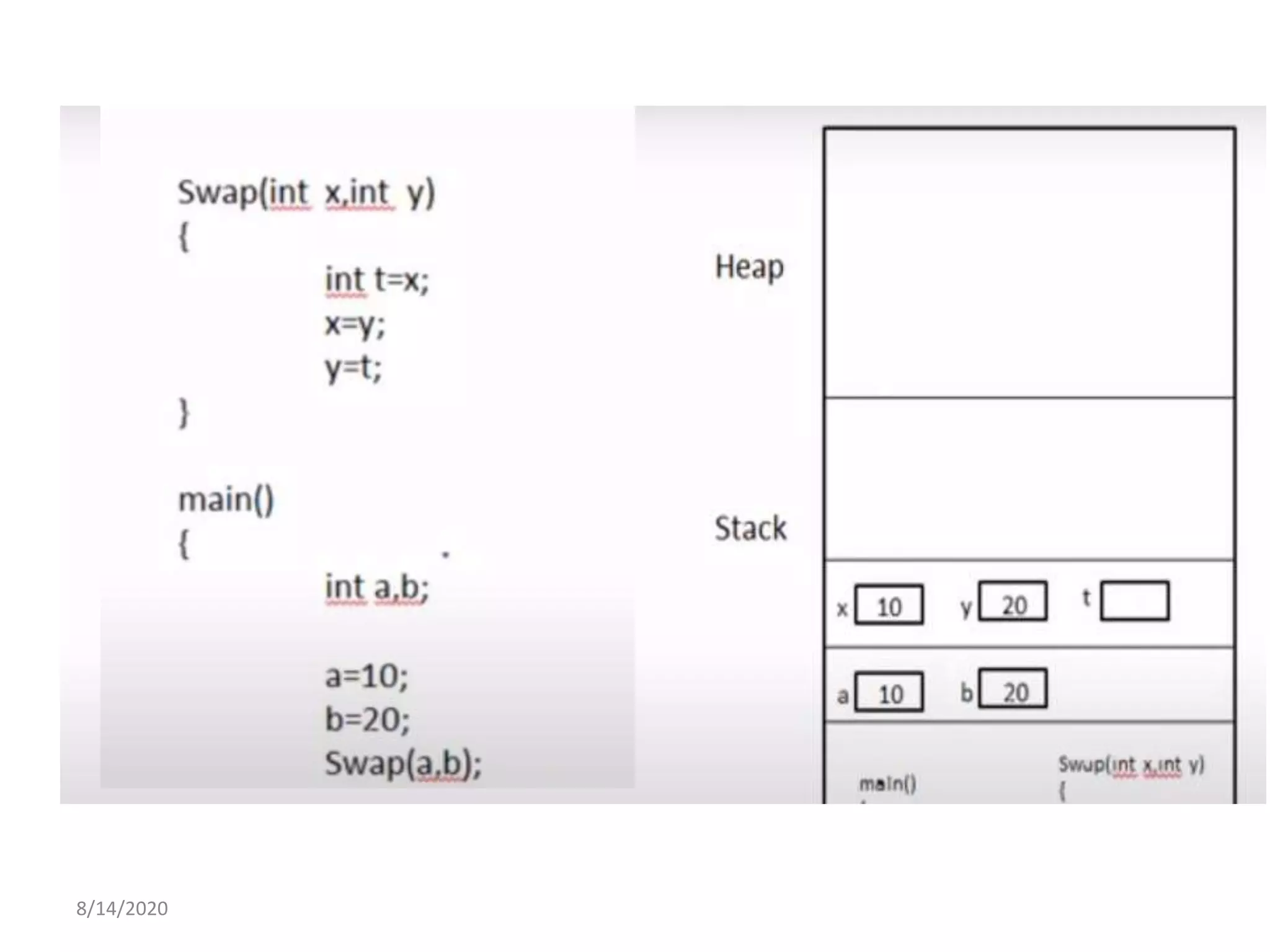
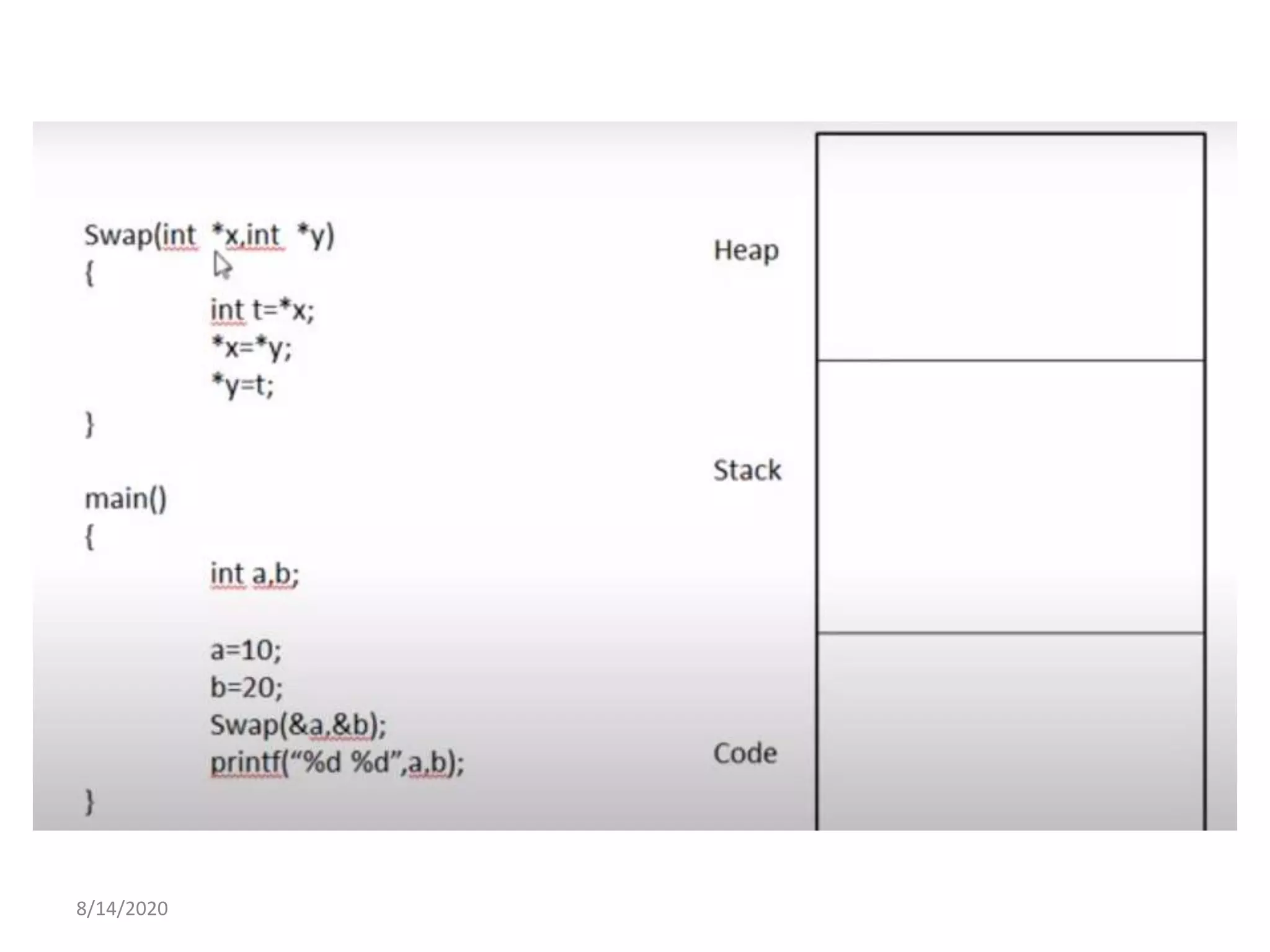
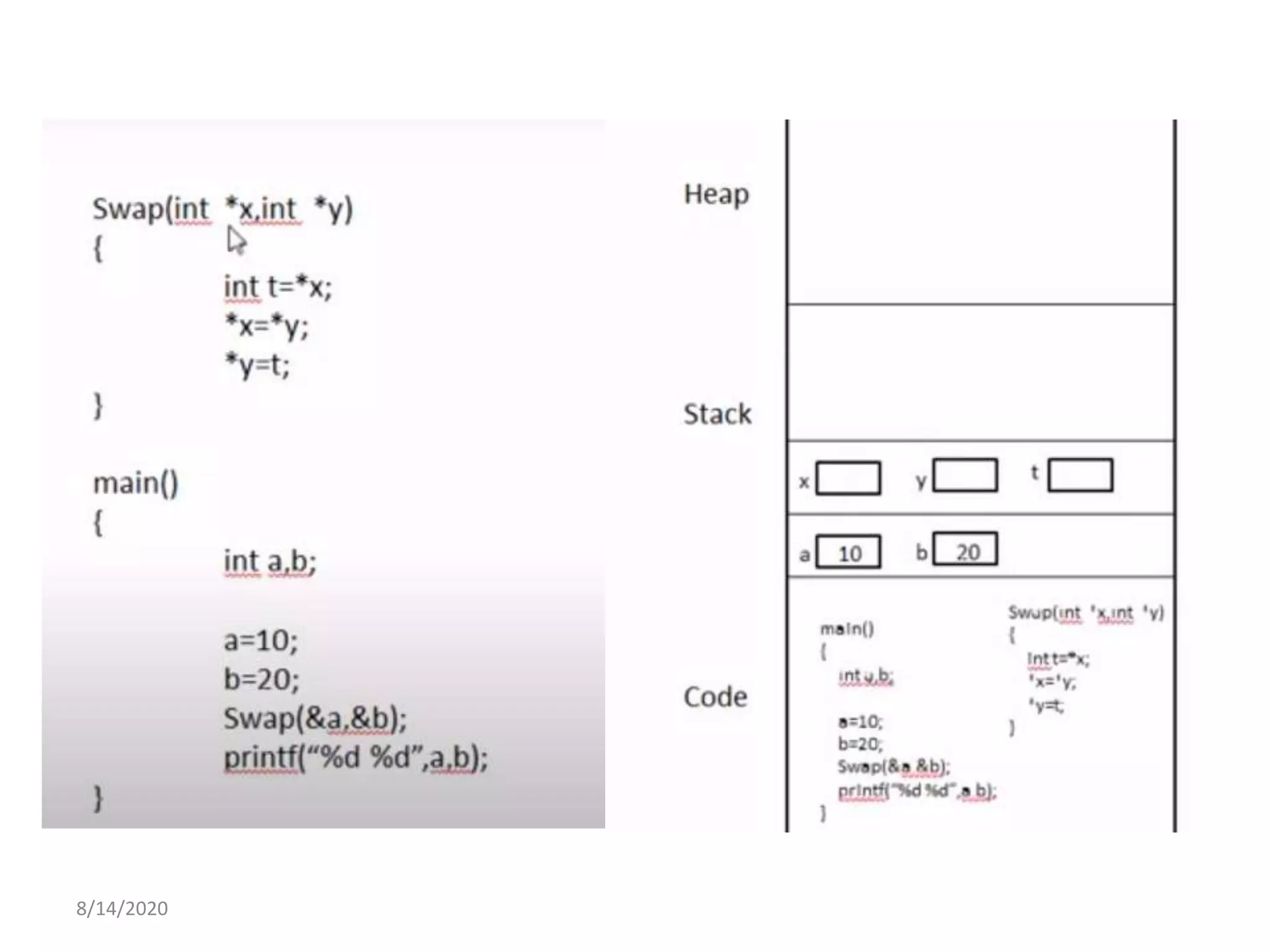
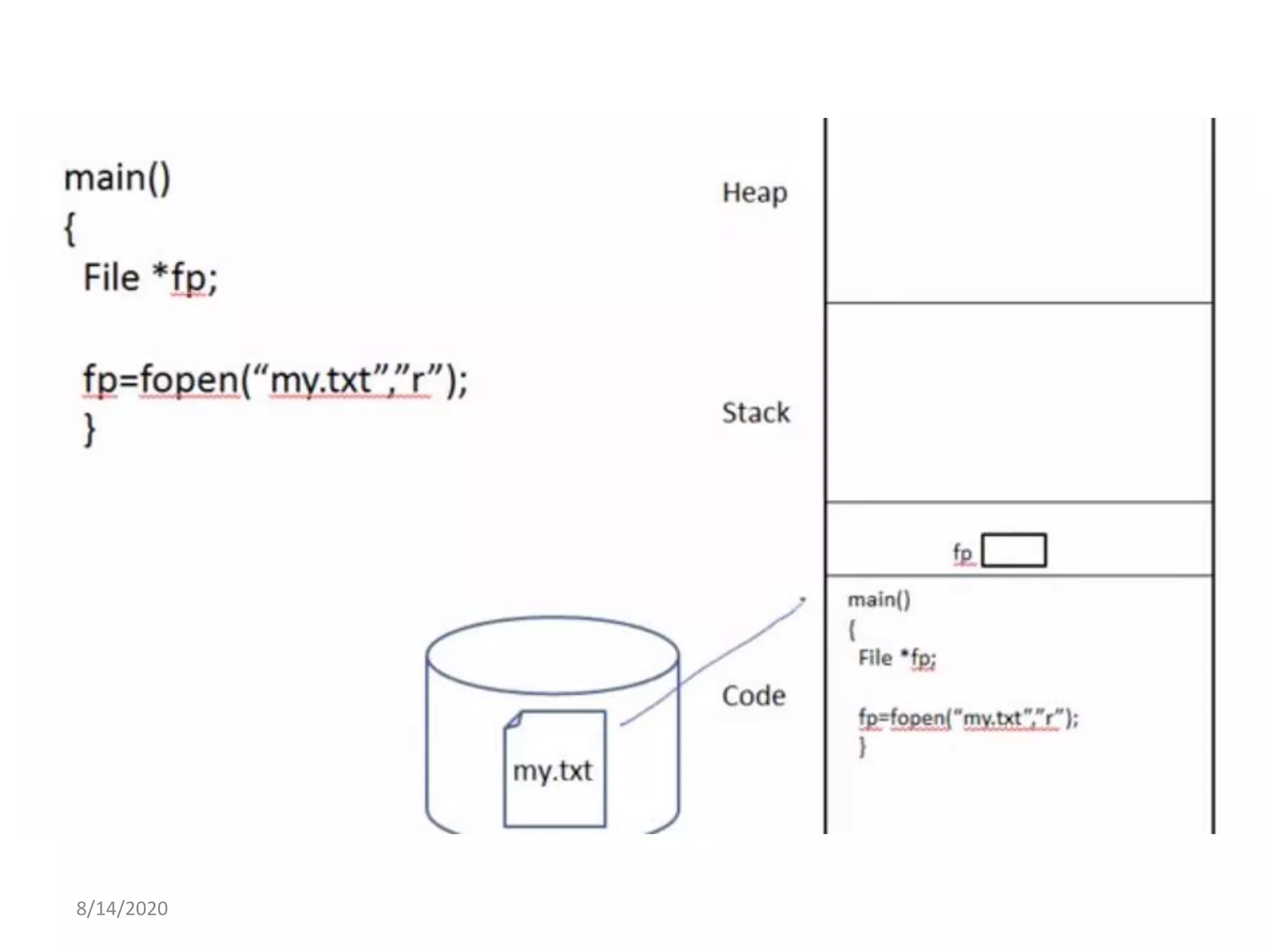
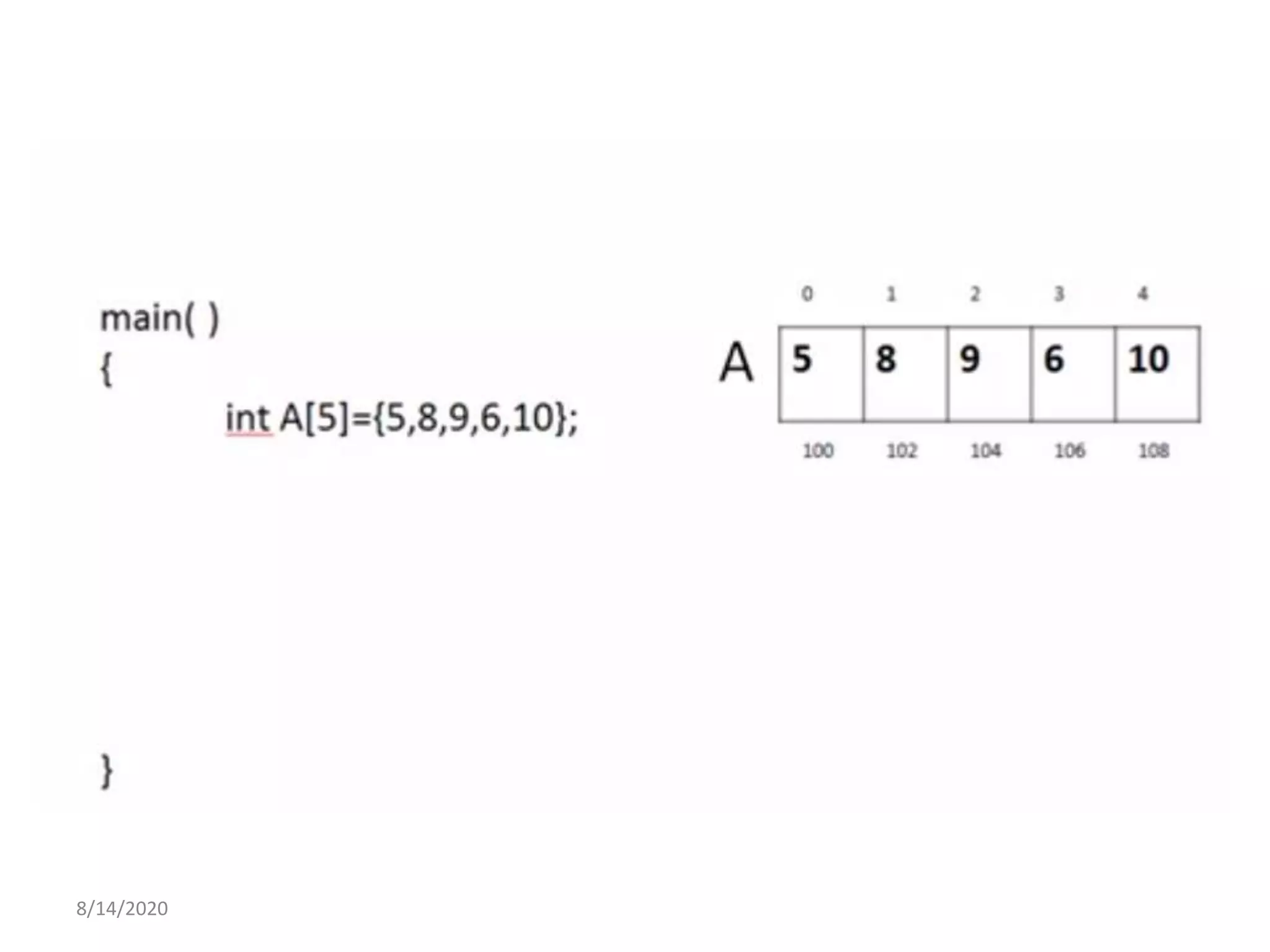
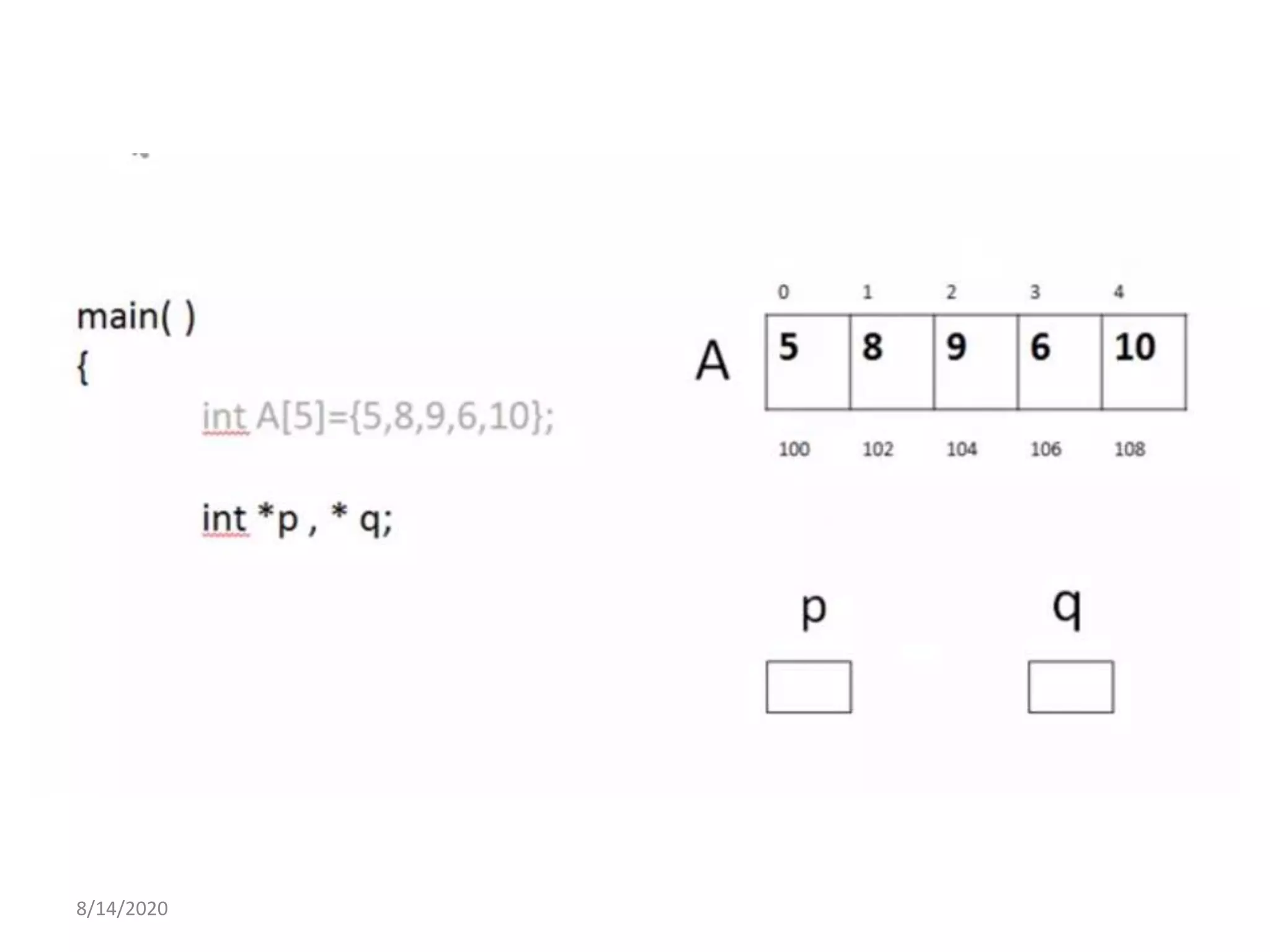
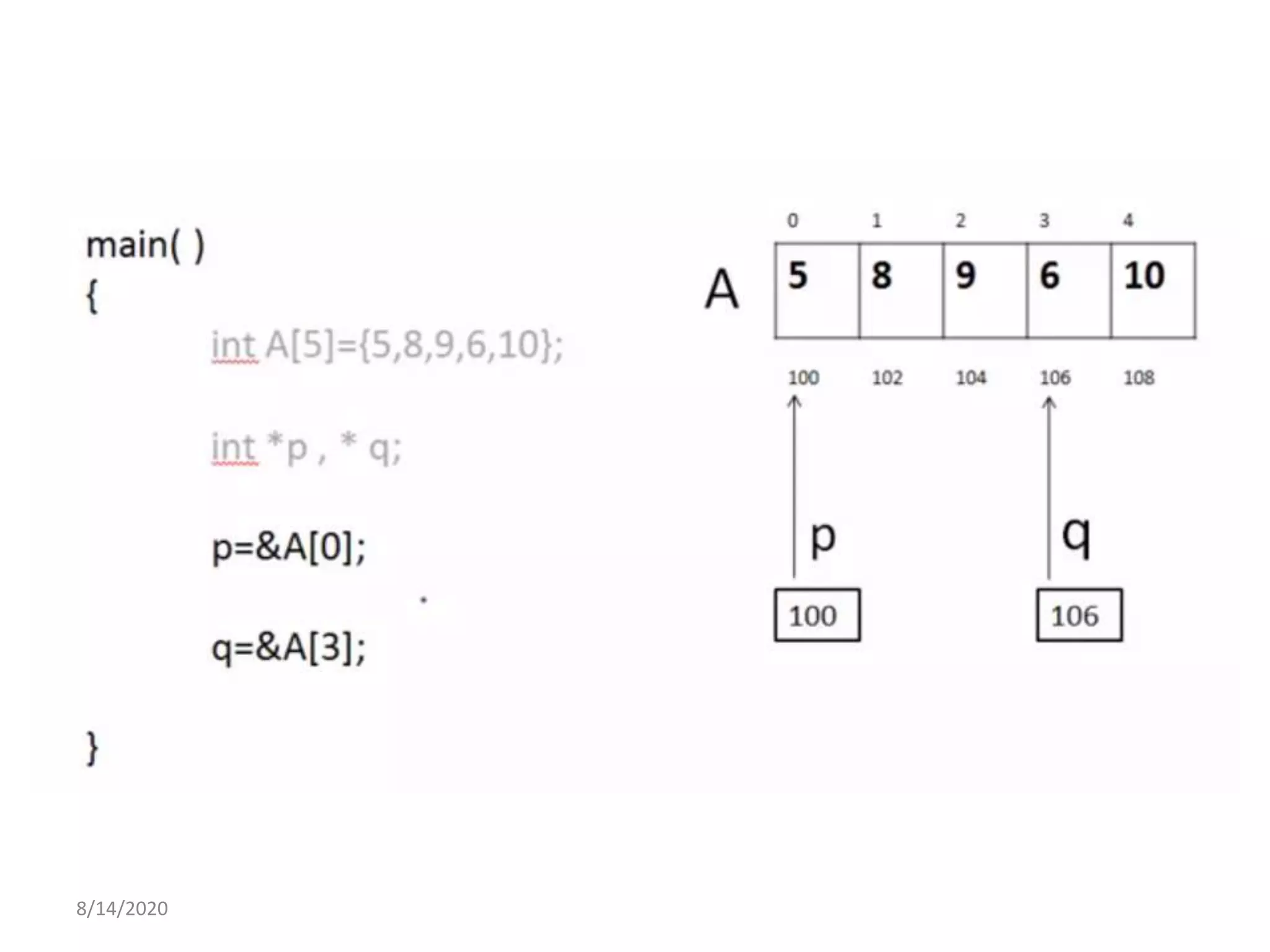
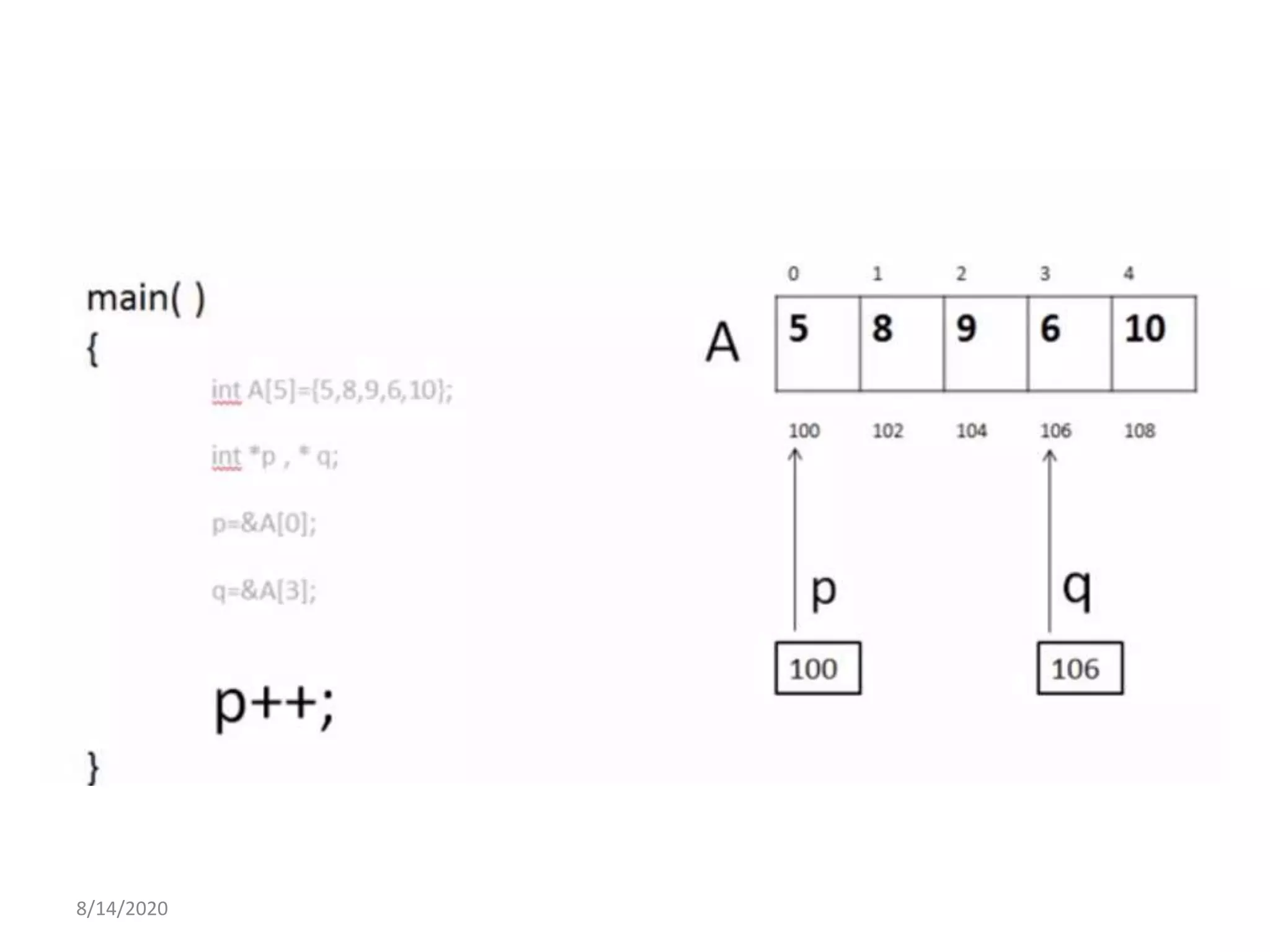
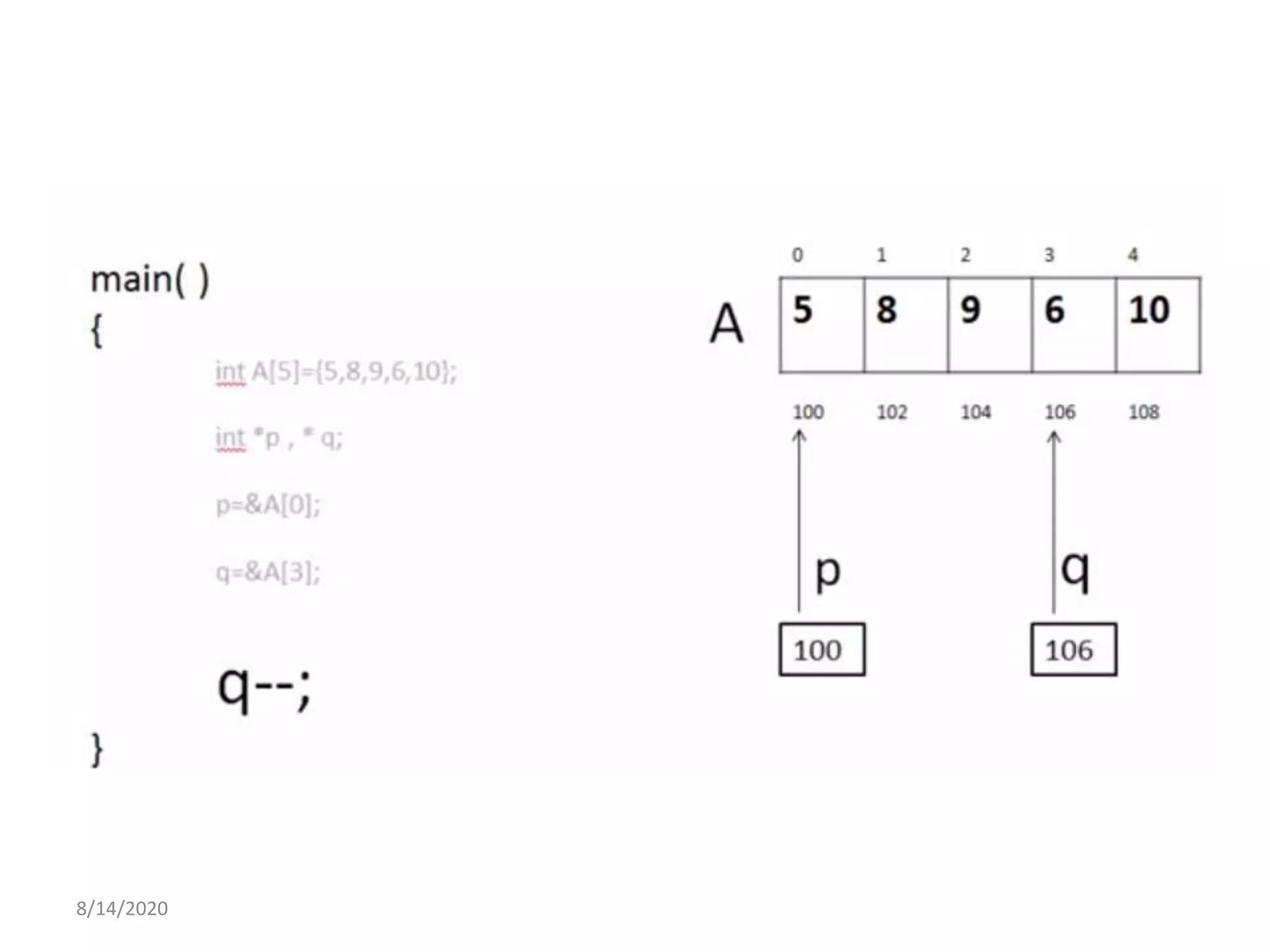
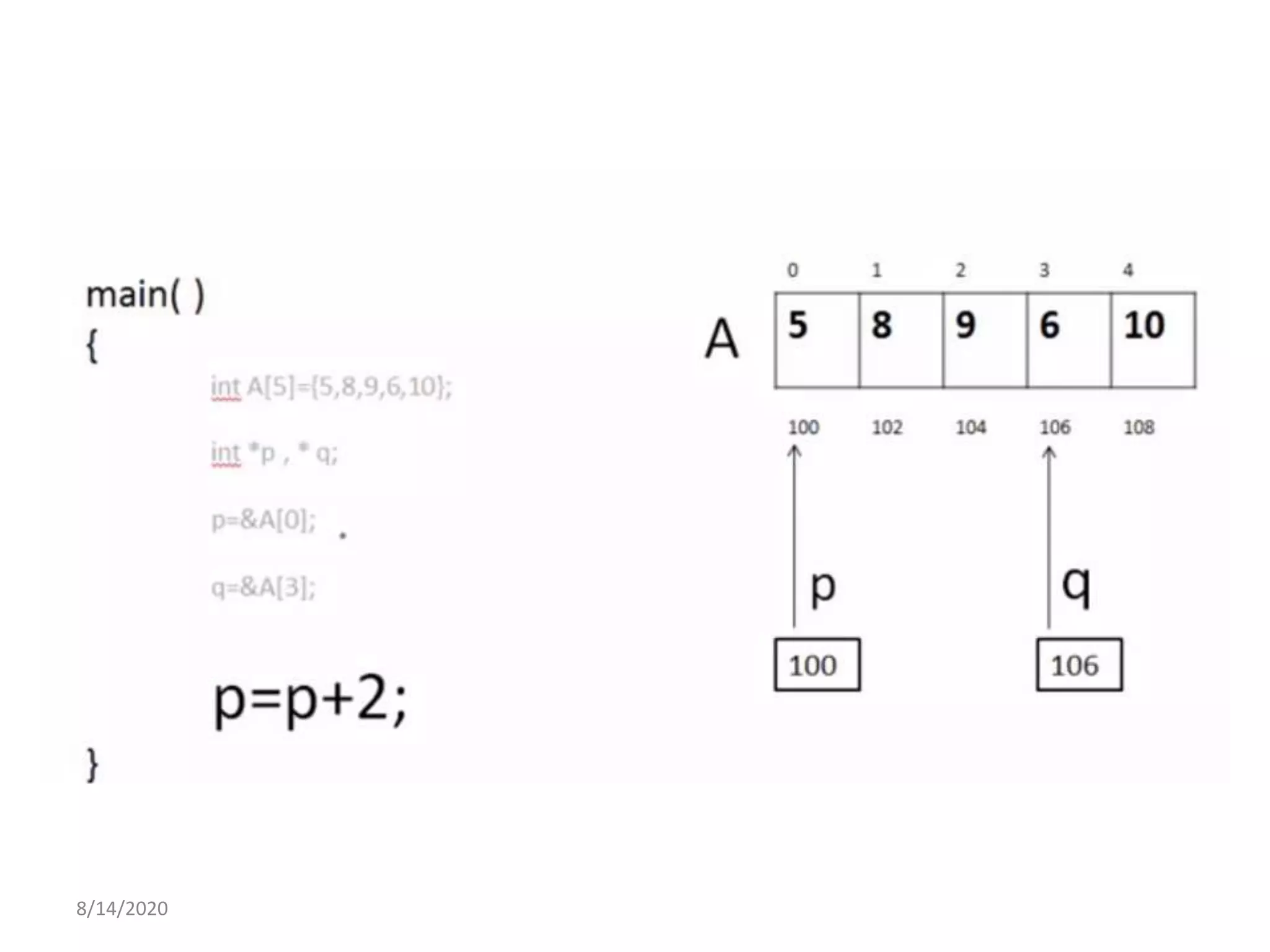
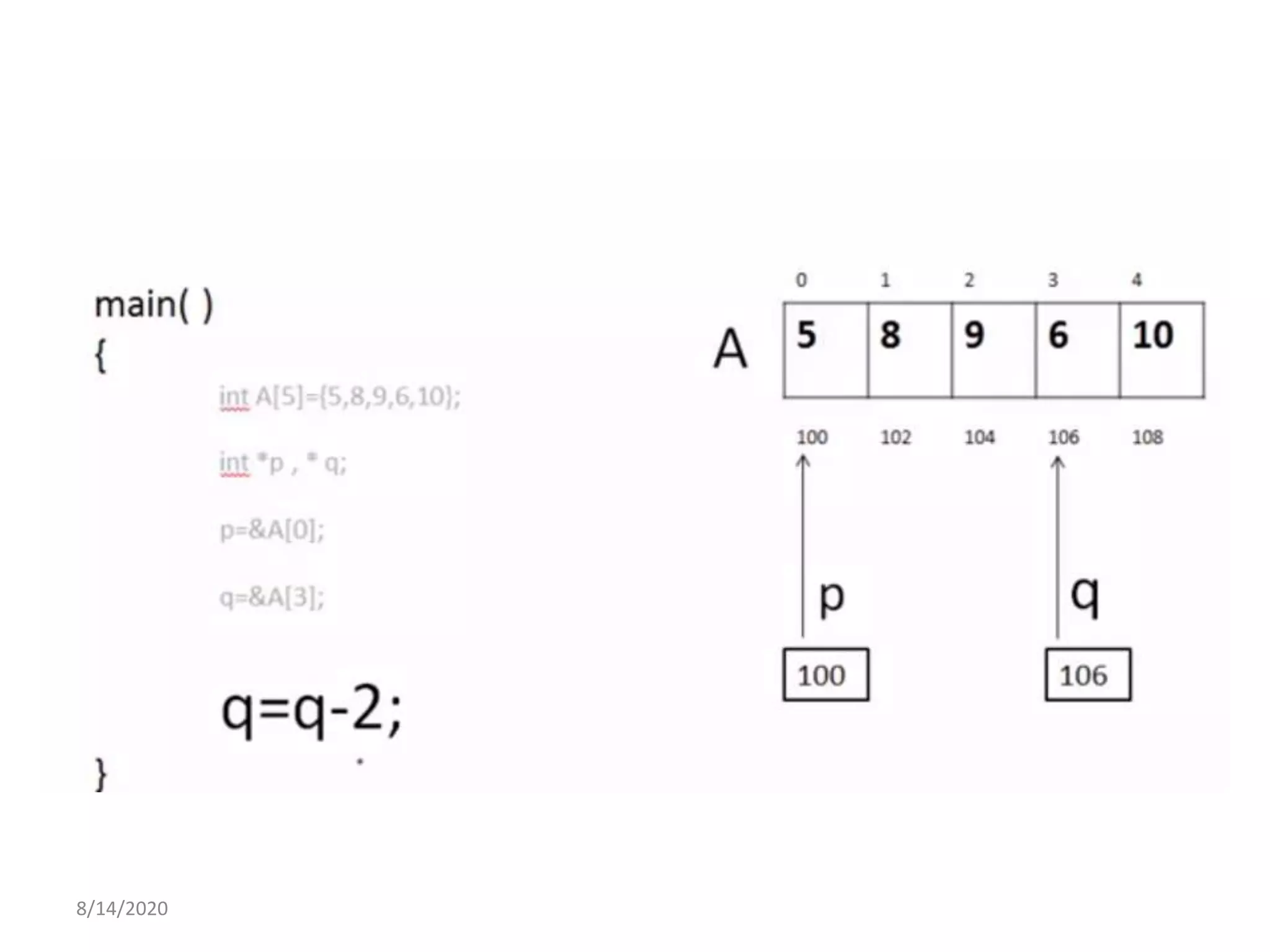
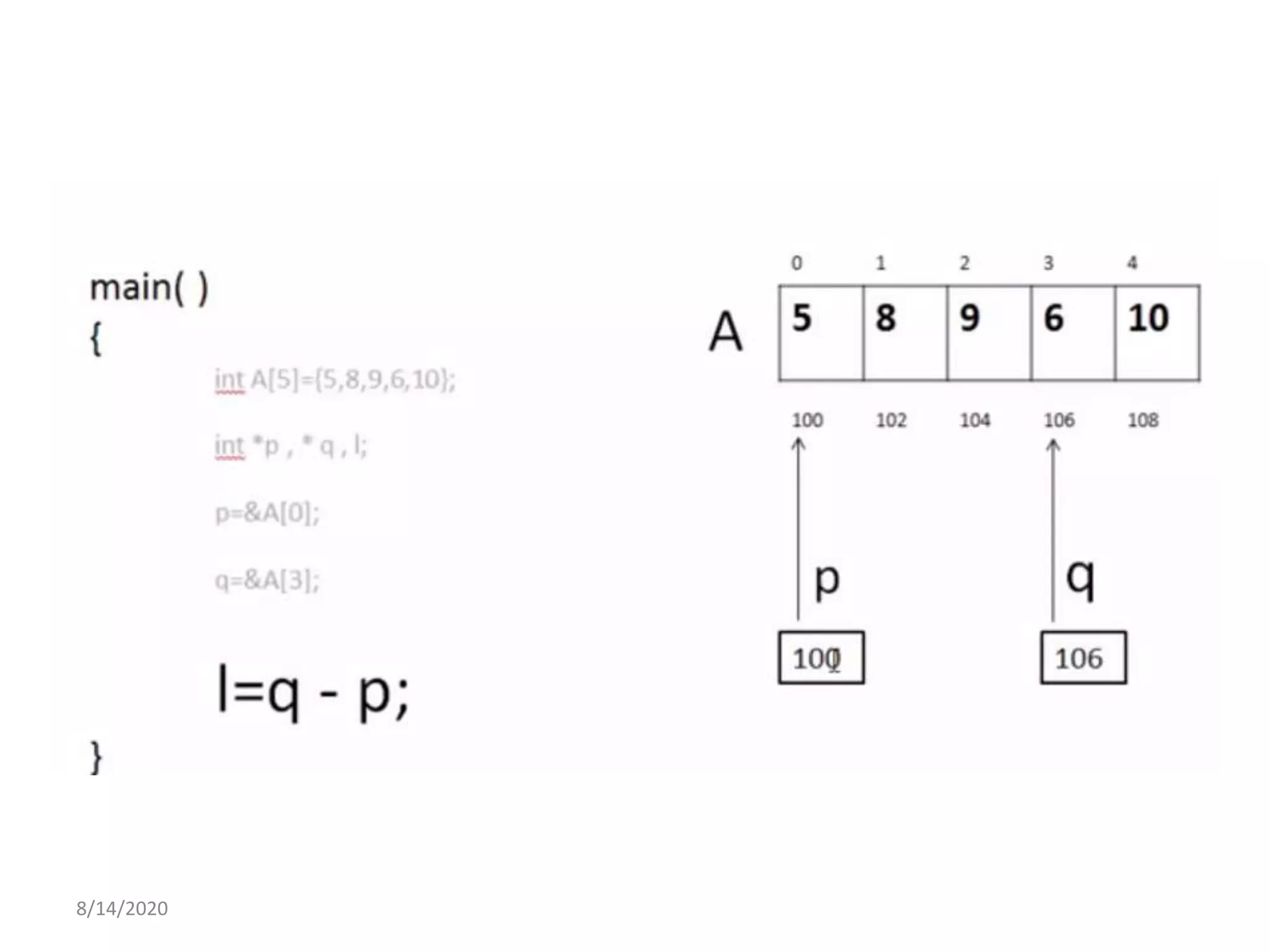
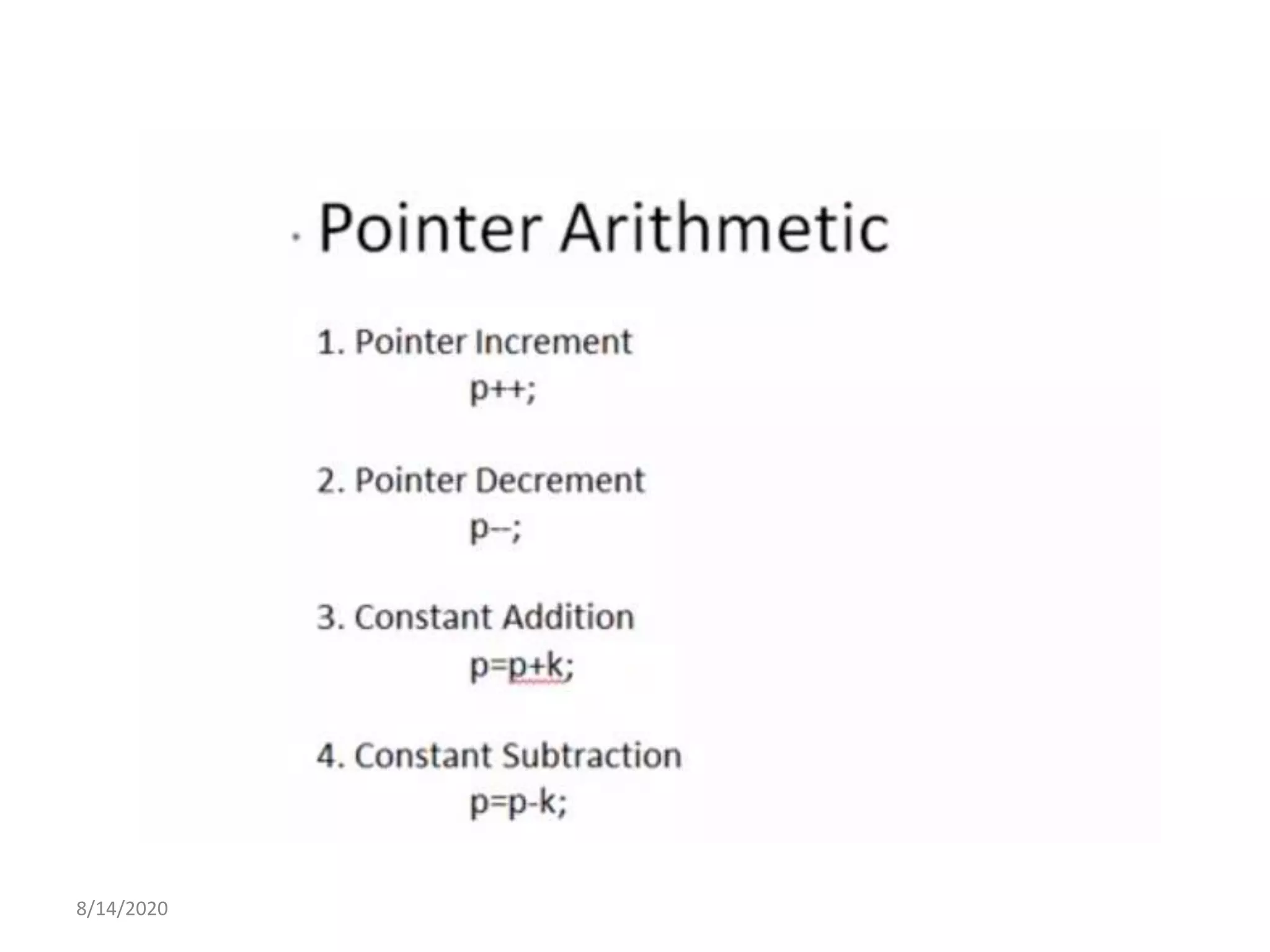
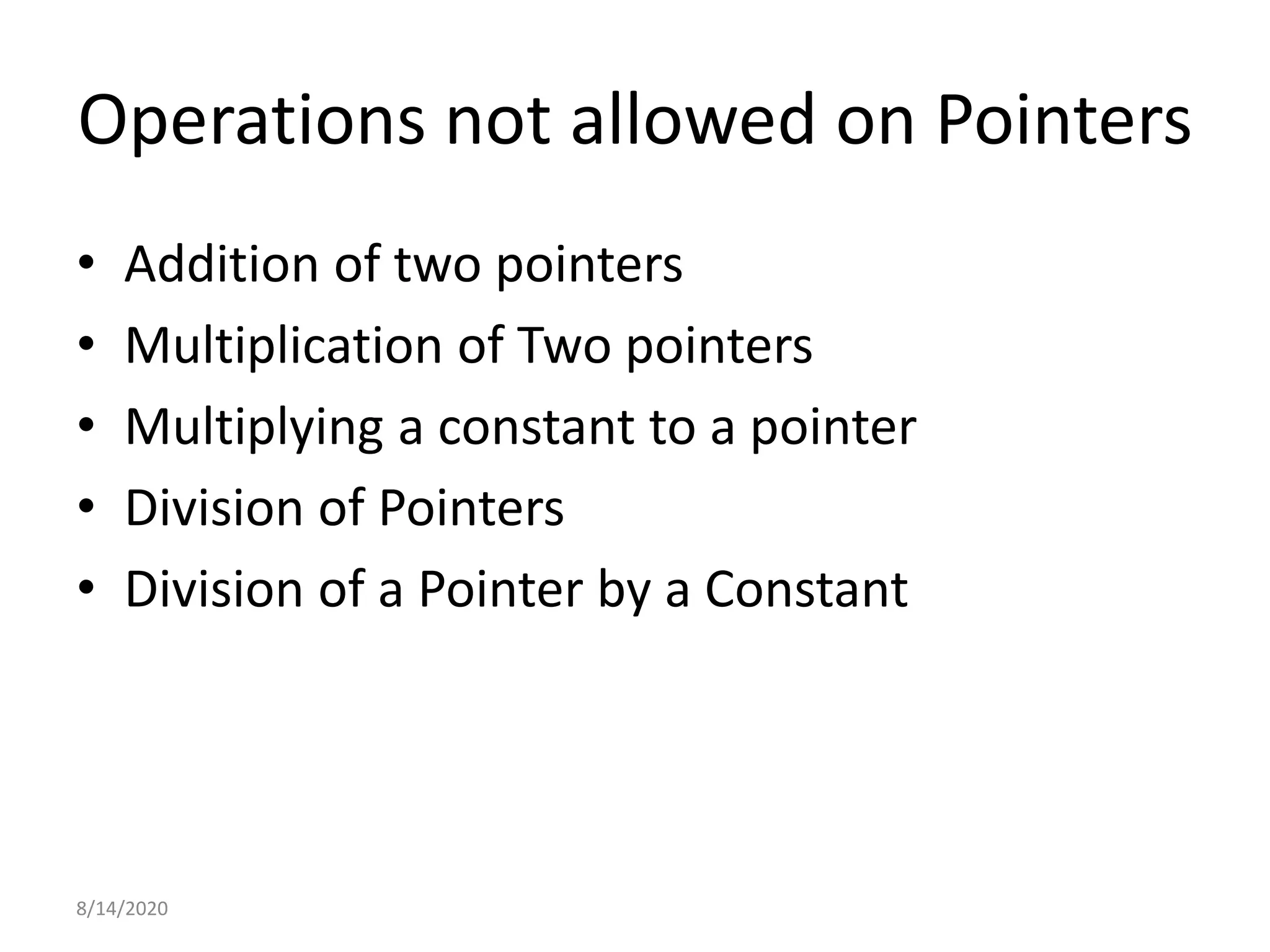
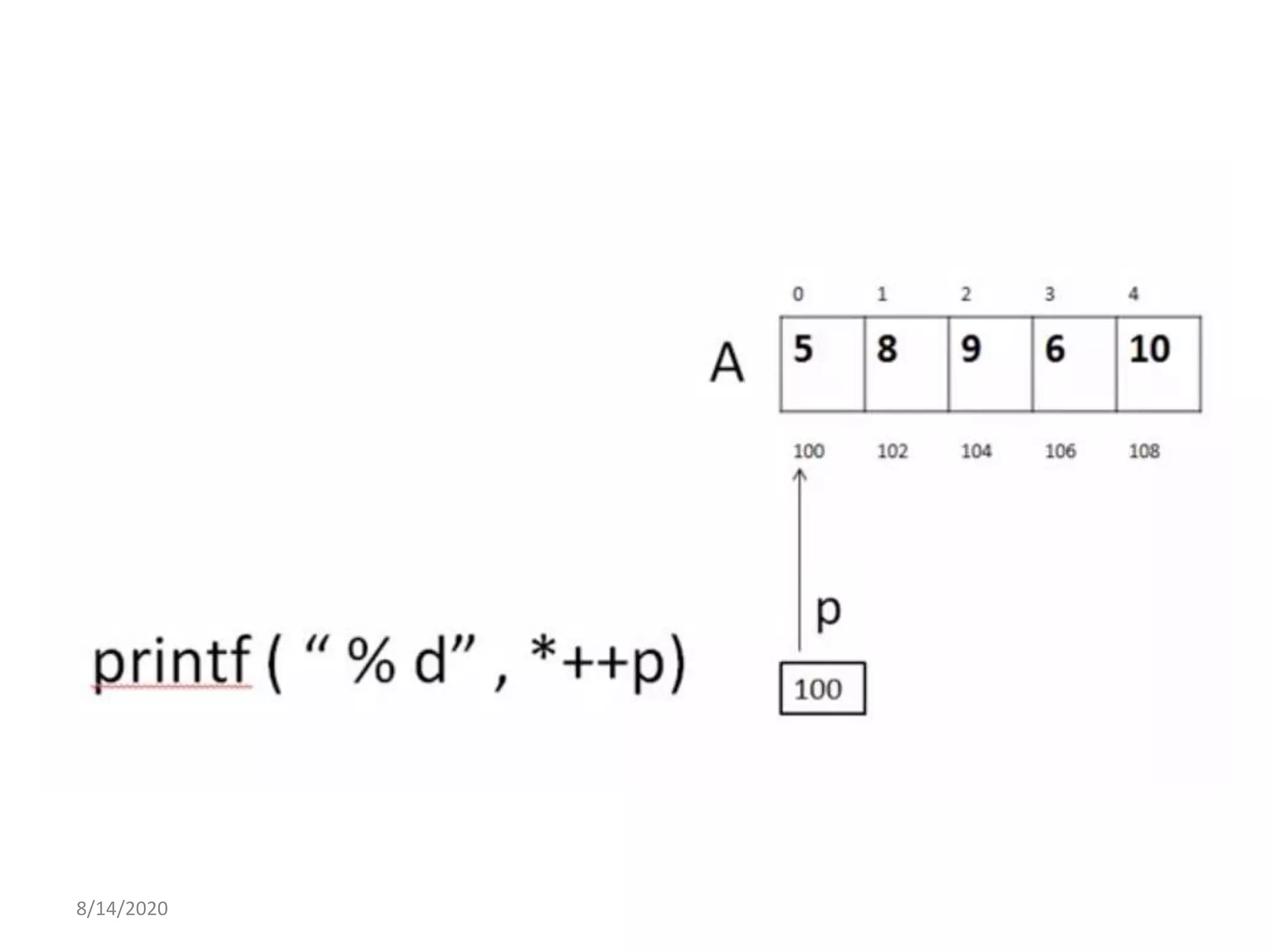
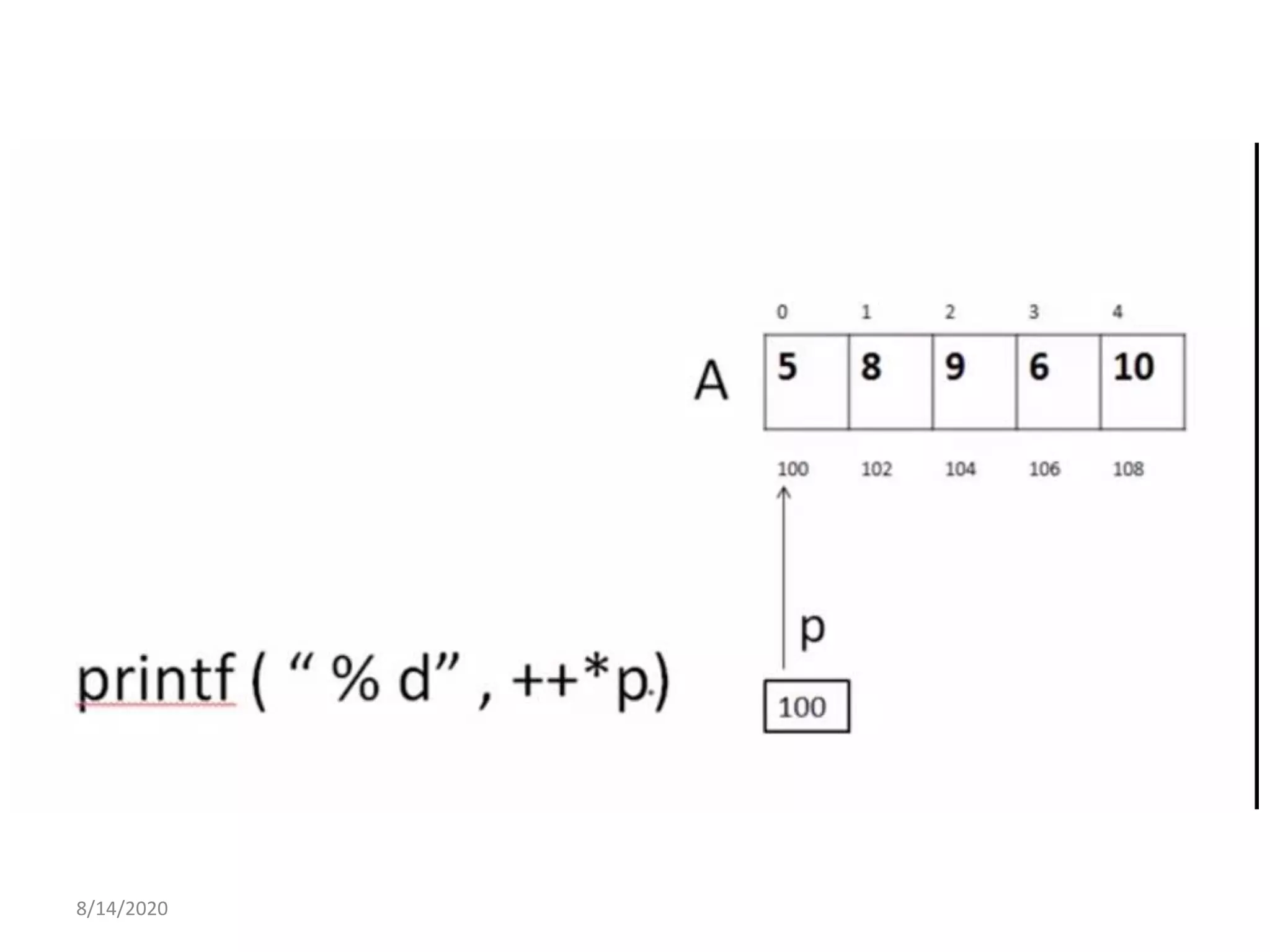
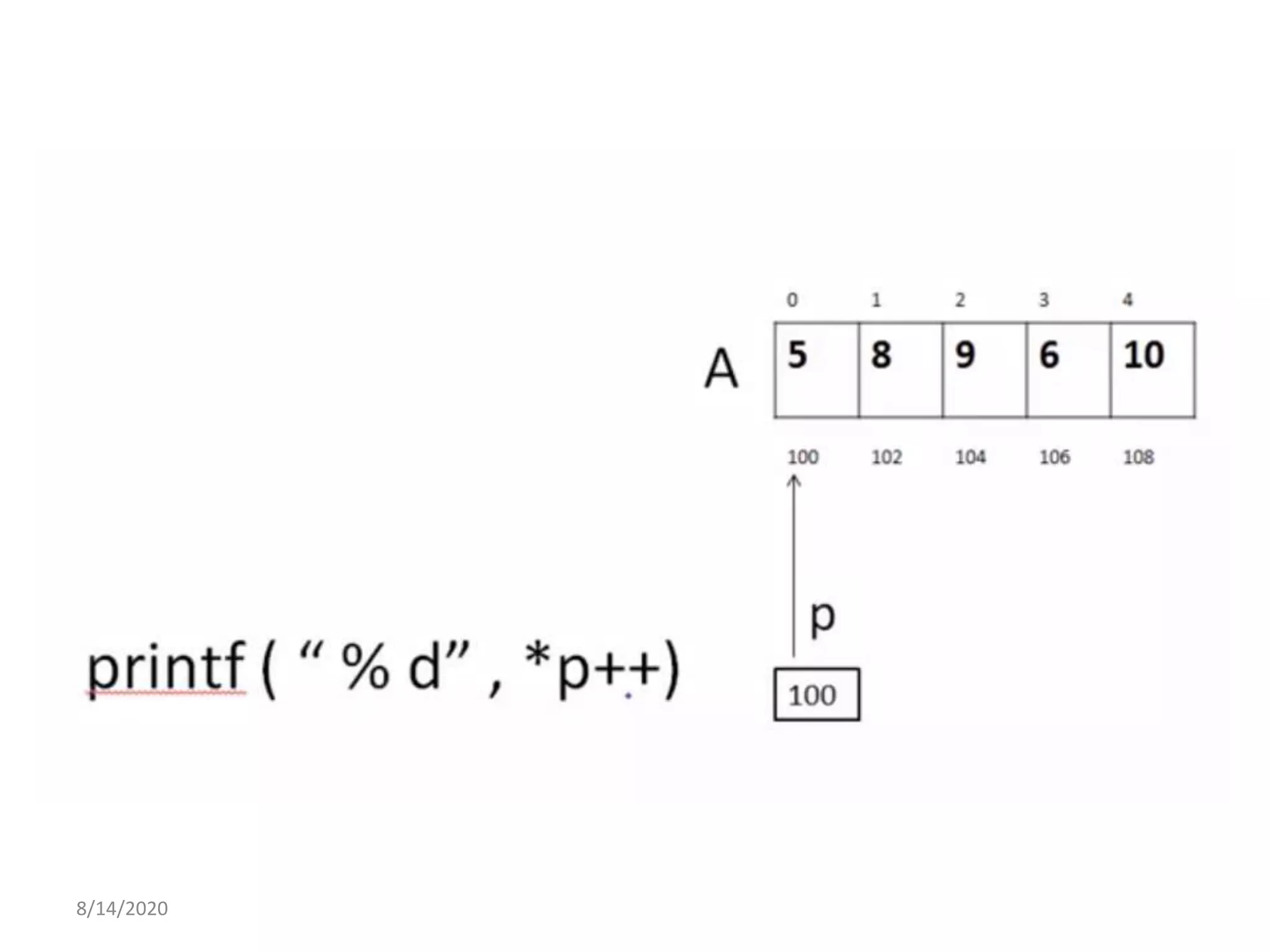
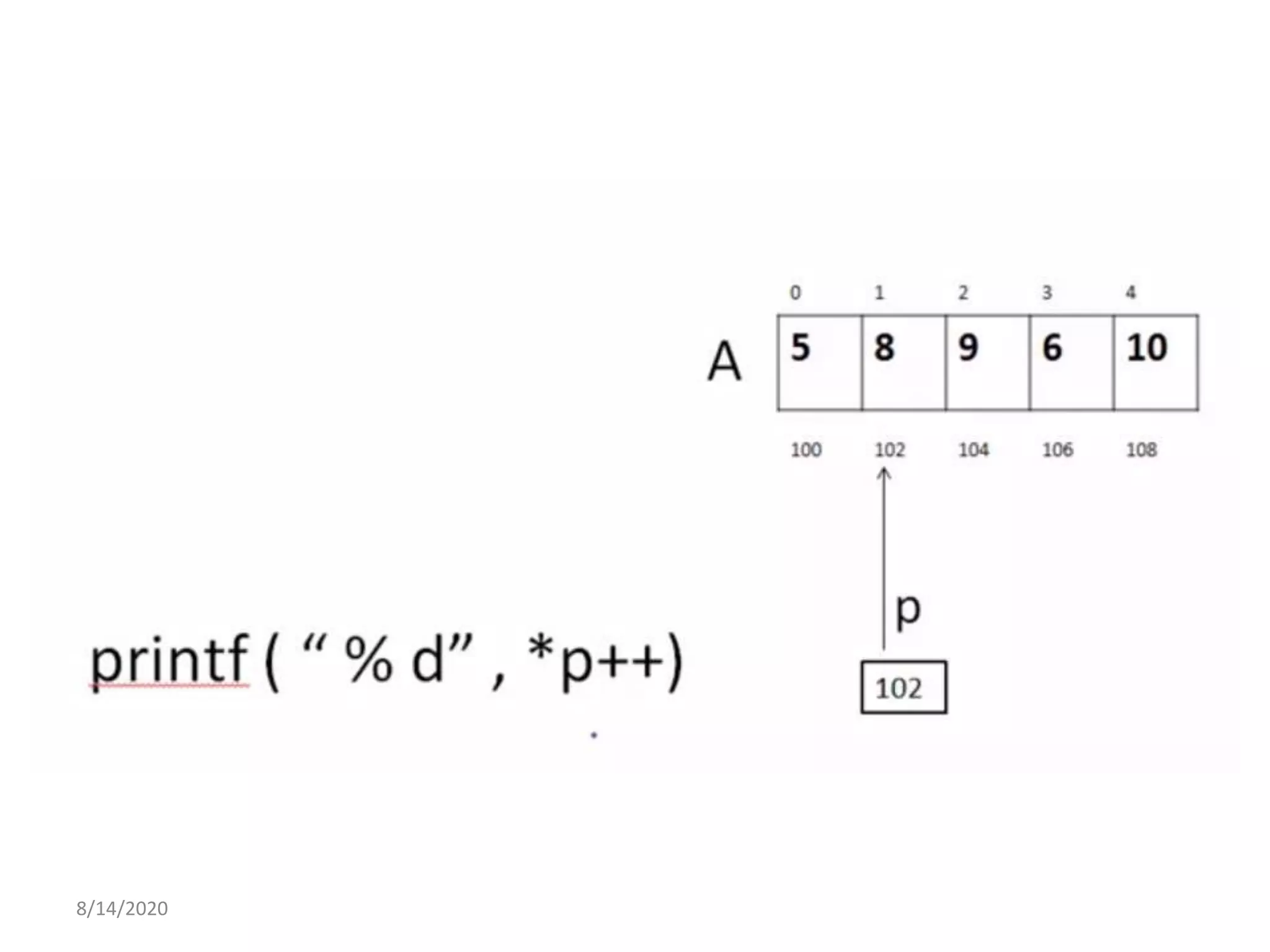
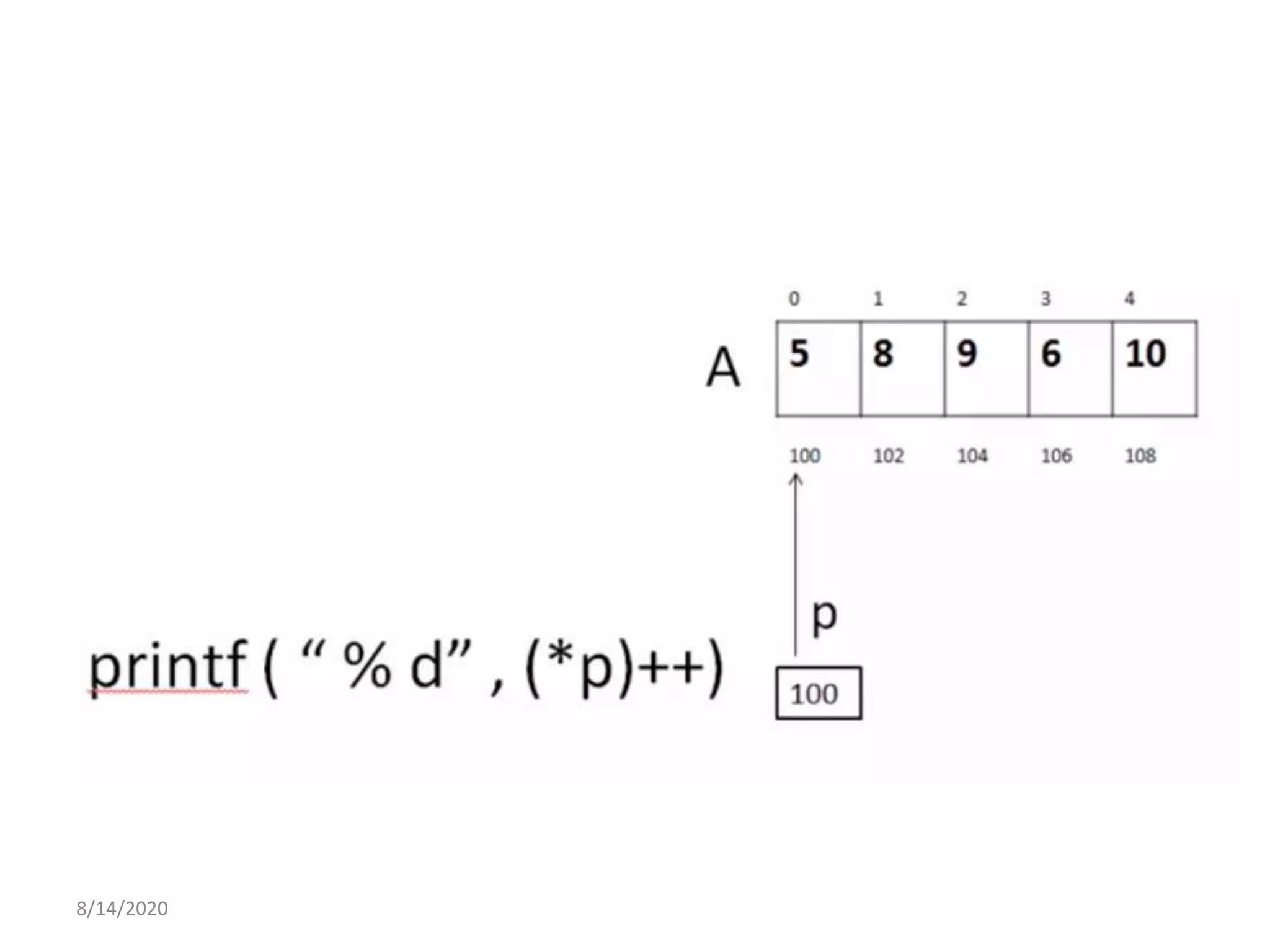
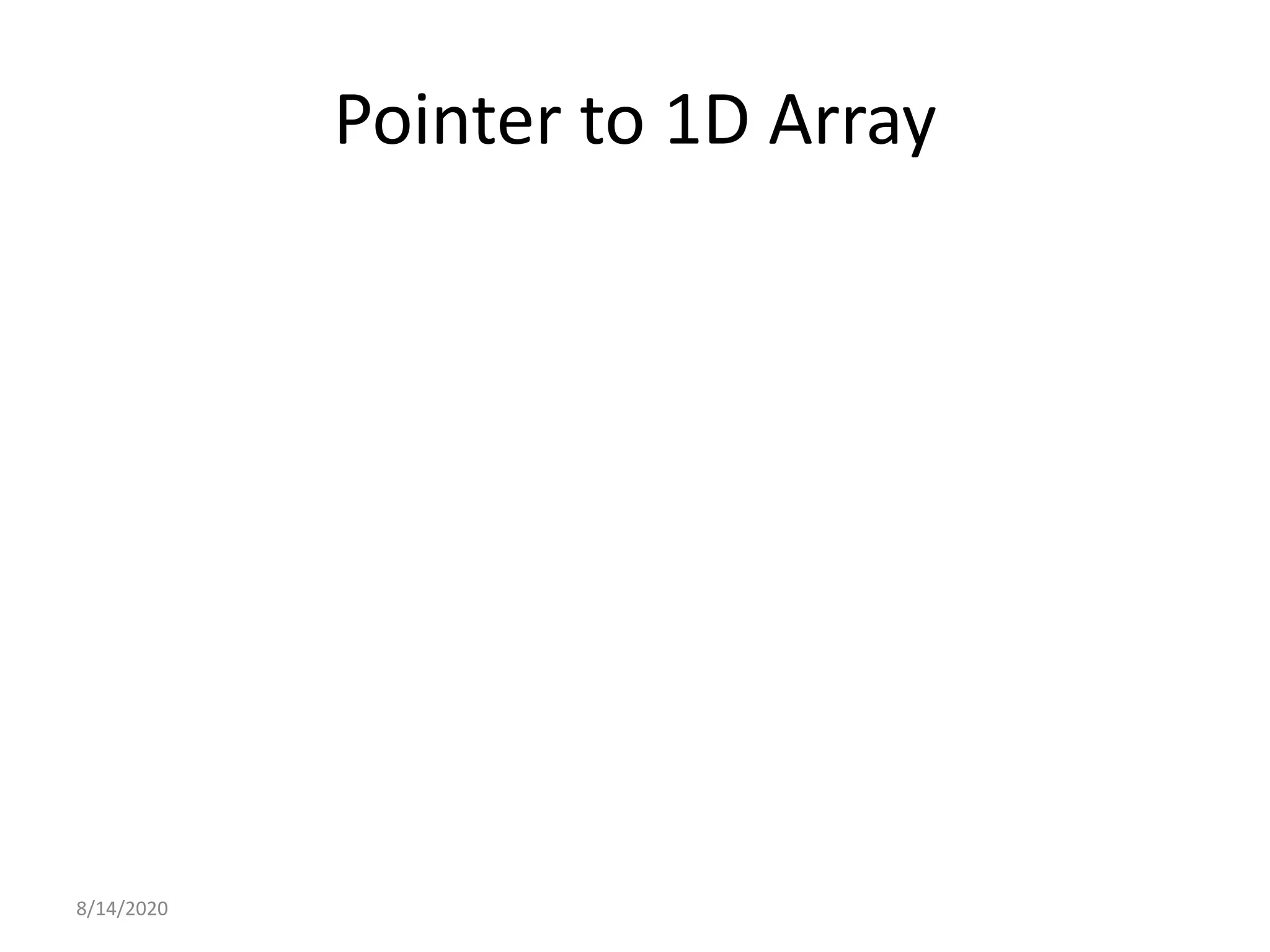
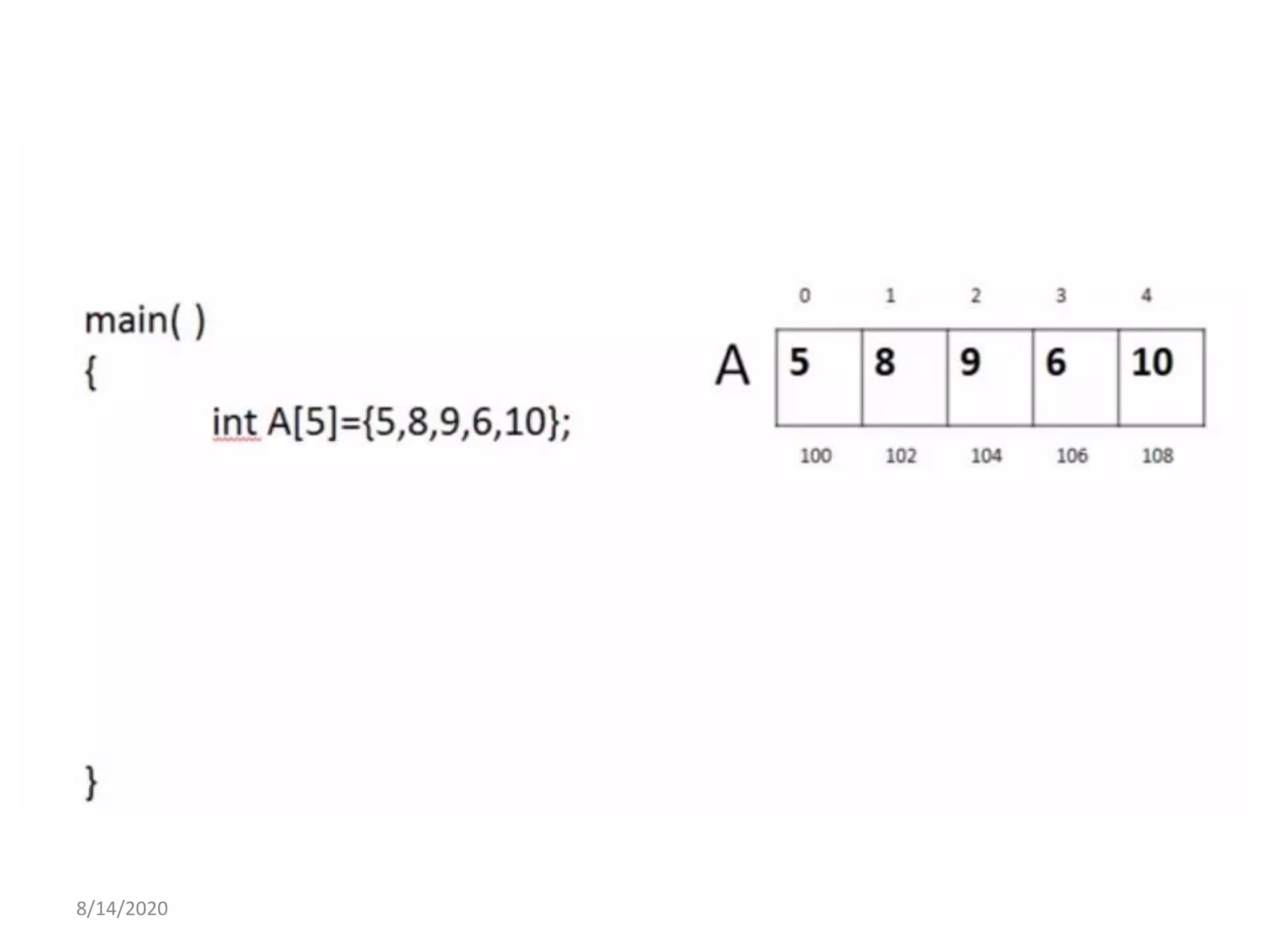
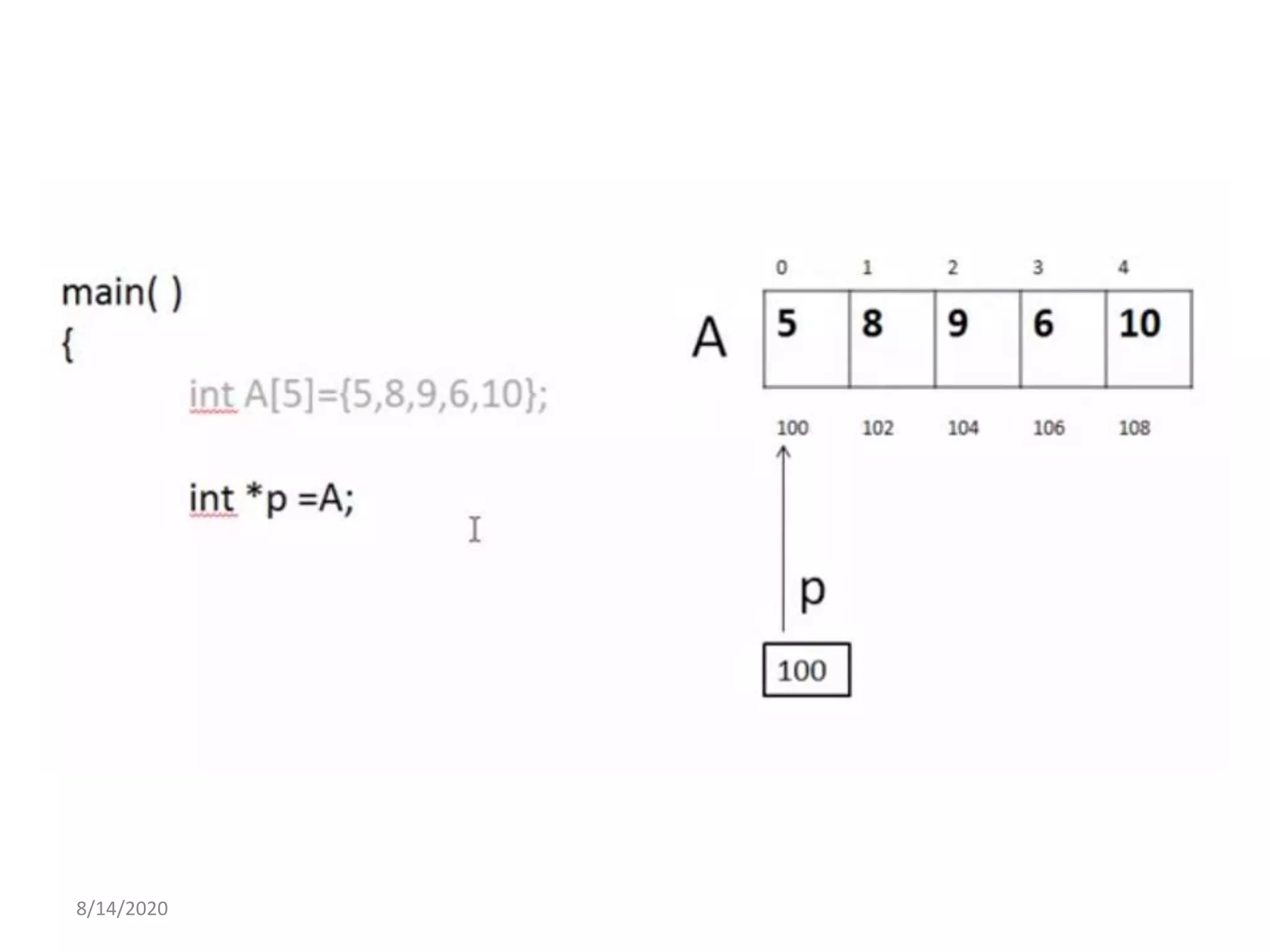
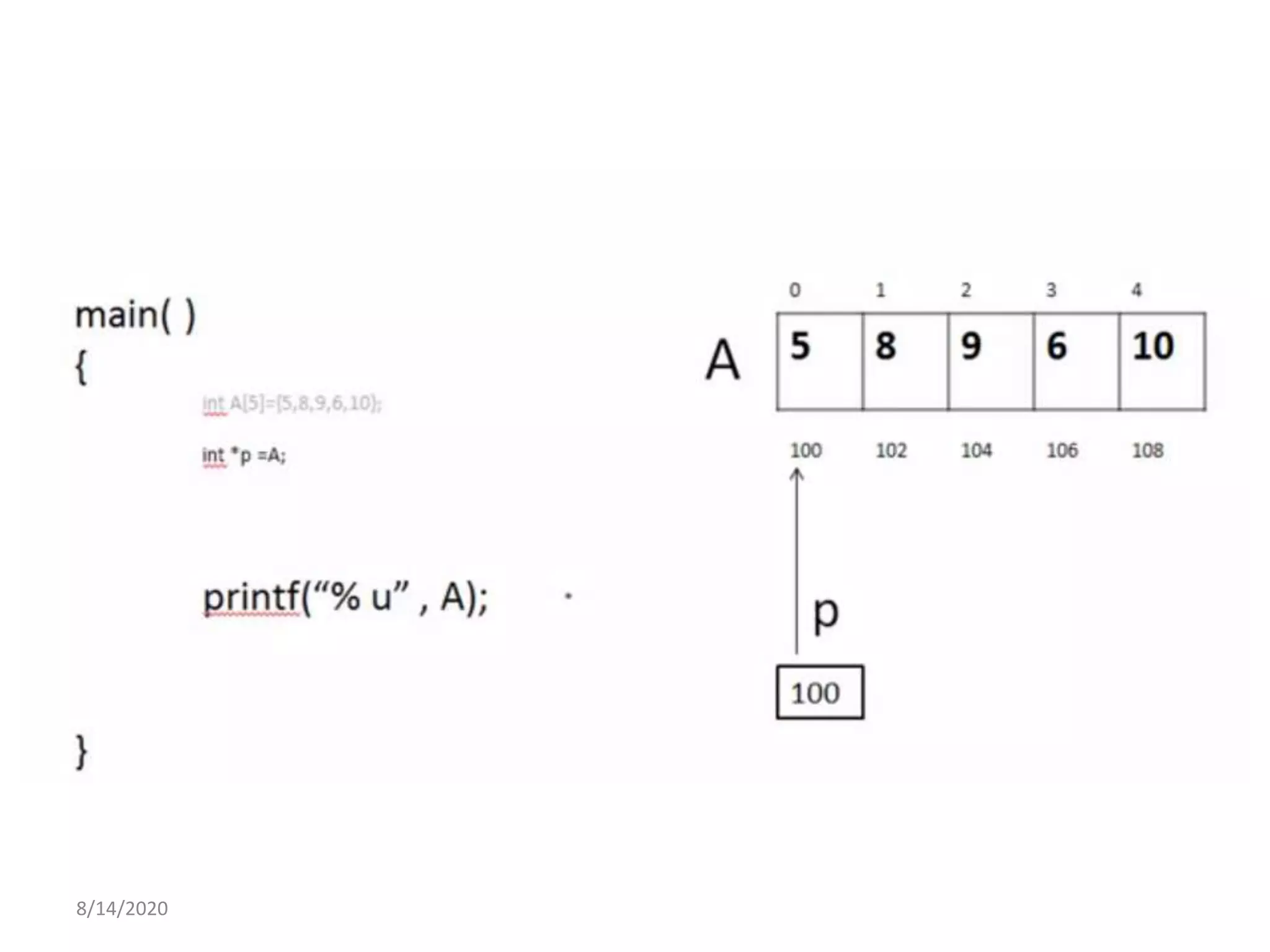
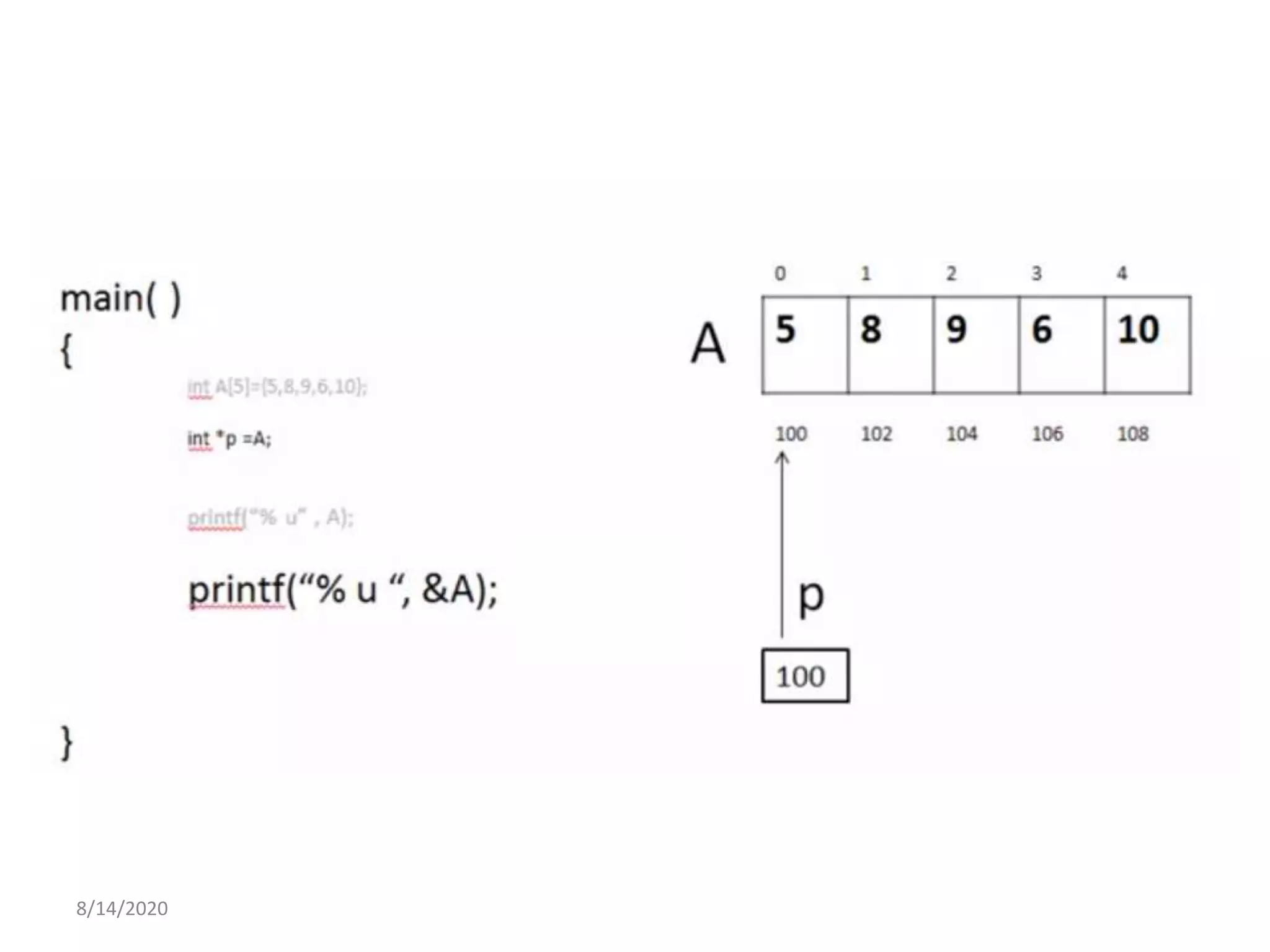
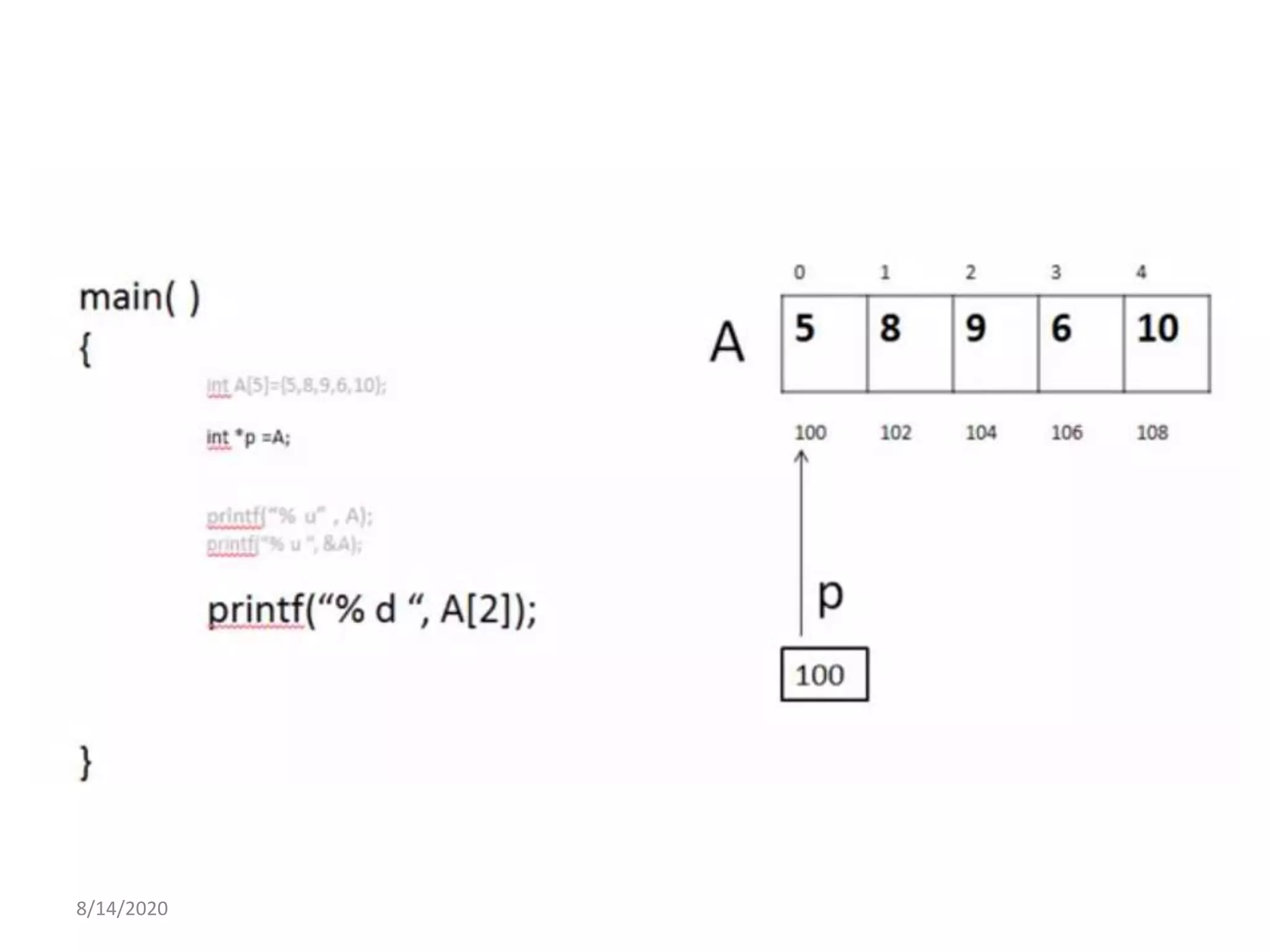
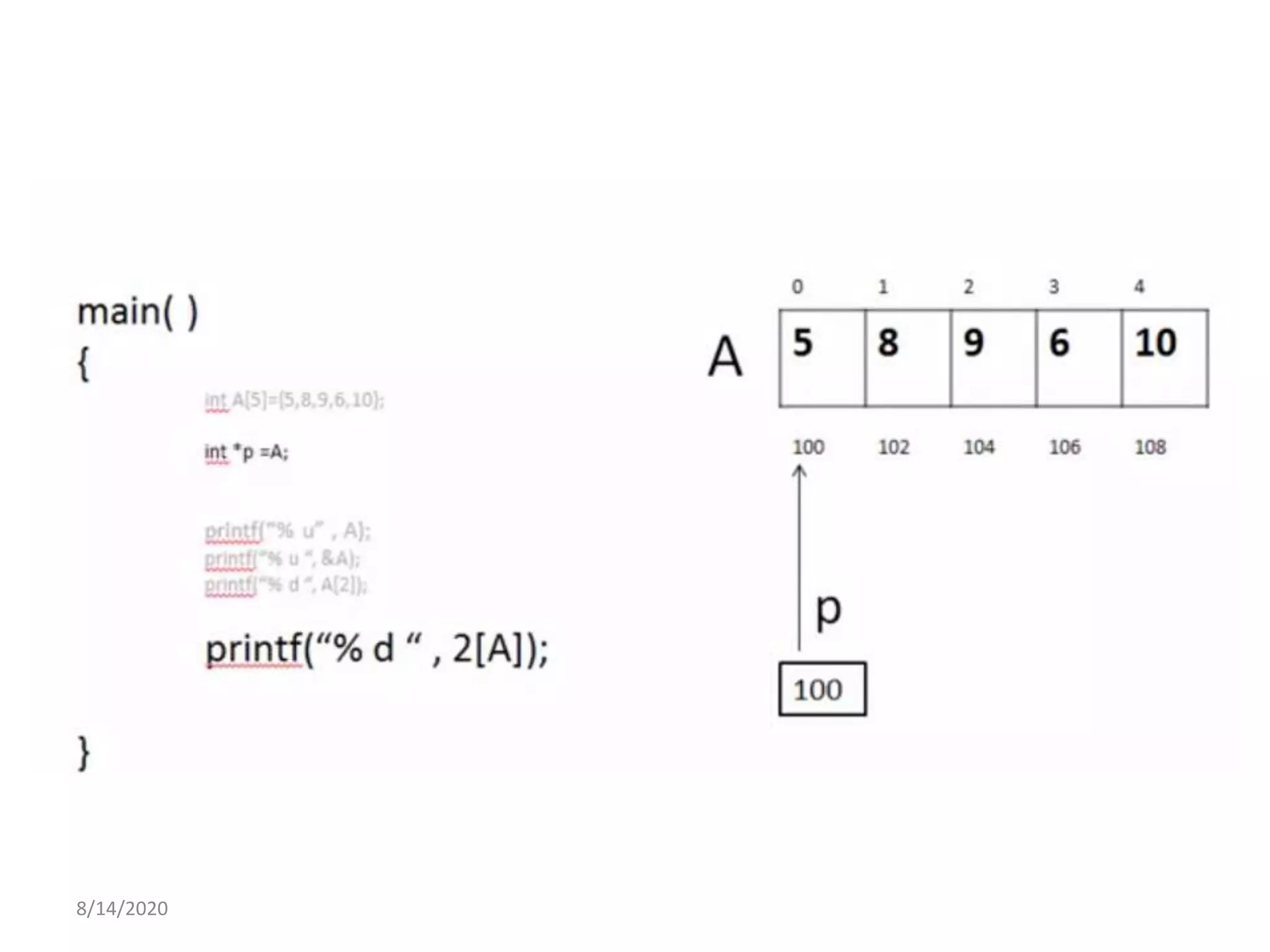
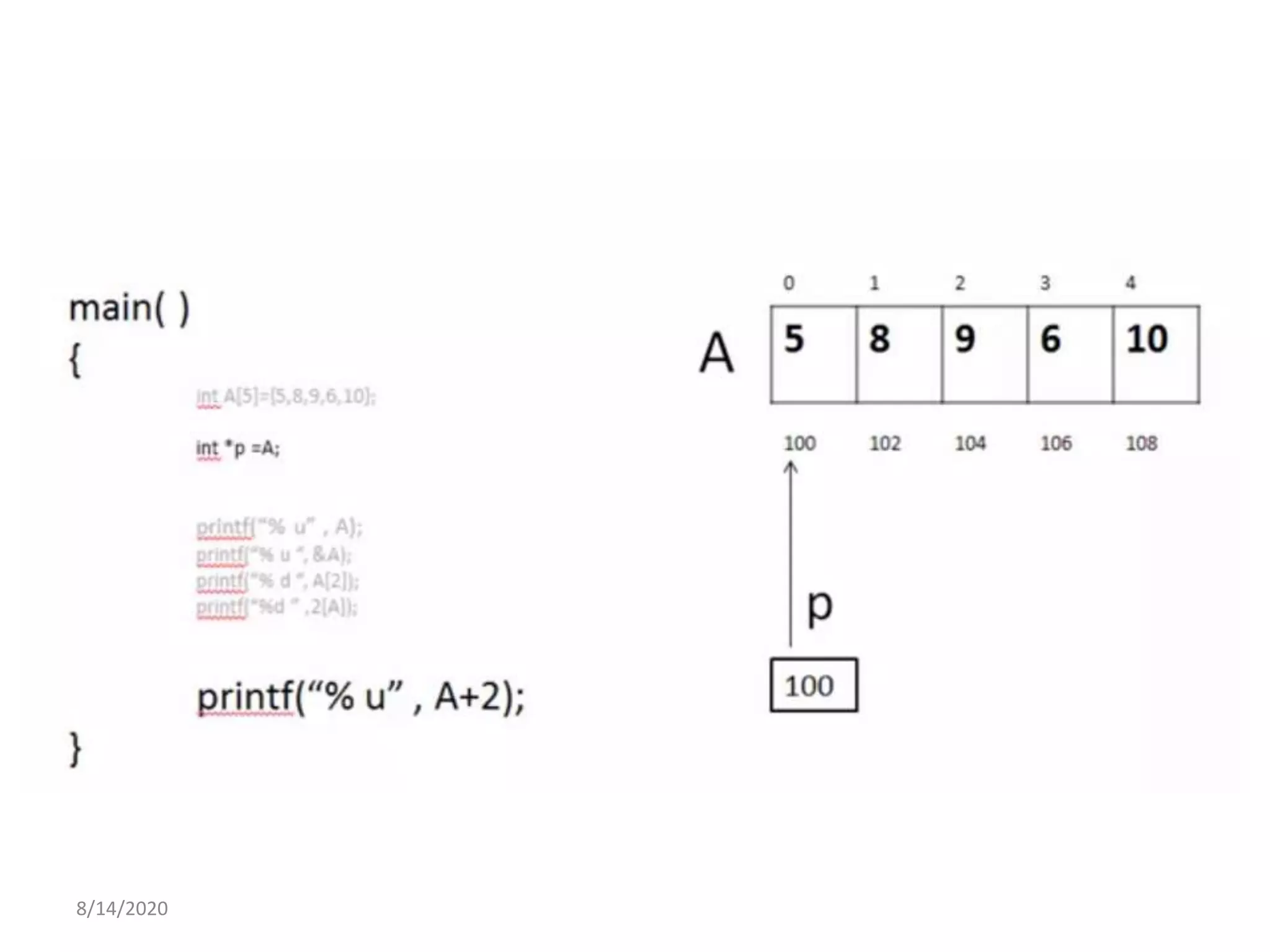
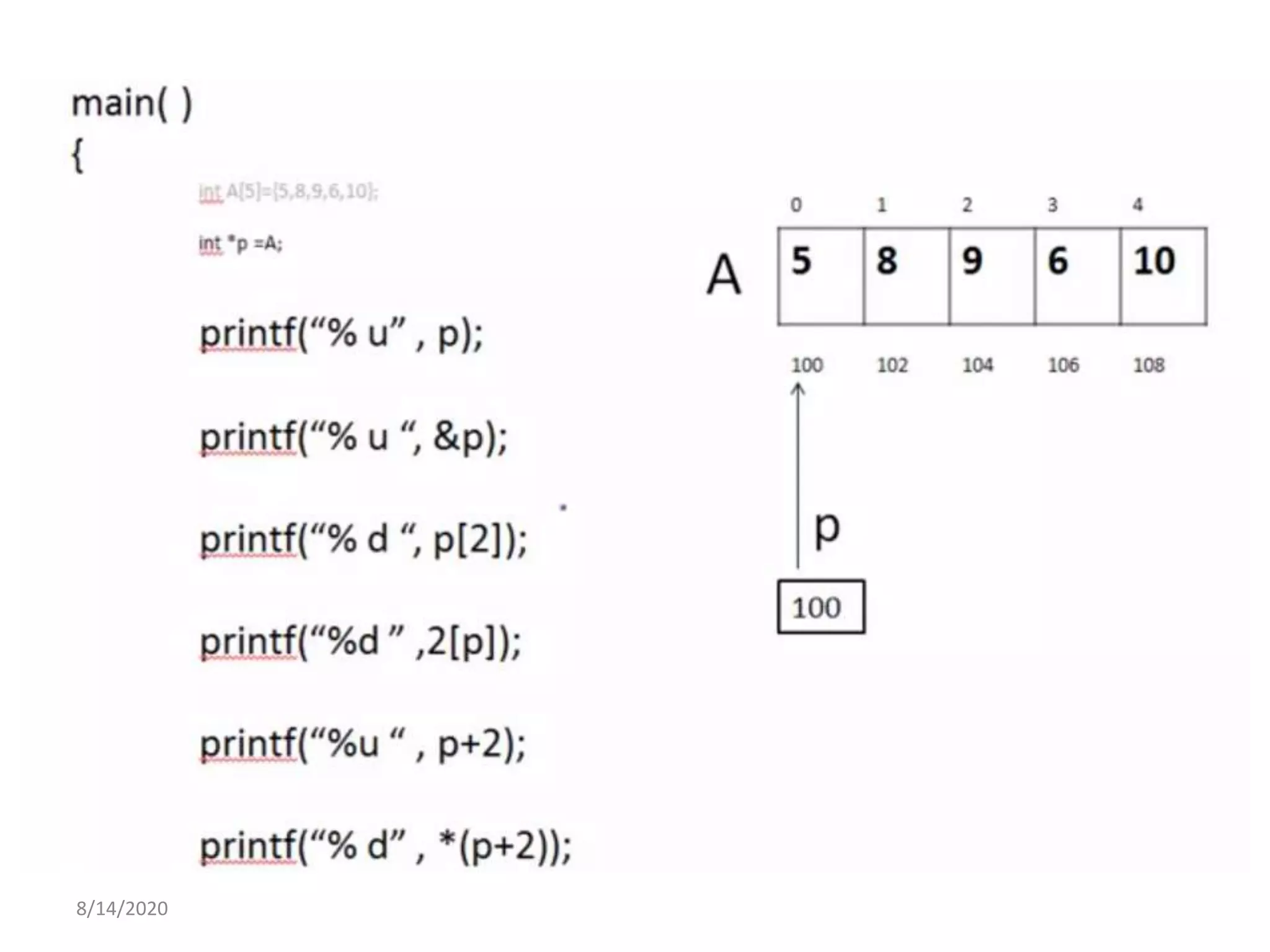
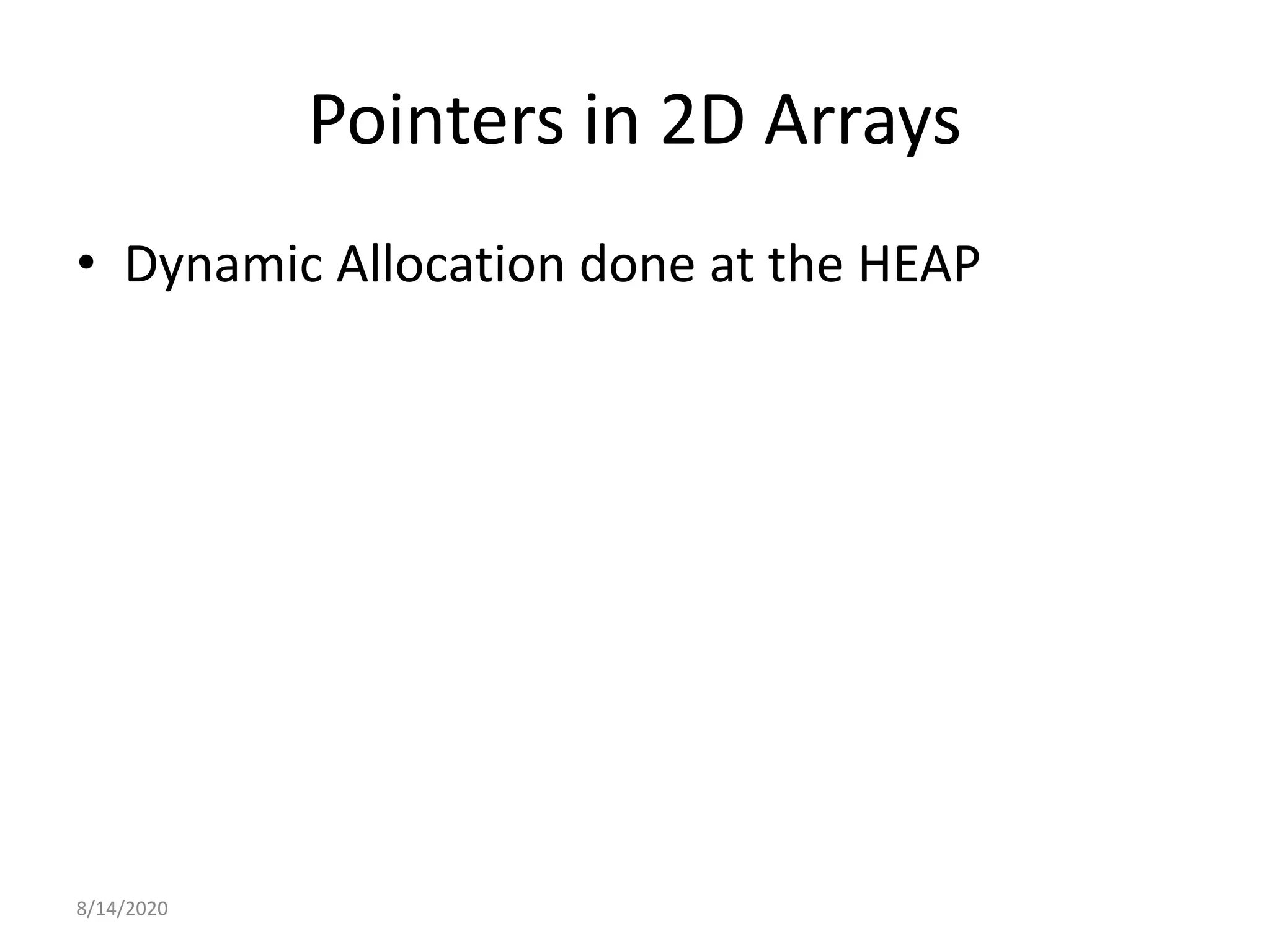
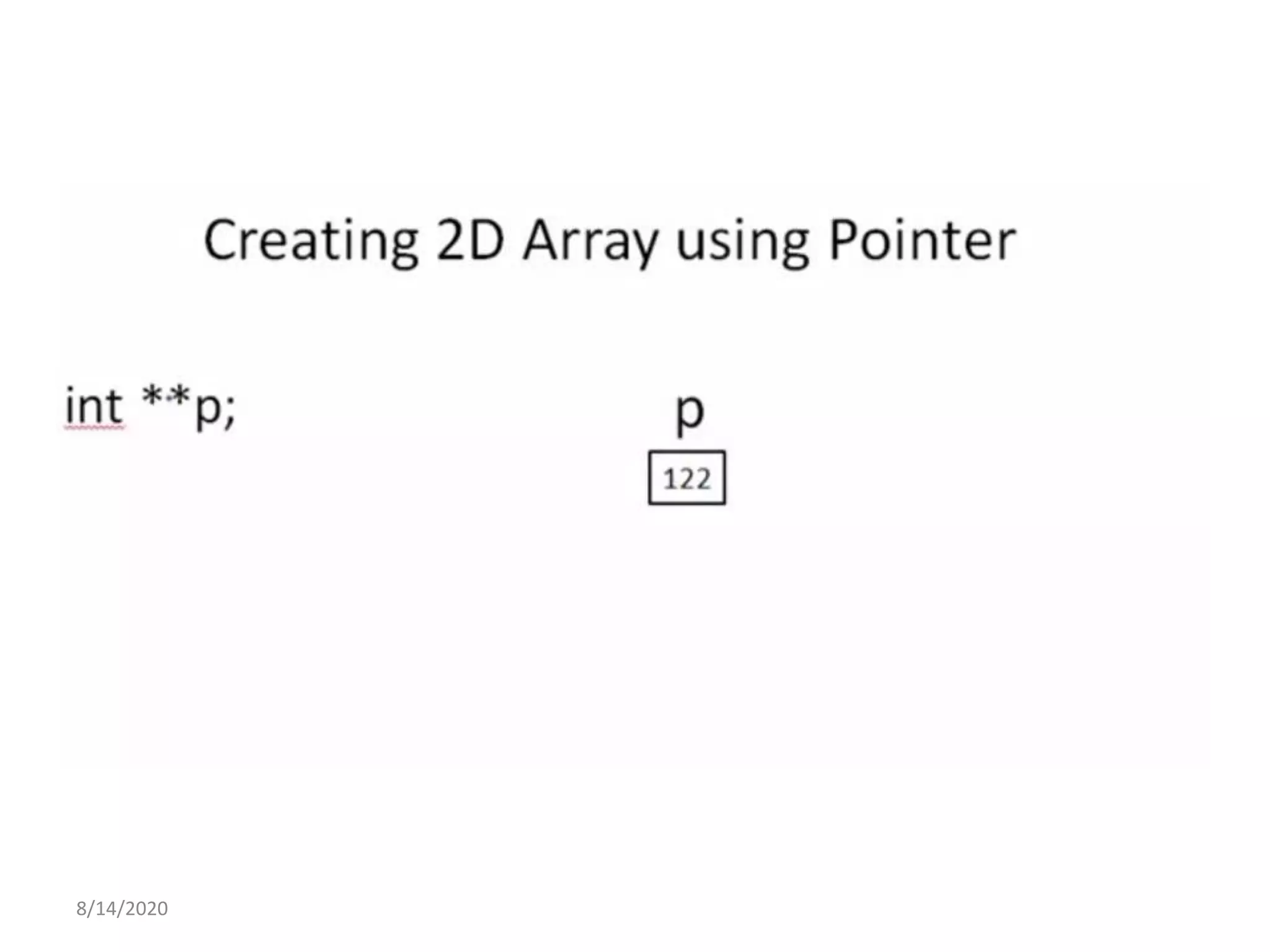
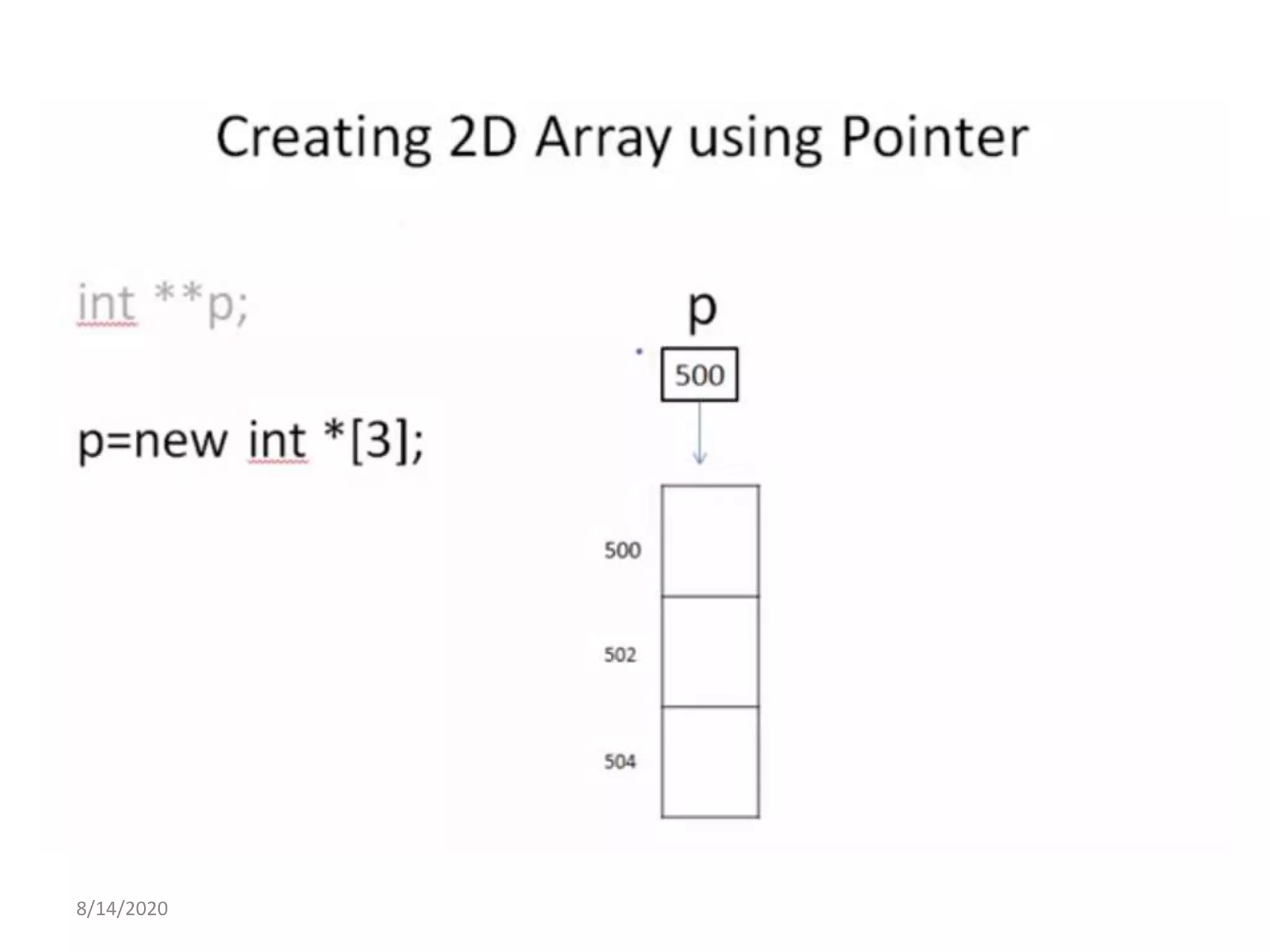
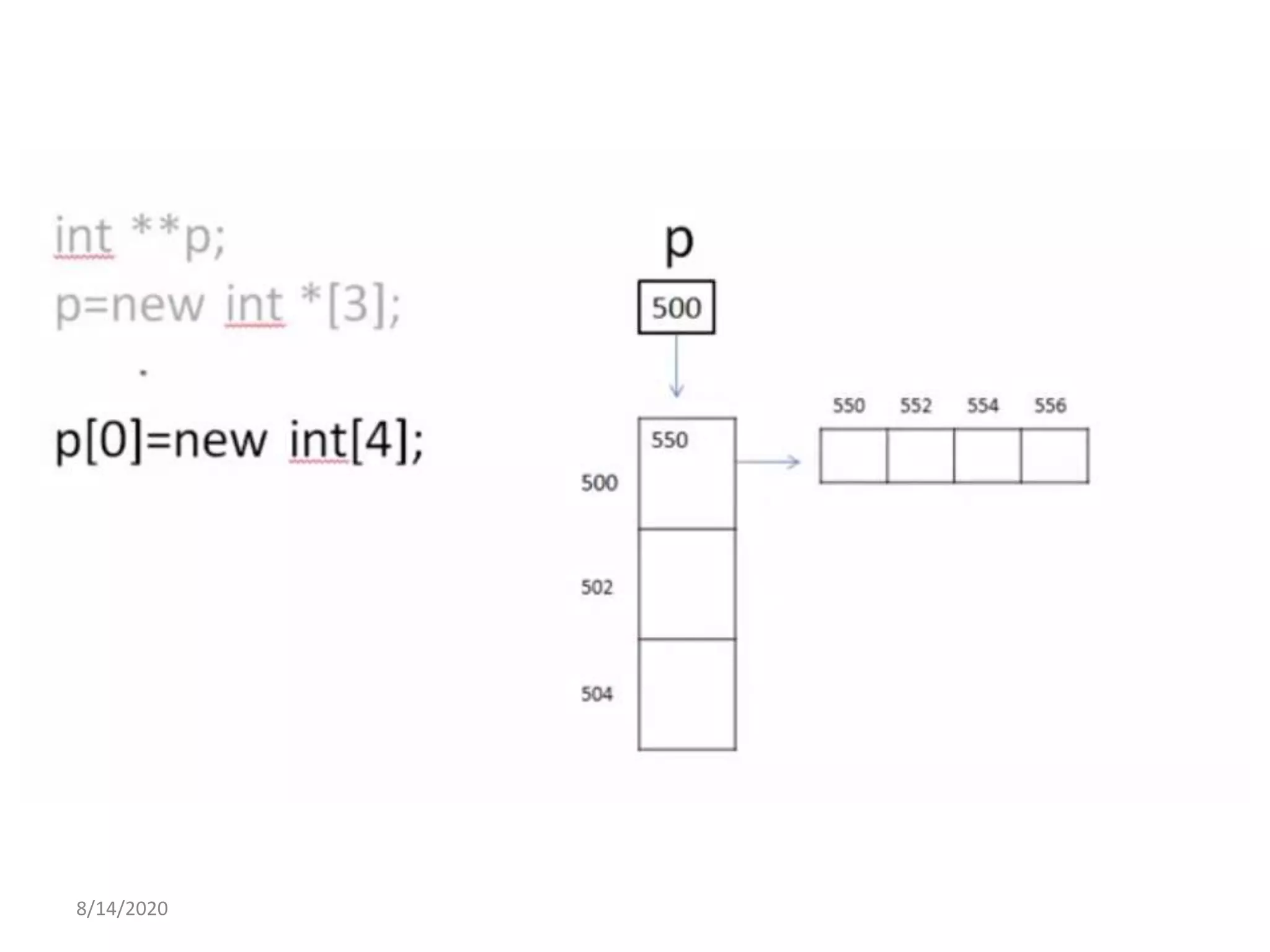
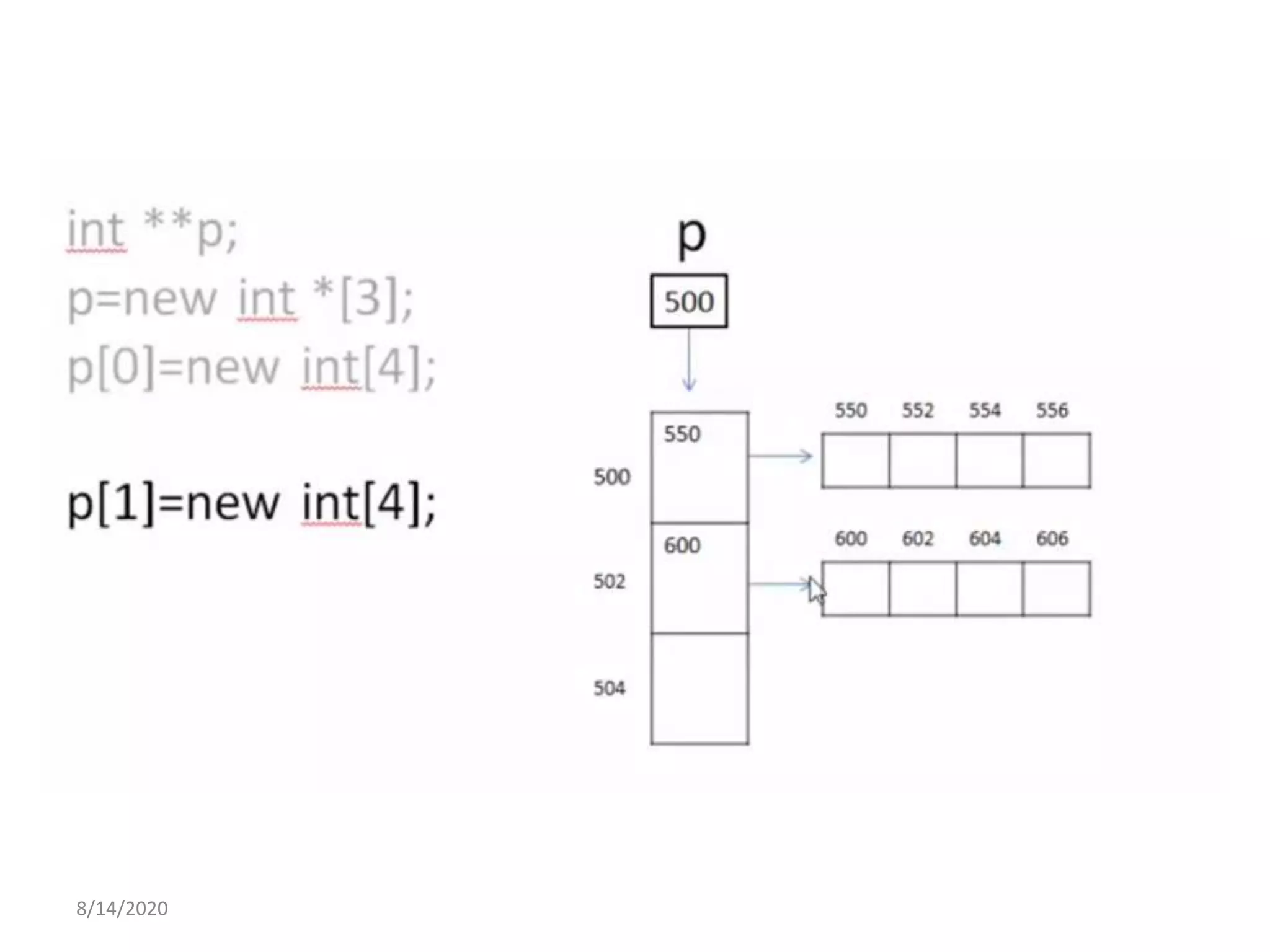
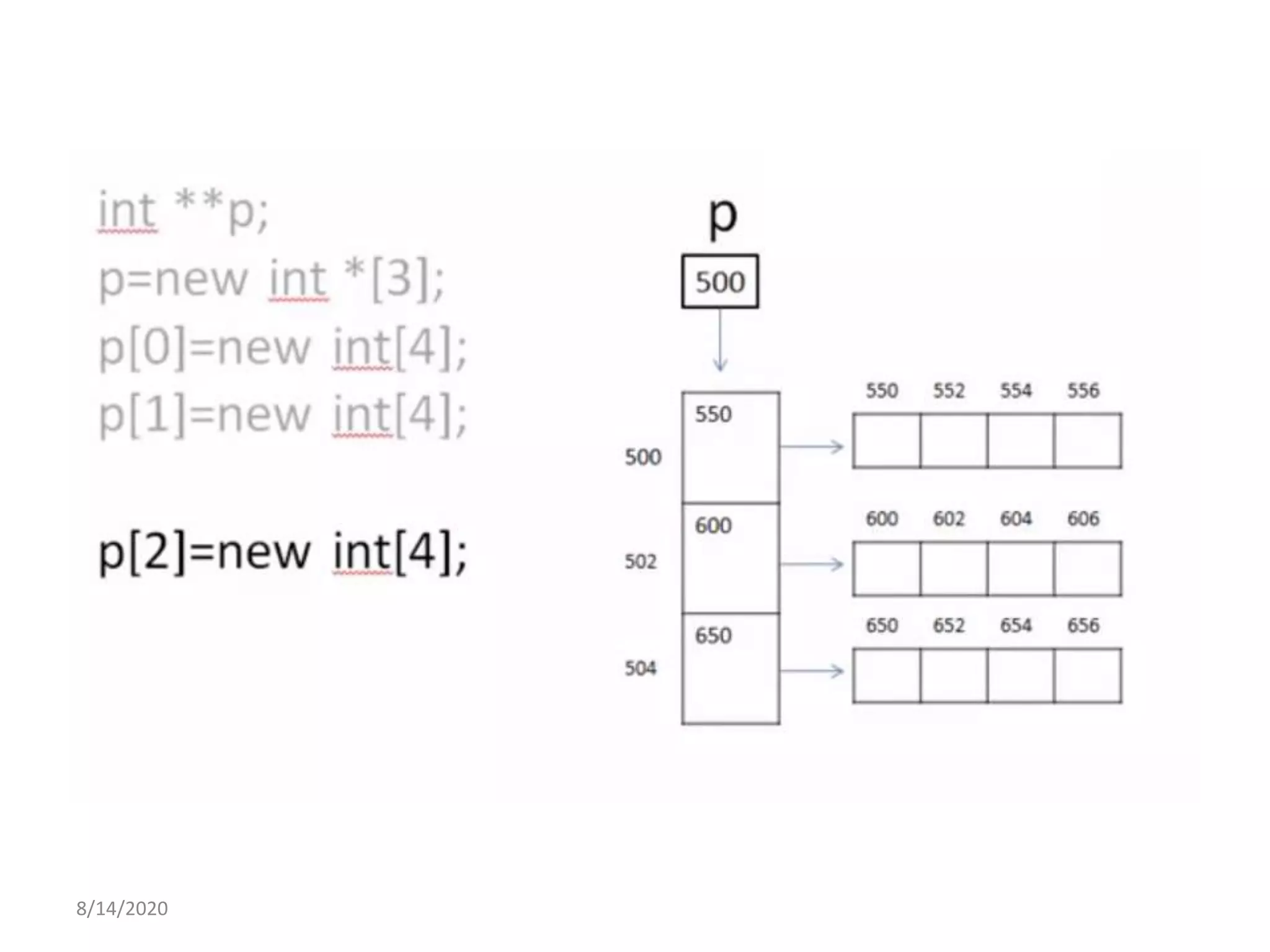
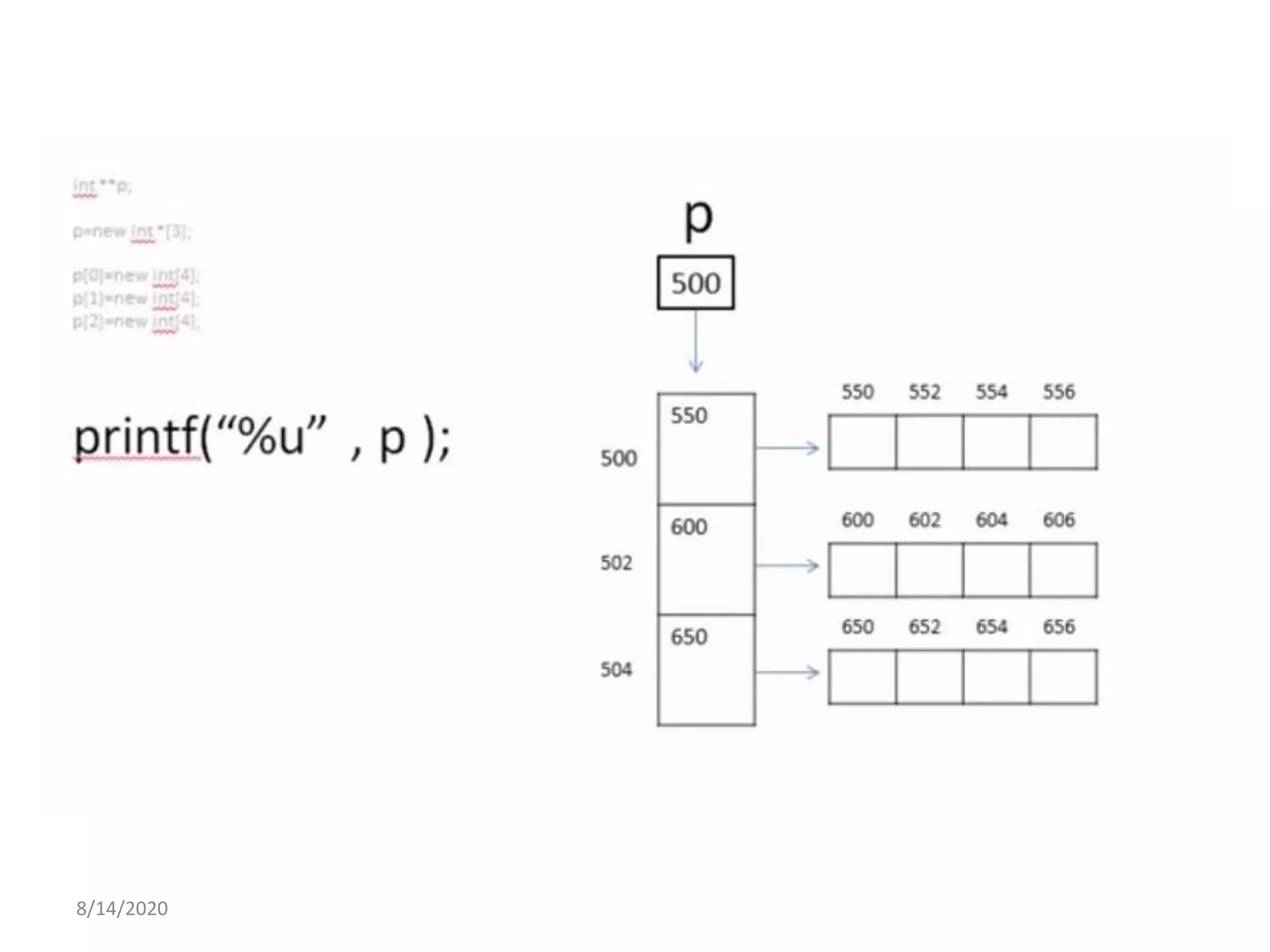
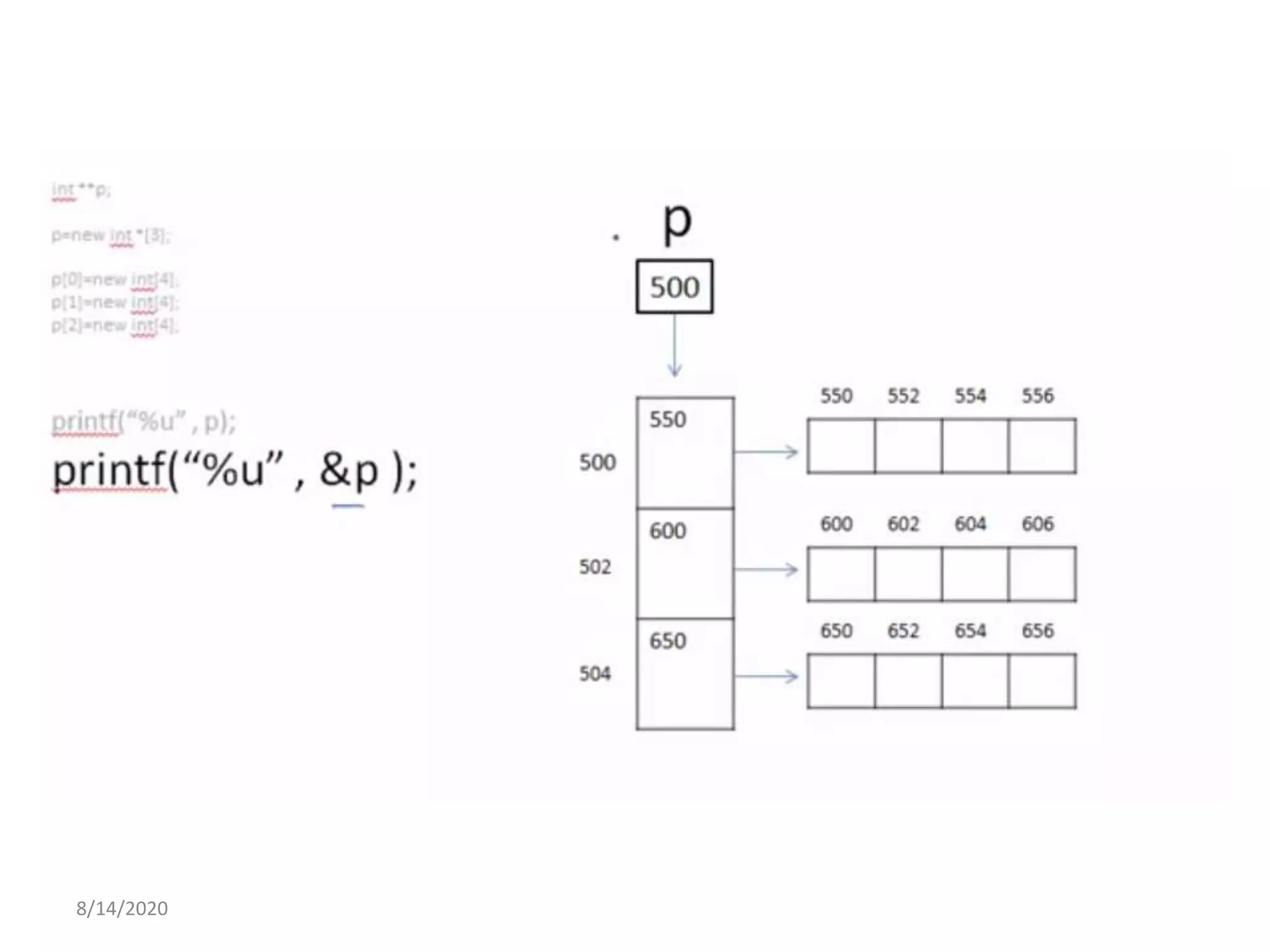
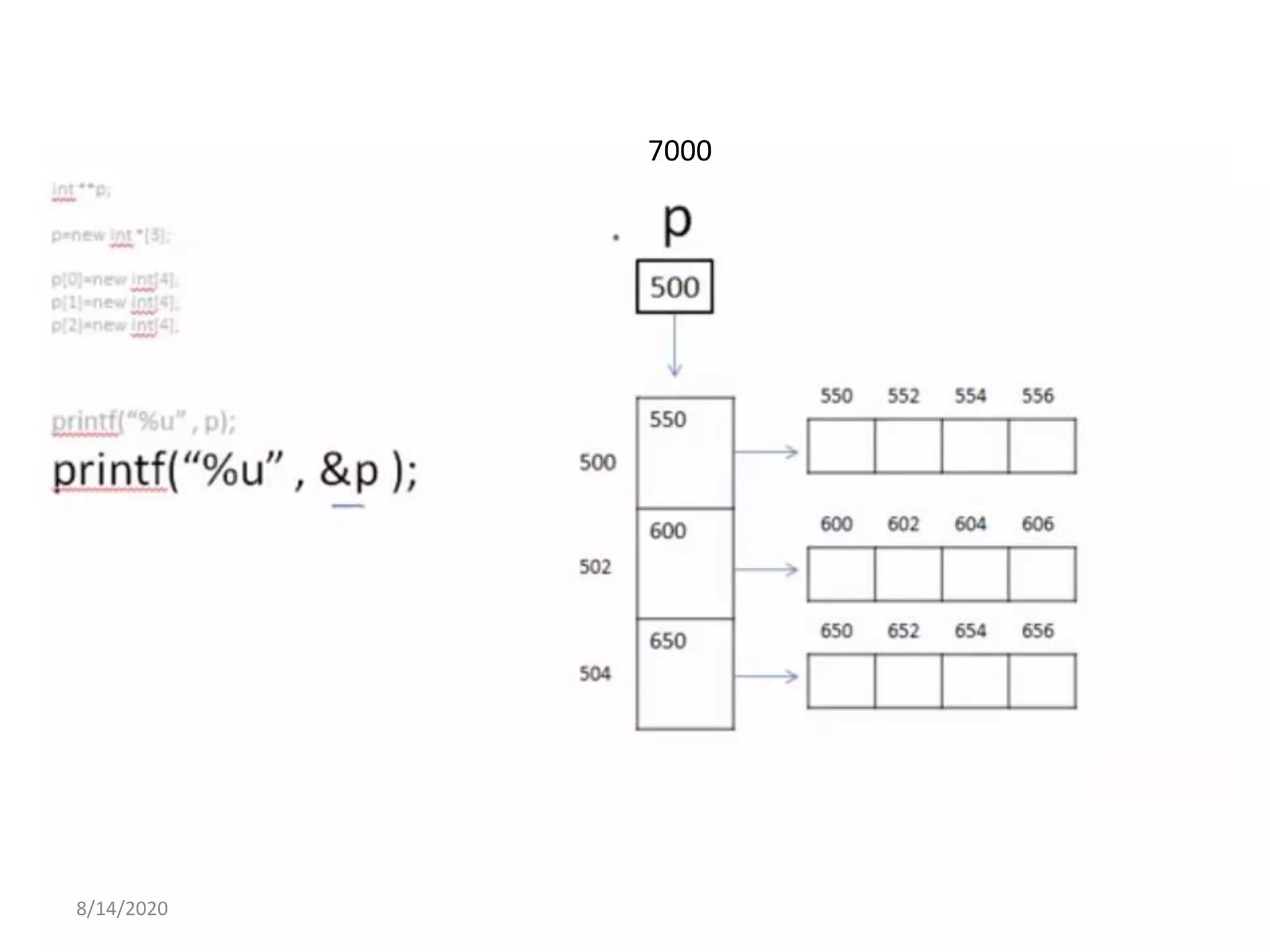
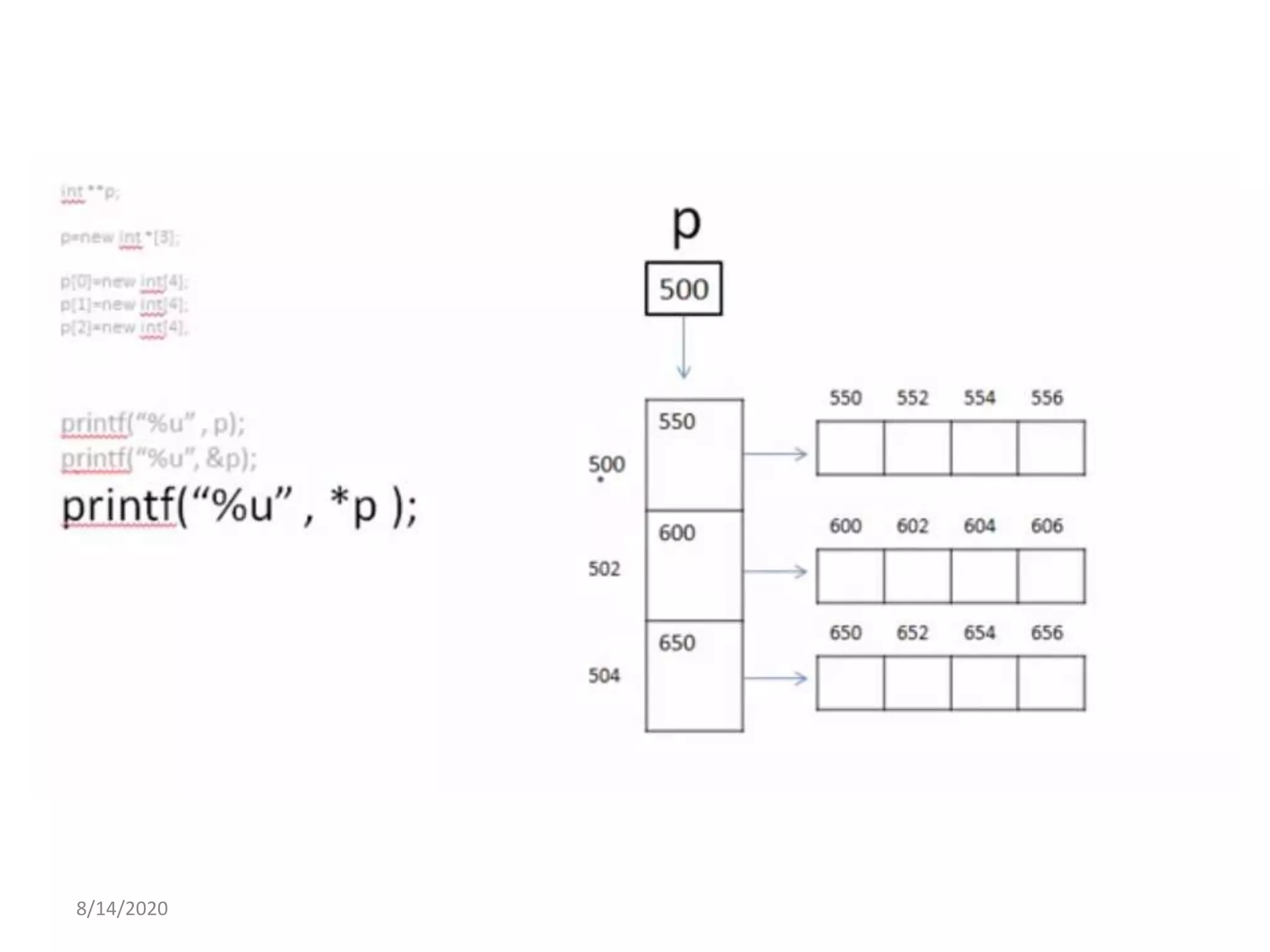
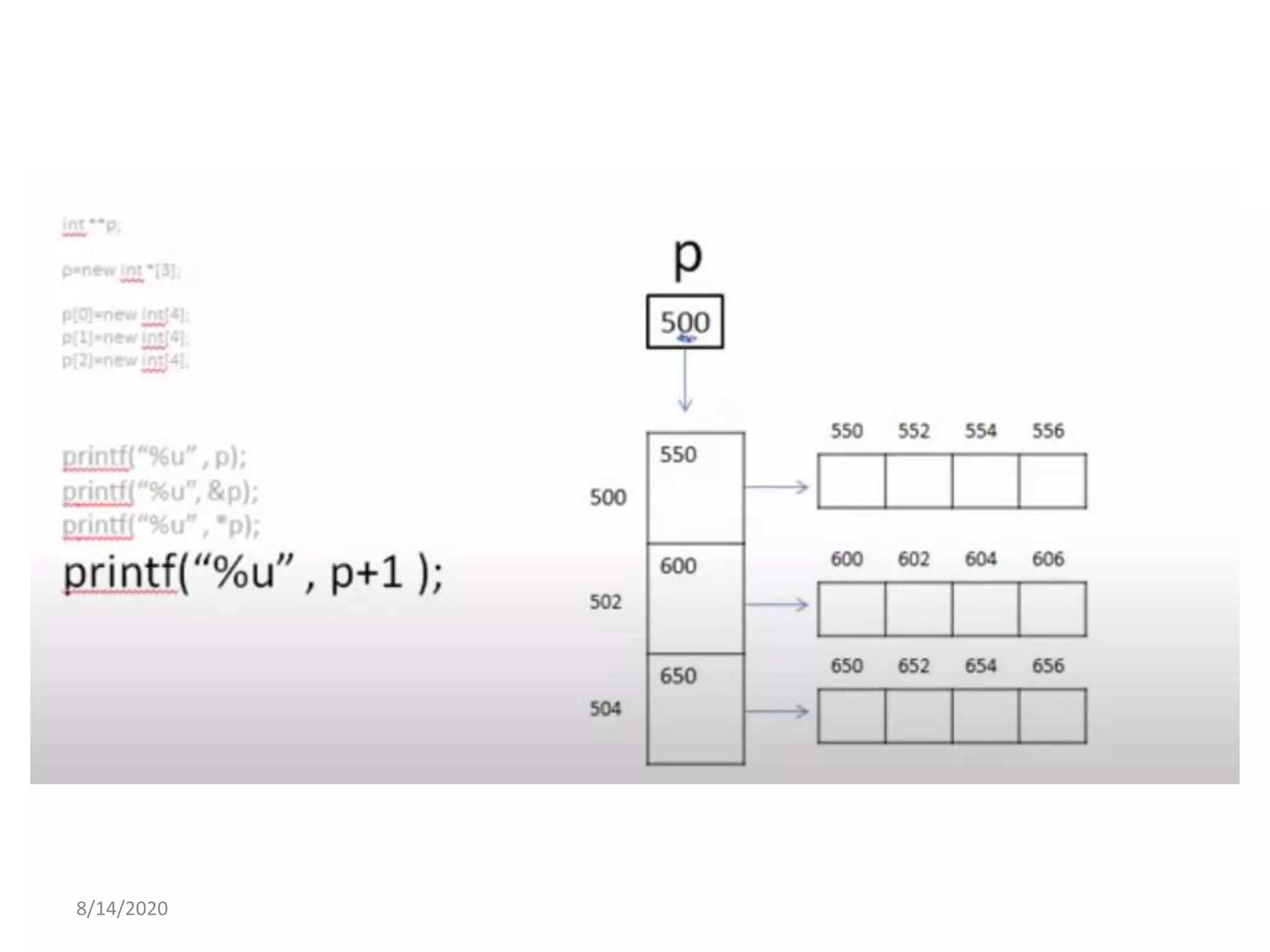
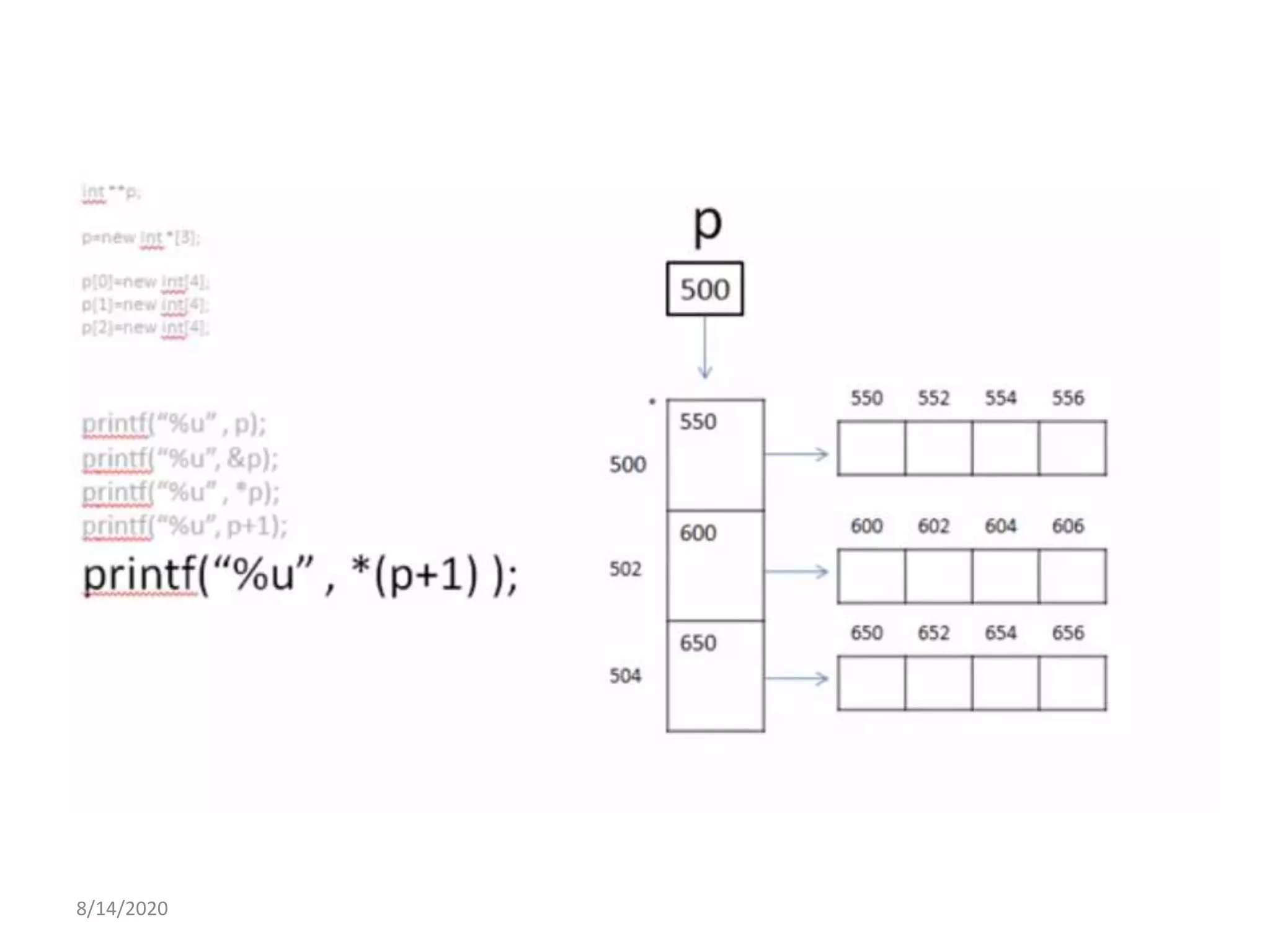
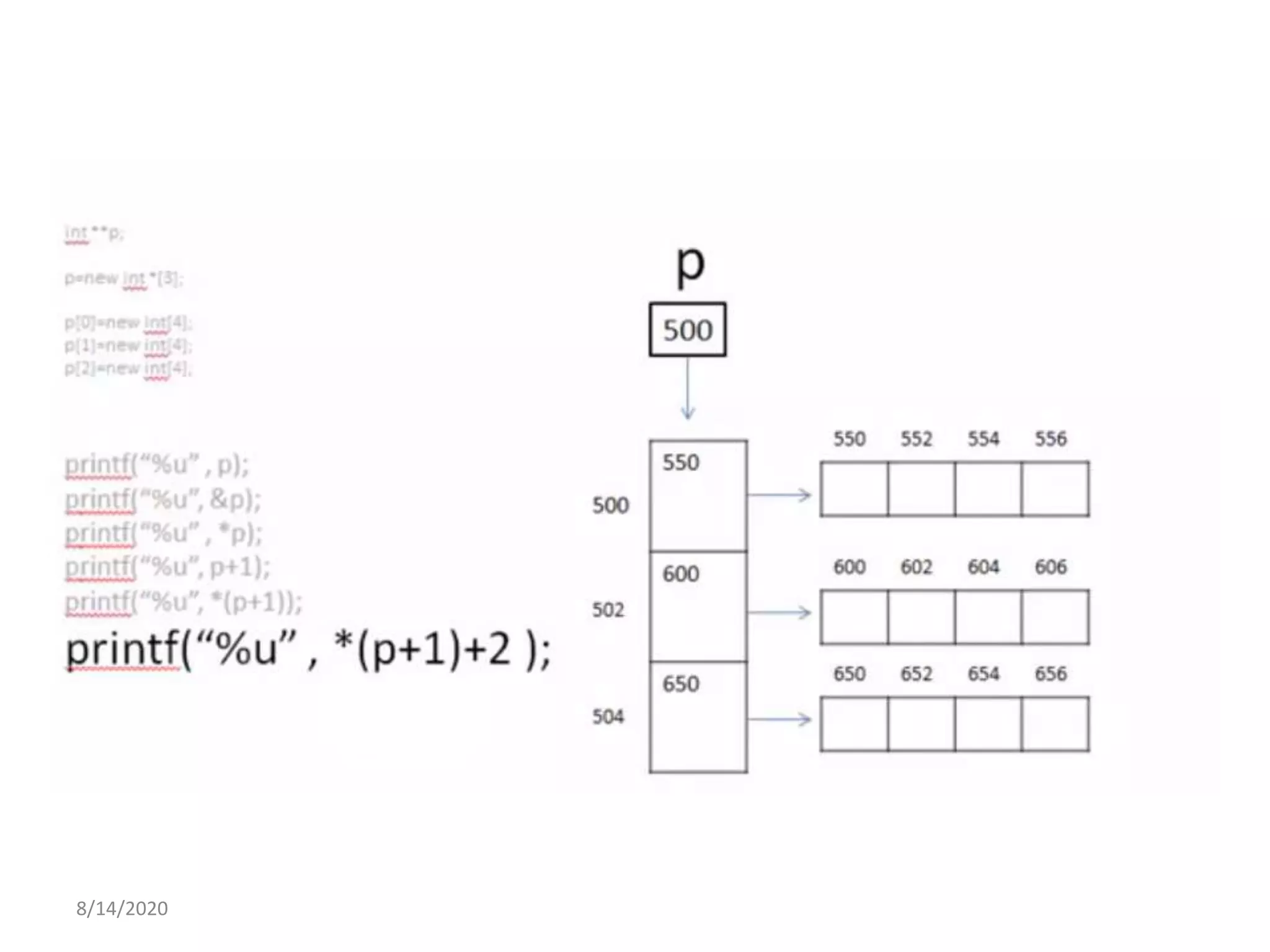
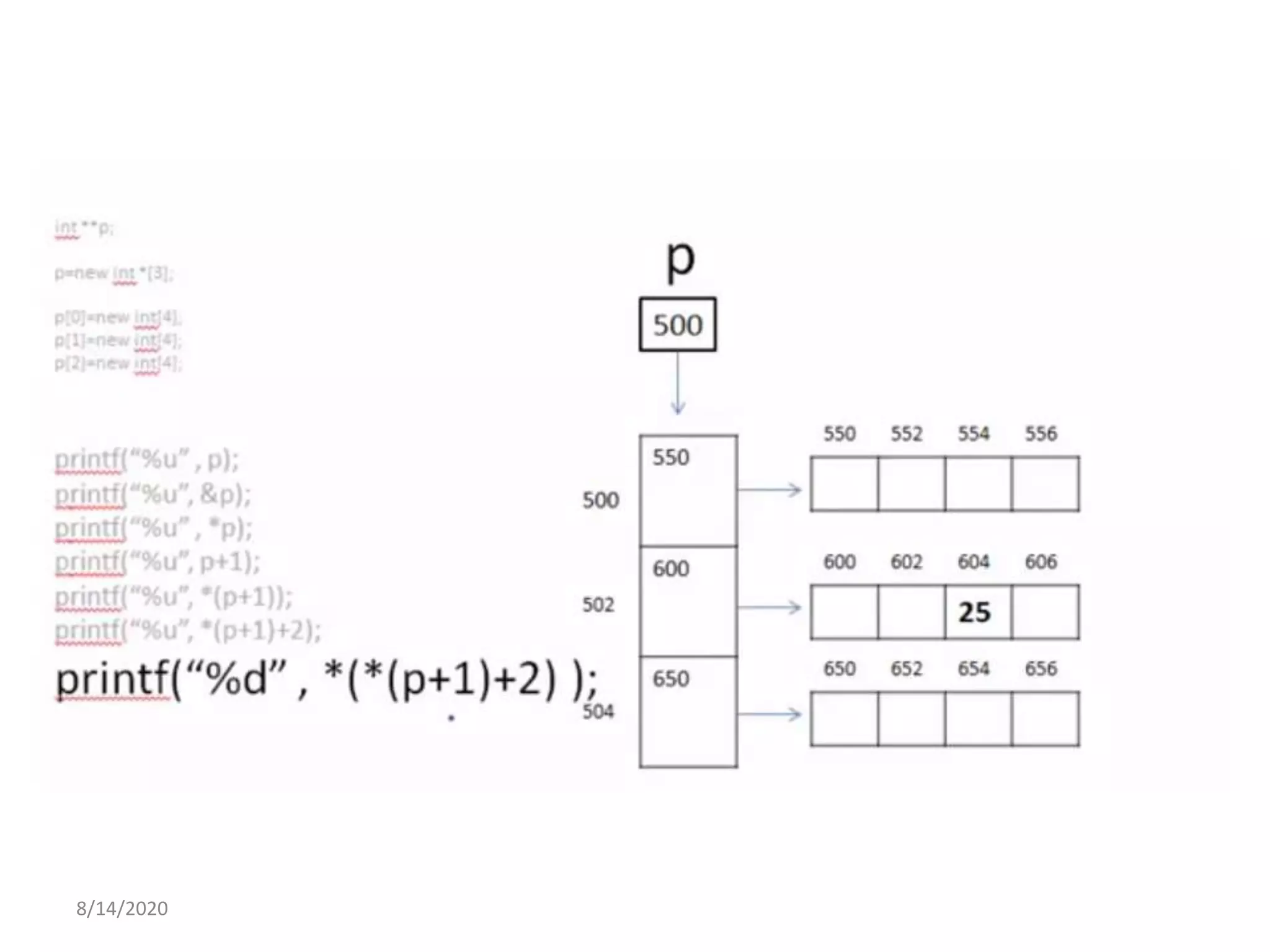
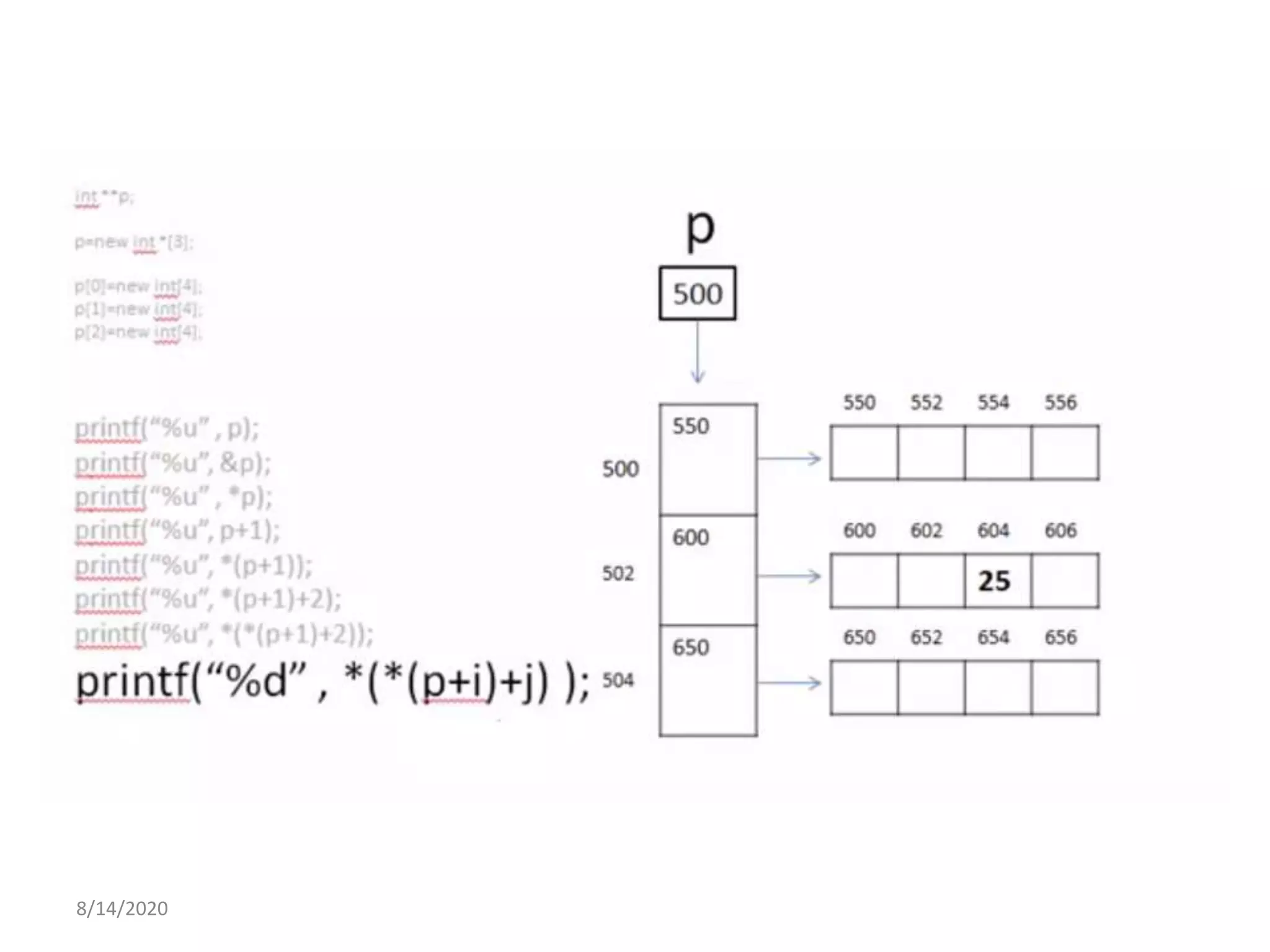
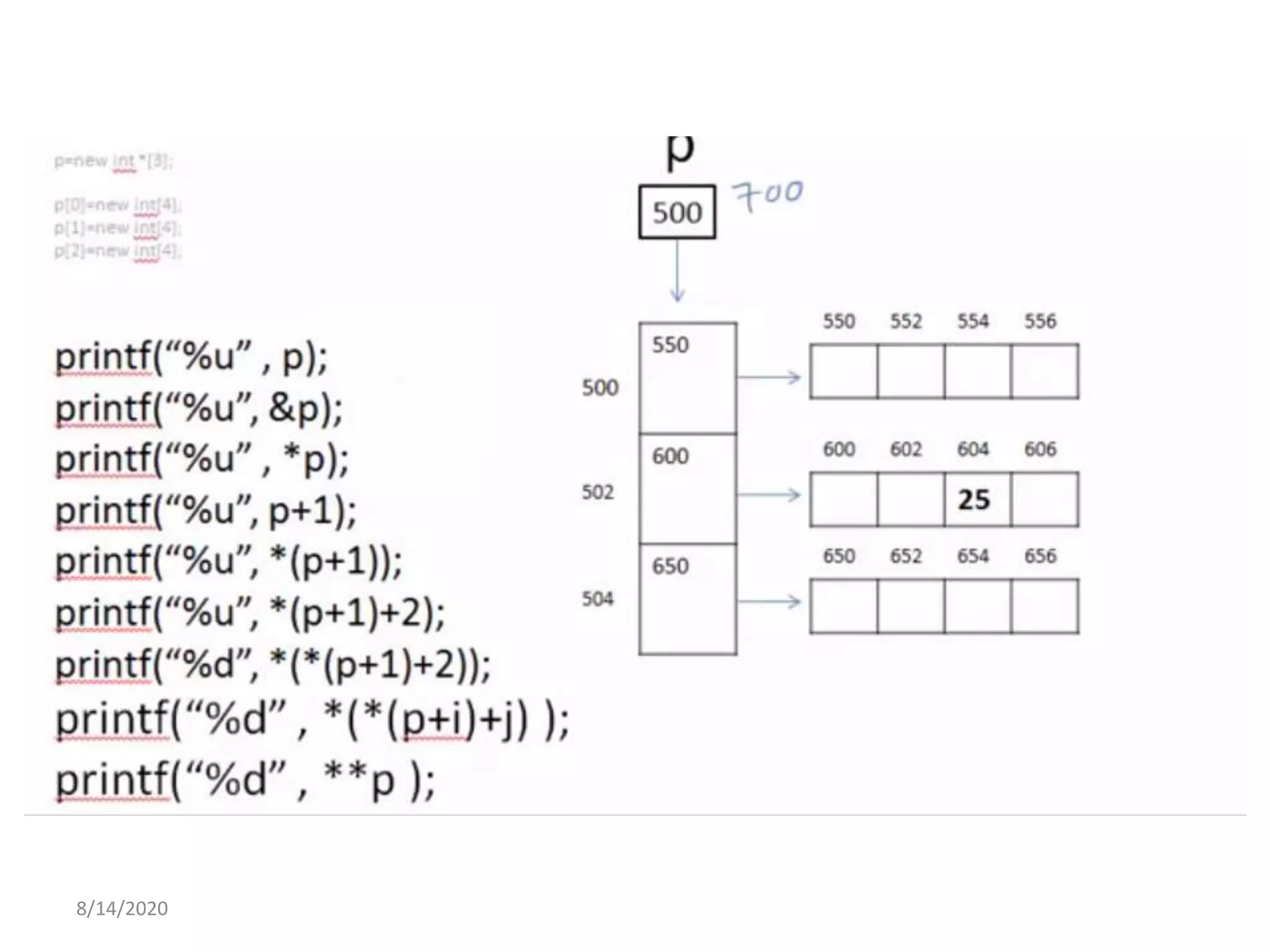
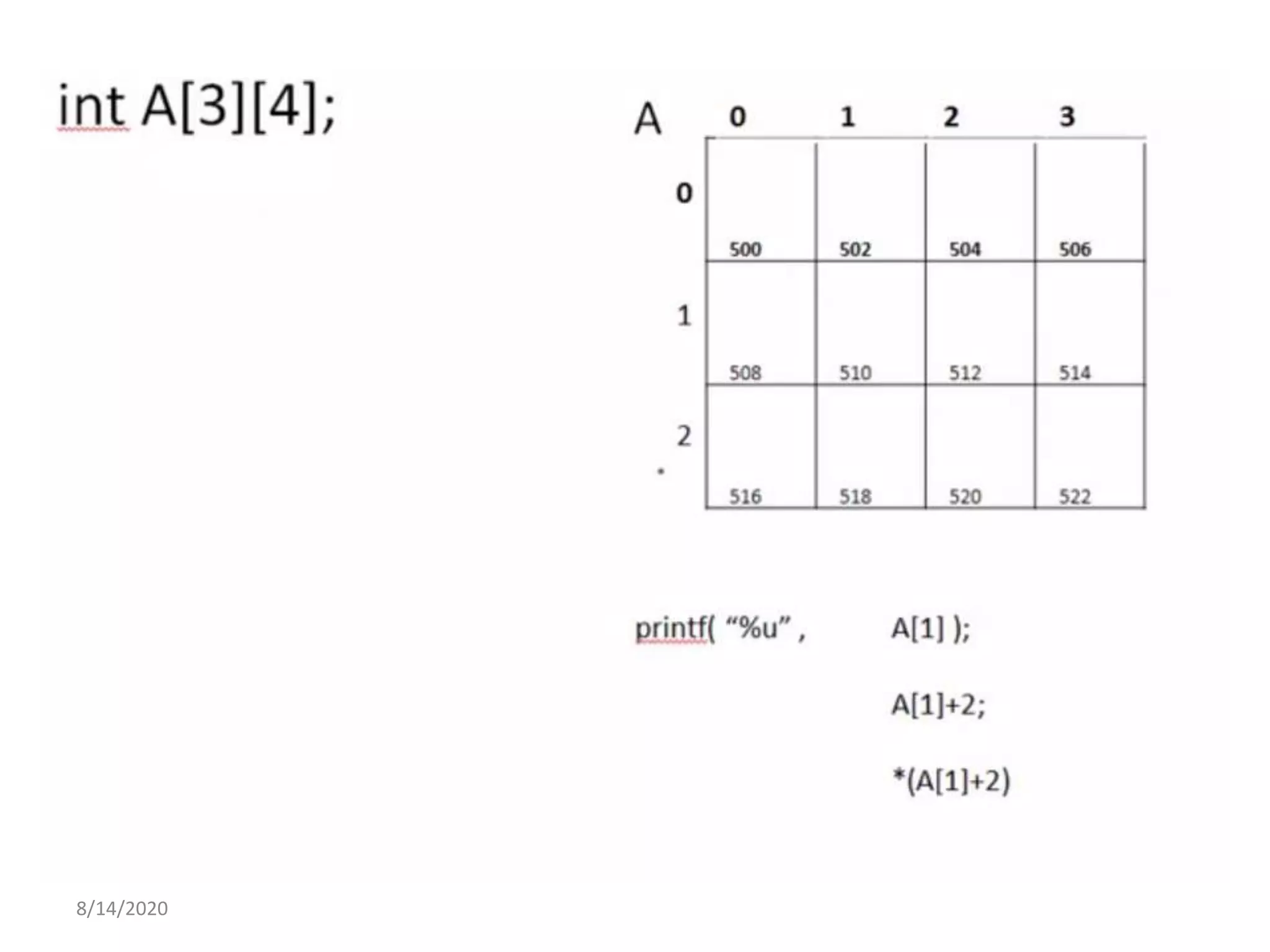
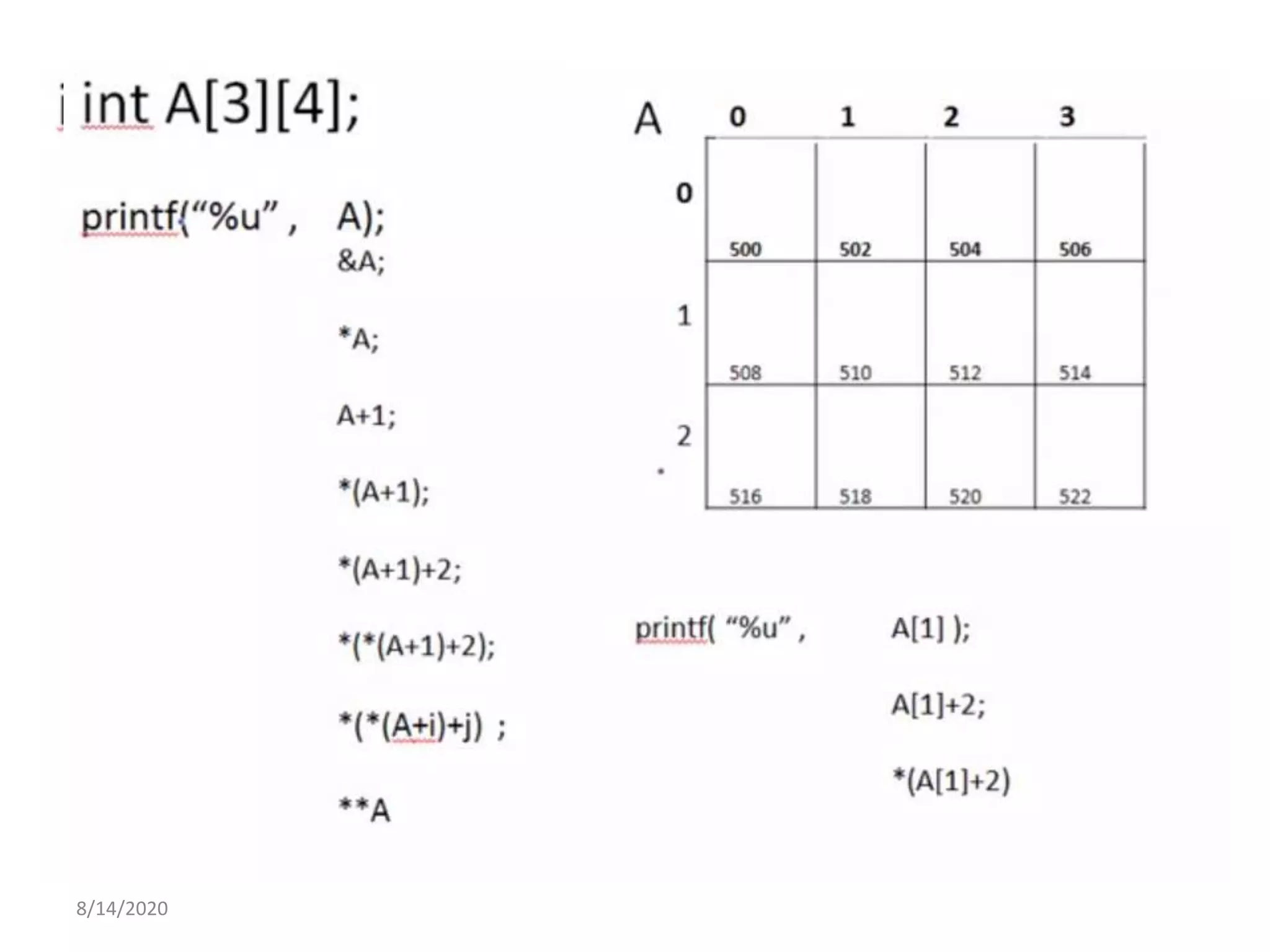

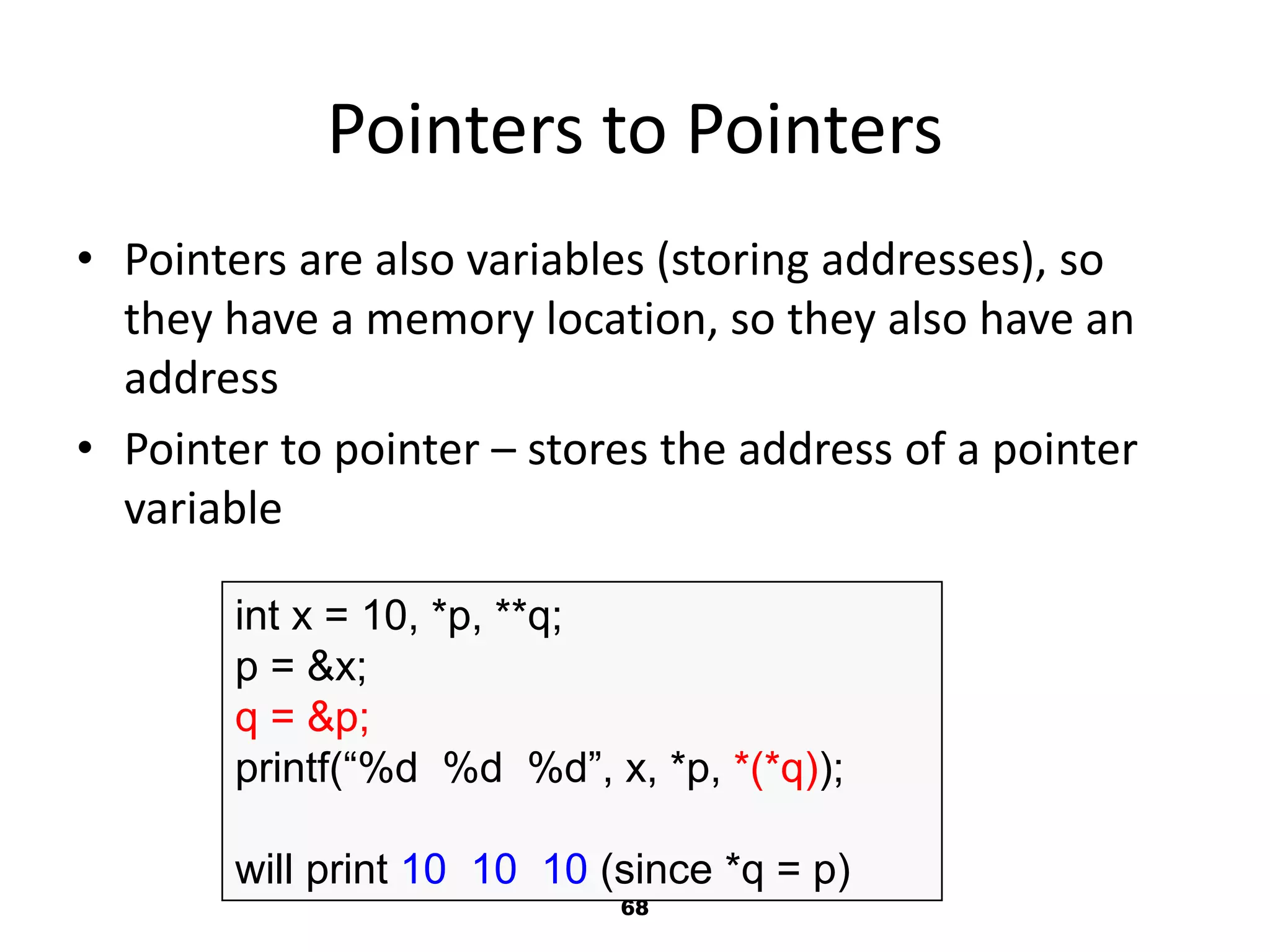
![69
Allocating Pointer to Pointer
int **p;
p = (int **) malloc(3 * sizeof(int *));
p
p[2]
p[1]
p[0]
int ** int *
int *
int *](https://image.slidesharecdn.com/1-200814074855/75/1-C-Basics-for-Data-Structures-Bridge-Course-69-2048.jpg)
![2D array
70
#include <stdlib.h>
int main()
{
int **array;
array = (int**) malloc(nrows * sizeof(int *));
for(i = 0; i < nrows; i++)
{
array[i] = (int*)malloc(ncolumns * sizeof(int));
}
{](https://image.slidesharecdn.com/1-200814074855/75/1-C-Basics-for-Data-Structures-Bridge-Course-70-2048.jpg)
![Arrays in C CS-2301, B-Term 2009 71
Arrays as Function Parameters
• void init(float A[], int arraySize);
void init(float *A, int arraySize);
• Are identical function prototypes!
• Pointer is passed by value
• I.e. caller copies the value of a pointer to
float into the parameter A
• Called function can reference through that
pointer to reach thing pointed to](https://image.slidesharecdn.com/1-200814074855/75/1-C-Basics-for-Data-Structures-Bridge-Course-71-2048.jpg)
![Arrays in C CS-2301, B-Term 2009 72
Arrays as Function Parameters (continued)
• void init(float A[], int arraySize){
int n;
for(n = 0; n < arraySize; n++)
A[n] = (float)n;
} //init
• Assigns values to the array A in place
– So that caller can see the changes!](https://image.slidesharecdn.com/1-200814074855/75/1-C-Basics-for-Data-Structures-Bridge-Course-72-2048.jpg)
